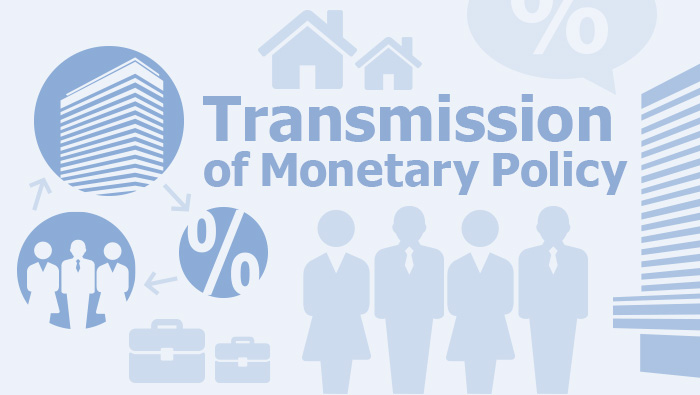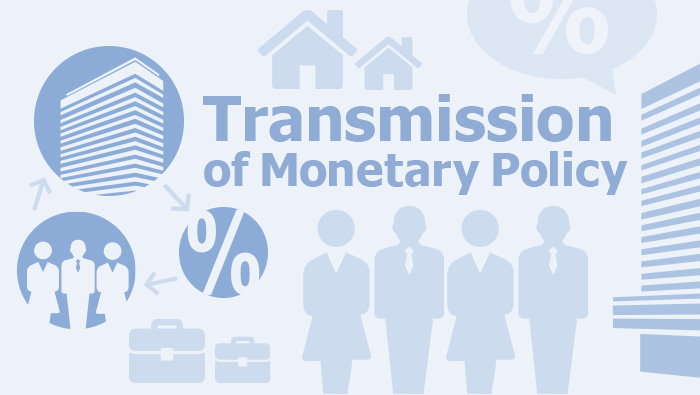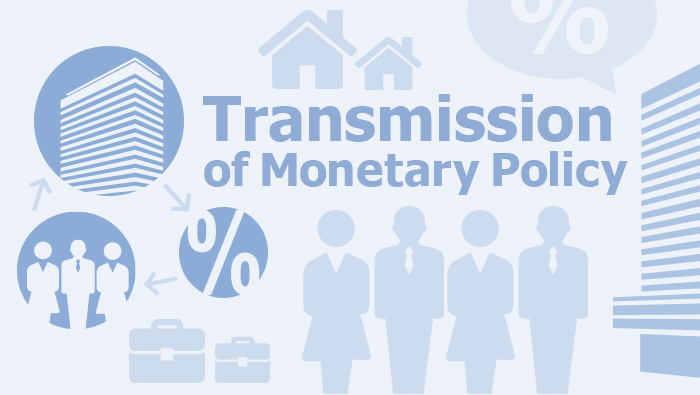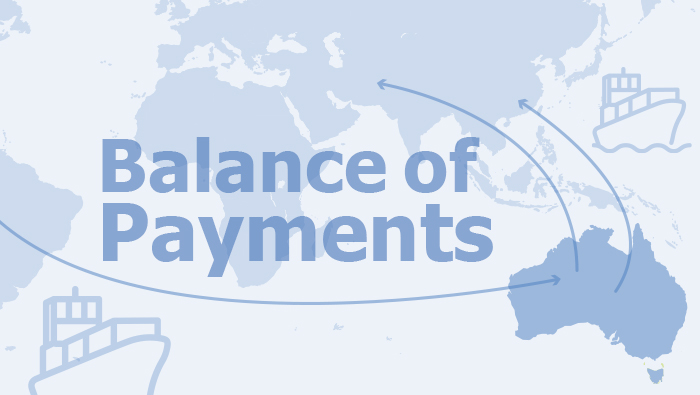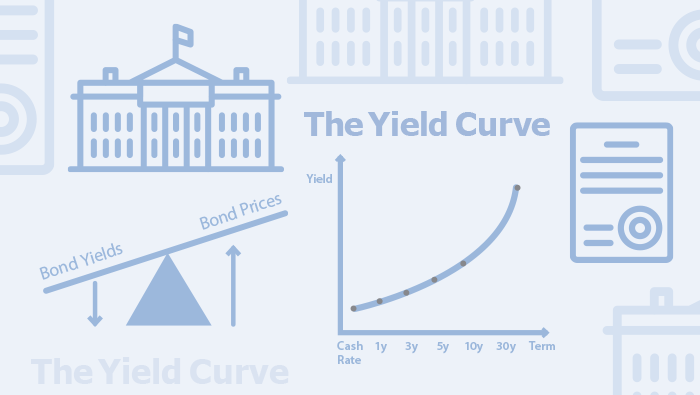Filter by Tag

How Useful are ‘Leading’ Labour Market Indicators at Forecasting the Unemployment Rate?
The RBA draws on a wide range of information to form our assessment of current labour market conditions and our outlook for the labour market. One of the key labour market indicators that the RBA monitors and forecasts is the unemployment rate. This article considers whether information contained in indicators that are typically viewed as signalling a change in conditions before it becomes apparent in the official labour market statistics – referred to here as ‘leading indicators’ – are helpful in forecasting the unemployment rate. It finds that information contained in measures of unmet demand, such as job advertisements and vacancies, and consumers’ expectations for unemployment are useful in informing the RBA’s near-term forecasts for the unemployment rate. Models containing these leading indicators can complement our existing framework for forecasting the unemployment rate, which also considers information such as developments in economic activity, insights from firms in the RBA’s liaison program and the experience of economies overseas.

Monetary Policy Transmission through the Lens of the RBA’s Models
Understanding how changes in the cash rate affect economic activity and inflation – so-called monetary policy transmission – is important for the RBA in pursuing its objectives of price stability and full employment. This article explains how the RBA uses its core models of the Australian economy to estimate the overall effects of policy, explore the different channels through which monetary policy transmits, and consider the economic outlook under alternative paths for monetary policy. The findings highlight that: the peak effect of policy is likely to occur after around one to two years; the exchange rate acts as an important transmission channel for policy; housing is a sensitive part of economic activity; and although individual households’ cashflow can be sensitive to changes in the cash rate, in aggregate it plays a smaller role in transmission.

Bank Funding in 2024
Bank funding costs are important in the transmission of monetary policy as they are a key determinant of the rates that households and businesses pay on loans. Bank funding costs increased only modestly in 2024, largely because the cash rate remained unchanged. The composition of banks’ funding shifted towards deposits over the same period, continuing a trend seen since the global financial crisis. Banks also managed the final maturities of the Term Funding Facility, issuing wholesale debt into favourable funding conditions. This article updates previous research published by the RBA on developments in the composition and costs of banks’ funding.

Access to Cash in Australia
Cash plays an important role in the community as a means of payment, store of value and a backup to electronic payment methods. Because of this, the RBA places a high priority on Australians continuing to have reasonable access to cash services. Since 2017, the closure of bank branches and bank-owned ATMs has led to increased distances to access cash services provided by banks, particularly in regional and remote areas. However, despite the significant reduction in bank-owned cash access points since 2017, the distance that most Australians have to travel to reach the nearest cash withdrawal point has not changed markedly in recent years. This is mainly because of the strong geographic coverage of Bank@Post and independently owned ATMs. As the number of locations where people can access cash has declined, some communities are vulnerable to a further withdrawal of cash services.

Bank Fees in Australia
This article updates RBA analysis of bank fees charged to Australian households, businesses and government. Over the year to June 2024, the value of total fees increased by around 5 per cent – the first increase in seven years. Fee income from households increased by 10 per cent, mainly reflecting fee income from credit cards and personal loans. A modest rise in fee income from housing loans also contributed. Fees charged to businesses and governments rose modestly due to growth in lending and an increase in fees charged on deposit accounts. Fees from merchant customers for providing payment processing services were unchanged after declining strongly over the previous four years. As a share of assets and deposits, fee revenue remained stable at a relatively low level.

Where Have All the Economics Students Gone?
The size and diversity of the economics student population has declined sharply since the early 1990s, raising concerns about economic literacy in society and the long-term health of the economics discipline. Interest in studying economics at university is low, even for those who studied economics in Year 12. This article investigates what students are choosing to study at university – if not economics – using new microdata from the Universities Admissions Centre. While Year 12 economics students tend to enrol in economics at university at much higher rates than other students, they are more likely to study a commerce and finance or arts and social science course than an economics course. Possible initiatives to increase the flow of high school students into university economics include tailored advocacy to emphasise the connections between economics and other preferred fields of study, and a greater focus on encouraging students to study economics subjects within a commerce and finance degree. It may also be worth exploring whether any lessons can be applied from initiatives to promote the take-up of STEM (Science, Technology, Engineering, Mathematics) courses, given the relative rise in enrolments in those subjects over recent years.

An Update on the Household Cash-flow Channel of Monetary Policy
The household cash-flow channel refers to the effect that changes in the cash rate have on households’ debt repayments and interest income, and the subsequent effect that these changes in available cash flow have on households’ spending decisions. This article presents updated evidence on the strength of this channel. In aggregate, the effect of a cash rate change on household disposable income is currently around its pre-pandemic average, after declining temporarily over the pandemic period due primarily to an increase in the share of fixed-rate mortgages. The effect of a cash rate change on aggregate household spending via the cash-flow channel also declined during the pandemic period but is estimated to have returned to around its pre-pandemic level.

Australia’s Sovereign ‘Green’ Labelled Debt
A significant amount of investment is required to transition to lower emissions in Australia, and financial markets are evolving to facilitate this. The inaugural Green Treasury Bond issued by the Australian Office of Financial Management in June 2024 marked a milestone in the Australian Government’s Sustainable Finance Strategy. This article reviews pricing of Australian sovereign and semi-sovereign labelled debt. There is some evidence of a decline in the historically positive price differential – the ‘greenium’ – between labelled and conventional bonds domestically. The evolution of this greenium has likely been influenced by the low initial supply of labelled bonds in Australia relative to demand but heterogeneity in these products and the relatively small sample size of labelled bonds complicates the identification of the greenium.

Behind the Great Wall: China’s Post-pandemic Policy Priorities
China is Australia’s largest trading partner so policy decisions in China can have a significant impact on the Australian economy, largely via its effect on Australia’s trade. While there remains considerable uncertainty about policymaking in China, this article describes how Chinese authorities have tended to approach economic policy choices and then considers China’s current economic challenges and their relevance to the Australian economy.

Robert Menzies and the Creation of the Reserve Bank
The Reserve Bank of Australia was created in 1959 by separating the commercial and central banking functions of the original Commonwealth Bank of Australia. An attempt in 1930 to establish a separate central bank in Australia failed when the enabling legislation was blocked in the Senate, but pressure by the private banks in the 1950s led to a renewed attempt to establish one. This attempt was opposed by then Governor of the Commonwealth Bank, Dr HC Coombs, who argued that the Bank’s commercial banking activities strengthened its central bank functions. At first, the Prime Minister, Robert Menzies, supported Coombs, but he changed his mind as political pressure for separation grew. Legislation to create a separate central bank was unsuccessful in 1957 and again in 1958 because the government lacked a majority in the Senate, but was passed in April 1959 following the general election in November 1958 in which the government won a majority in both houses of Parliament. This article discusses the events leading to the creation of the Reserve Bank as a stand-alone central bank and concludes that Menzies’ political acumen and role in the decision to support separation were crucial.

Do Housing Investors Pass-through Changes in their Interest Costs to Rents?
Interest rates and rents often move together. Some have argued that this positive relationship is evidence that higher interest rates have been a key driver of increases in rents over the past few years, due to leveraged housing investors passing through increases in their interest costs to their tenants. This article uses anonymised tax return data covering 2006/07–2018/19 to estimate the direct pass-through of interest cost changes to housing investors’ rental income. It finds small pass-through on average, even when interest rates are rising. The largest estimate suggests that direct pass-through results in rents increasing by $25 per month when interest payments increase by $850 per month (the median monthly increase in interest payments for leveraged investors between April 2022 and January 2024). Overall, the results are consistent with the view that the level of housing demand relative to the housing stock is the key driver of rents.

Developments in Wages Growth Across Pay-setting Methods
The dynamics of wages growth can differ across pay-setting methods. Understanding these differences is relevant for forecasting wages growth, and for assessing labour market conditions and inflationary pressures. Across each pay-setting method, wages growth picked up following the COVID-19 pandemic, but appears to have peaked. Wages growth is expected to continue to slow as the labour market eases, but the rate of easing is expected to vary across each method. This article explains recent developments in wages growth across pay-setting methods and the RBA’s disaggregated approach to forecasting wages growth, which includes considering the Fair Work Commission’s annual reviews of the minimum wages in modern awards.

Small Business Economic and Financial Conditions
The economic environment has been challenging for many small businesses over the past year. Growth in demand has slowed while input costs remain elevated, putting pressure on profitability – particularly for businesses reliant on discretionary consumer spending. Even so, profit margins remain around pre-pandemic averages for most small businesses. While access to credit remains a challenge for small businesses, many accumulated sizeable cash buffers during the pandemic, contributing to their resilience over the past few years. The unevenness in small business conditions has been reflected in some continuing to perform well, while others have had to draw down on cash buffers and an increasing share have entered insolvency. However, the number of insolvencies remains below its pre-pandemic trend on a cumulative basis. This article discusses small business conditions in Australia by drawing on information from the Reserve Bank’s 32nd Small Business Finance Advisory Panel, firm-level administrative data and other economic surveys.

The Reliability of Retail Payment Services
Australians are increasingly dependent on the continuous availability of electronic payment systems. As such, every incident or outage can potentially cause inconvenience or economic harm for end-users of those systems. This article presents insights into the reliability of payment systems using information from the RBA’s retail payment incidents dataset. The article notes that retail payment services have an average availability of at least 99.8 per cent each quarter. Online banking and fast payments services are most likely to be affected from outages, with root causes relating to issues with third parties, software and change management. Given the wide-reaching impact of outages, the effective management of operational risk in the payments system has never been more important.

Inflation-linked Financial Markets
Financial instruments with returns that are indexed to inflation allow market participants to hedge against or take positions on future inflation. Inflation-linked bond and swap markets in Australia are small and not very liquid relative to some other advanced economies. Nevertheless, pricing in these markets can provide valuable information about participants’ inflation expectations. Market measures of long-term inflation expectations have increased in many advanced economies since the COVID-19 pandemic. In Australia, this has brought expectations into closer alignment with the RBA’s inflation target.

Growth in Global Private Credit
Global private credit has grown rapidly over the past two decades, providing an alternative source of financing for businesses. This article introduces a new estimate of the size of private credit outstanding in Australia, based on data collected by the Australian Prudential Regulation Authority and London Stock Exchange Group. It is estimated that there is around $40 billion in private credit outstanding in Australia, which is around 2½ per cent of total business debt. Globally, the growth in private credit has raised concerns related to a lack of visibility over leverage and interlinkages, with regulators taking steps to strengthen oversight of the market. For Australia, the risks to financial stability appear contained for now, though regulators continue to monitor the sector closely.

Interpreting Chinese Statistics: Extracting Expenditure-side Quarter-on-quarter Growth Contributions
Components for GDP on the expenditure side of the national accounts – expenditure on consumption, investment (including inventories) and exports less imports – can provide an important read on the composition of demand. For China, these components are available in contributions to year-ended GDP growth, which provides insight into trends but makes it difficult to interpret how the economy is operating quarter to quarter. This article discusses a method for deriving contributions to quarter-on-quarter GDP growth using official data that allows for a better understanding of expenditure side drivers of quarter to quarter. The decomposition shows that strong growth in the March quarter of 2024 was driven by a large increase in net exports, but growth in the June quarter was mainly supported by investment, which likely reflected a large contribution from the change in inventories. This suggests that Chinese domestic demand remained sluggish in the first half of the year, despite the strong outcome for GDP growth in the March quarter.

The ABCs of LGFVs: China’s Local Government Financing Vehicles
China’s local government financing vehicles (LGFVs) are a key feature – and risk – of China’s infrastructure investment and financing environment. The scale of their debt has consequences for local governments’ fiscal sustainability and for capacity to continue financing infrastructure development. This article reviews progress and challenges in the transformation of LGFVs from local government off-balance sheet financing vehicles into market-driven entities, and estimates the scale and sustainability of their debt burdens at a regional level. Developments in the debt sustainability and investment outlook at China’s LGFVs potentially has implications outside of China due to the importance of LGFVs to financial stability and long-run growth in China.

Assessing Potential Output and the Output Gap in Australia
The output gap – the difference between actual output and potential output – is an important consideration for monetary policy as it is a measure of the extent of spare capacity in the economy. This article explains how RBA staff form an assessment of potential output and the output gap. We draw on a range of model-based estimates, capacity utilisation indicators and activity measures. Model-based estimates give a quantitative assessment of the level of spare capacity in the economy, but there is considerable uncertainty modelling unobserved concepts like potential output and the output gap. Ultimately, assessing spare capacity in the economy requires careful judgement in weighing up all available information, which the RBA sets out in its quarterly Statement on Monetary Policy.

Skills Match Quality Following the COVID-19 Pandemic
The strength in labour market conditions after the COVID-19 pandemic caused many individuals to either enter the labour market or to change jobs. These labour dynamics may have an influence on both recent and longer term productivity outcomes by affecting how well workers’ skills are matched to their new jobs. We use self-reported measures from the Household, Income and Labour Dynamics in Australia Survey to examine whether workers are better or less well matched to their jobs following the pandemic, and whether these skills matches may change in the future. Overall, based on the data, we find there is little evidence that the recent increase in labour mobility affected how well workers are matched to their jobs up until 2022, which suggests that this is not a key driver of recent slow productivity growth.

How the RBA Uses the Securitisation Dataset to Assess Financial Stability Risks from Mortgage Lending
The RBA’s Securitisation Dataset provides timely and detailed data on the individual mortgages underlying Australian residential mortgage-backed securities. This dataset complements other data sources the RBA uses to form its assessment of financial stability risks arising from mortgage lending. Understanding the representativeness of the dataset in relation to the broader mortgage market for key risk indicators helps to ensure that assessments are formed on a reliable basis. This article discusses the usefulness of the dataset for complementing the RBA’s broader monitoring and assessment of risks from housing lending. However, caution is needed when using the dataset to assess risks from new lending, and when monitoring arrears. Information from the dataset is one of a number of sources the RBA uses in monitoring financial stability risks and is combined with other sources of complementary data, including that provided by lenders to the Australian Prudential Regulation Authority.

Recent Drivers of Housing Loan Arrears
Housing loan arrears rates have increased from low levels since late 2022, with banks expecting them to rise a little further from here. Understanding what has been driving this increase is important for the RBA’s assessment of risks to financial stability and the economic outlook. Using loan-level data for variable-rate owner-occupier borrowers, we find that the main drivers have been challenging macroeconomic conditions and a modest ageing of the loan pool rather than risks specific to lending in a given year. Overall, highly leveraged borrowers have been most likely to fall into arrears since 2022, consistent with their generally higher arrears rates and greater vulnerability to challenging economic conditions. We assess that financial stability risks remain contained as these borrowers represent a relatively small share of total housing lending and very few loans are estimated to be in negative equity, where the loan amount exceeds the property resale value.

The Australian Repo Market: A Short History and Recent Evolution
In 2019, the repurchase agreement (repo) market became the second largest onshore short-term wholesale funding market in Australia. In addition to its size, the range of participants and diversity of collateral used to obtain funds under repo has grown in recent years. As a result, the repo market provides valuable information about conditions in short-term wholesale funding markets. This article describes the recent growth in the Australian repo market and discusses the pricing in the repo market relative to other benchmarks.

Assessing Full Employment in Australia
Full employment is a longstanding objective of monetary policy in Australia, alongside price stability. The Reserve Bank Board aims to achieve the maximum level of employment consistent with low and stable inflation in the medium term. This article explains how RBA staff form an assessment of how labour market conditions stand relative to full employment. RBA staff draw on a range of labour market indicators, model-based estimates and outcomes for wages growth and inflation. Any single indicator tends to provide a partial view of the labour market and the level of each indicator that is consistent with full employment can change over time as the structure of the economy evolves. Ultimately, assessing how close the labour market is to full employment requires careful judgement, which the RBA sets out in its quarterly Statement on Monetary.

Cash Rate Pass-through to Outstanding Mortgage Rates
The interest rate paid by outstanding mortgage borrowers increased by around 320 basis points between May 2022 and December 2023, around 105 basis points less than the cumulative increase in the cash rate over this period. This pass-through from cash rate increases to the average outstanding mortgage rate has been slower than in recent tightening episodes due to a high share of outstanding fixed-rate loans and the effects of heightened mortgage lending competition. The average outstanding mortgage rate will increase further as the remaining share of low-rate fixed-rate loans expire and reprice at higher interest rates. By the end of 2024, overall pass-through is expected to be comparable to earlier tightening episodes.

Bank Funding and the Recent Tightening of Monetary Policy
Banks’ funding costs have risen substantially since early 2022, driven by increases in the cash rate. This article explains how increases in the cash rate passed through to banks’ funding sources and how banks adjusted their funding mix. All non-equity sources of bank funding became more expensive over the hiking phase. Banks increased rates on term deposits by more than at-call deposits. Within at-call deposits, banks increased rates most for those savings accounts with conditions attached. Further, banks’ share of funding from term deposits grew and banks issued more debt as the Term Funding Facility started to mature.

The Effect of Least-cost Routing on Merchant Payment Costs
The RBA supports all merchants being able to choose the card network used to process debit transactions – a functionality known as least-cost routing (LCR) – with the aim of increasing competition and reducing the cost of accepting card payments. This article presents the RBA’s first estimates of the effects of LCR on a merchant’s cost of accepting debit card payments. Using merchant-level data, we estimate that the cost of accepting debit card transactions is nearly 20 per cent lower for merchants that have LCR turned on compared with those with LCR turned off, though the results differ across merchant size and choice of pricing plans. Once LCR for online and mobile wallet payments is widely available and taken up by merchants, the potential cost savings are likely to be even larger.

Financial Stability Risks from Non-bank Financial Intermediation in Australia
Risks to financial stability posed by the non-bank financial intermediation (NBFI) sector in Australia remain relatively contained. In comparison to overseas, the size of the NBFI sector (excluding superannuation) is relatively small, and its interconnectedness with the traditional banking sector has continued to decline. However, as has been shown in recent periods of stress in overseas markets, vulnerabilities in the NBFI sector can have implications for financial stability. In particular, there remains a risk of disorderly movements in some international asset markets, which could be exacerbated by the role of overseas NBFIs and spill over into Australian markets. Lending by Australian non-banks remains small as a share of outstanding credit, but has recently shifted towards riskier market segments and there is less detailed information about this lending than that done by prudentially regulated banks. As part of its monitoring of evolving risks in the NBFI sector, Australia’s Council of Financial Regulators has sought to improve visibility over domestic NBFIs’ activities, including in commercial real estate and the growing use of over-the-counter derivatives. This article provides an analysis of recent developments and evolving risks posed by NBFIs in Australia.

Assessing Physical Climate Risk in Repo-eligible Residential Mortgage-backed Securities
This article assesses physical climate risk in Australian residential mortgage-backed securities (RMBS) using two risk metrics. Based on these metrics, RMBS with higher levels of physical climate risk tend to be issued by small regional banks and credit unions. In addition, RMBS with higher physical climate risk do not appear to have additional credit enhancement. This could suggest that securitisation markets have yet to fully incorporate physical climate risk exposures into their assessments of RMBS, or that current climate risks are perceived to be small. However, the measure of climate risk used in this analysis is subject to several limitations and there is significant uncertainty about the future path and impact of climate change. This analysis is a first attempt at quantifying climate risk present in Australian RMBS and is part of ongoing work at the RBA to assess the effect of climate change on the financial system.

The Private Equity Market in Australia
The Australian private equity market has grown significantly for a number of years, particularly as the economy recovered from pandemic-related disruptions. Consistent with this growth, private equity deals involving Australian companies have increased in value, and private equity funds have raised larger amounts of capital from investors. Recently, however, private equity activity has declined substantially as borrowing costs increased. Over recent years, international private equity firms and investors have also increased their presence in the Australian market. This article discusses these developments in the Australian private equity market and considers the implications that a robust private equity market may have on Australian businesses and public capital markets.

Migration to Public Cloud: Risks and Regulatory Requirements for Clearing and Settlement Facilities
Public cloud technologies are increasingly being adopted by firms in the financial industry, including clearing and settlement facilities (CS facilities). Using public cloud offers a range of opportunities, but also presents risks for a CS facility’s operations. Because CS facilities play a critical role in supporting the smooth functioning of financial markets, they need to manage these risks to ensure that they continue to provide resilient and secure services. This article discusses the opportunities and risks for CS facilities in using public cloud, and outlines the related regulatory requirements that apply to CS facilities in their management of risks, consistent with their obligations to promote efficiency and stability in the financial system.

China’s Monetary Policy Framework and Financial Market Transmission
While it has evolved significantly over the years, China’s monetary policy framework continues to differ in some important respects to those in most advanced economies. In contrast to these economies, the People’s Bank of China makes significant use of quantity-based policy instruments, though interest rates now play a greater role than in the past. This article takes stock of China’s current monetary policy framework and its implementation, and discusses the transmission of price-based monetary policy instruments to market and retail interest rates in the economy. In doing so, this article sheds light on the implementation of monetary policy in the world’s second largest economy.

Urban Residential Construction and Steel Demand in China
Investment in Chinese urban residential real estate has been declining since 2021, and demand for steel by the sector has also slowed considerably. Despite this decline, overall demand for steel in China has been resilient due to strong growth in manufacturing and infrastructure investment, which looks likely to continue in the near term. This article provides a projection for urban residential construction in China to 2050, suggesting that construction in China has peaked and that demand for steel will decline in the longer term. This will weigh on overall steel demand in China, though there remains considerable uncertainty around the longer term outlook for demand from other sources.

Understanding the Post-Pandemic Demand for Australia’s Banknotes
Banknotes can be used to make legitimate payments, but they can also be hoarded, lost or used to facilitate transactions in the shadow economy. Understanding how banknotes are used can assist policymakers in responding to changes in payment behaviour and demand for cash. This article examines the value of banknotes used for each component of cash demand and how it has changed since the COVID-19 pandemic. The share of banknotes used for transactional purposes is estimated to have fallen by 5 percentage points since early 2020, while cash use in the shadow economy has increased slightly and the proportion of banknotes that are lost has remained unchanged. Overall, the majority of banknotes on issue are currently used for non-transactional purposes, consistent with pre-pandemic trends.

Developments in Income and Consumption Across Household Groups
Data on spending by income and mortgagor status suggest that growth in consumption has slowed significantly over the past year or so across most household groups as cost-of-living pressures have weighed on household finances. High inflation has decreased the purchasing power of all households and has had a relatively similar effect on real disposable incomes across different groups. While higher interest rates have also weighed heavily on the incomes of mortgagor households, many of these households have larger financial buffers, which have helped to offset the aggregate impact of interest rates on their spending so far. Resilient growth in nominal incomes has helped to support the spending of many lower income households and renters. Nonetheless, many of these households have lower financial buffers and so increases in their cost of living are more likely to have caused financial stress with all its adverse impacts on their wellbeing. Indeed, many households are experiencing acute challenges in the face of high inflation and higher interest rates. This article explores these recent developments in consumption across household groups.

Inflation Expectations and Economic Literacy
The level of community awareness and understanding of basic economic issues can influence a central bank’s ability to achieve its goals, such as by anchoring the public’s inflation expectations in line with its inflation target. This article draws on novel data from a large-scale survey of Australian adults about their knowledge of the Reserve Bank’s inflation target and their expectations for inflation over the short and medium term. Responses to these questions varied significantly according to the socio-demographic characteristics of the survey respondents and their level of economic literacy. The results of this study point to the need for clear communication about the Bank’s inflation objectives that caters for variations in awareness and understanding of economic issues across different socio-demographic groups.

What Do Firms Tell Us About the Inflation Outlook?
The Reserve Bank’s liaison program collects information from firms in Australia about current economic conditions and their expectations for future conditions, including their own prices. Firms’ observations provide a timely read on inflation. Over the past six months, firms have generally expected their prices growth to continue to moderate, but on average to remain above the Bank’s inflation target range of 2–3 per cent. Firms have reported that large cost increases over recent years are still flowing through to some parts of the supply chain and have indicated that this is the primary driver of their decisions to increase prices at a faster-than-normal rate. Slower growth in demand and increased competition are expected to result in a further slowing in growth of firms’ prices over coming quarters.

Bank Fees in Australia
This article updates Reserve Bank research on bank fees charged to Australian households, businesses and government. Over the year to June 2023, total fees charged by banks fell by around 4 per cent. Fees comprised just 5 per cent of banks’ total revenue over the period, while over 50 per cent came from interest earnings on loans. By customer, most fees were paid by large businesses, as was the case in previous years. However, fee earnings from businesses and government declined over 2022/23, in part reflecting lower merchant services fees. On the other hand, fee income from households increased, driven by higher revenue from charges on credit cards related to international travel and increased revenue from break fees on term deposits.

The Committed Liquidity Facility: 2015–2022
The Reserve Bank’s Committed Liquidity Facility (CLF) was used from 2015–2022 to enhance the resilience of the banking system to times of liquidity stress. Banks must hold high-quality liquid assets (HQLA), including government securities, as a buffer against liquidity stress. Historically, the low level of government debt in Australia limited the amount that banks could reasonably hold, and so the CLF was introduced in 2015 as an alternative. Over time, however, the amount of government debt on issue and system liquidity increased significantly due to fiscal and monetary policy measures implemented to support the Australian economy during the COVID-19 pandemic. In response to this significant increase in HQLA, the size of the CLF was gradually reduced so that it was no longer in use at the beginning of 2023. This article provides an overview of the CLF and discusses its introduction and why it is no longer in use.

Recent Developments in the Semi-government Bond Market
The market for Australian state and territory government bonds is often referred to as the market for ‘semis’. Semi-government bonds are a key source of government funding and they form an important share of high-quality liquid assets in the Australian financial system. The COVID-19 pandemic, and state and territory government policies implemented in response, increased the size of the semi-government bond market significantly. During this period, there have also been compositional changes in the types of issuance and investors of semis. This article explores recent trends in the issuance, ownership and pricing of semi-government bonds.

Recent Trends in Australian Productivity
Productivity growth enables rising living standards and is needed for real wages growth to be consistent with stable inflation over the medium term. Prior to the COVID-19 pandemic, productivity growth in Australia and other advanced economies had been low, because business dynamism, job mobility, global trade and policy reform all slowed. Over the past few years, the pandemic and other shocks distorted productivity outcomes. Even if these shorter term fluctuations wash out, the longer term (and apparently structural) weakness in productivity growth could persist. This would have implications for the rate of nominal wages growth that is consistent with inflation returning to the target band. This article discusses the trends in Australia’s productivity growth before, during and since the pandemic and the implications for the economic outlook.

Adoption of General-purpose Technologies (GPT) in Australia: The Role of Skills
General-purpose technologies (GPT) have the potential to transform how we work, to change the skills we need and to drive productivity growth. It is therefore important to understand the conditions that lead to the successful adoption of GPT. Using a novel database on the adoption of cloud computing and artificial intelligence/machine learning by Australian-listed firms, this article finds that the COVID-19 pandemic led to a short-lived surge in adoption of cloud computing technologies. In addition, there is evidence that profitable adoption is more likely to occur in firms where the Board has members with relevant technological backgrounds, and that firms adopting GPT are more likely to seek staff with related skills. These findings highlight the importance of workers’ and managers’ skills in technology adoption, and the impact this can have on productivity growth.

Green and Sustainable Finance in Australia
Australia has committed to achieving net zero greenhouse gas emissions by 2050. This will require significant amounts of investment and financing as we move away from a carbon-intensive economy. Prior to the COVID-19 pandemic, productivity growth in Australia and other advanced economies had been low, because business dynamism, job mobility, global trade and policy reform all slowed. Over the past few years, the pandemic and other shocks distorted productivity outcomes. Even if these shorter term fluctuations wash out, the longer term (and apparently structural) weakness in productivity growth could persist. This would have implications for the rate of nominal wages growth that is consistent with inflation returning to the target band. This article discusses the trends in Australia’s productivity growth before, during and since the pandemic and the implications for the economic outlook.

Economic Literacy in Australia: A First Look
Those who are economically literate make more informed economic choices, better understand the world around them and can influence public discourse and the actions of government. Given the importance of economic literacy for individuals and society at large, the Bank commissioned a large-scale survey of Australian adults testing their understanding of some core macroeconomic topics. The results enabled compilation of simple literacy scores that represent the Bank's first attempt to gauge economic literacy in Australia. Being male, older, of higher income, having a degree, and having studied or being engaged with economics are associated with higher scores. By contrast, persons aged 18–24 years, unemployed persons and those without a degree had the lowest scores. Questions that tested abstract macroeconomic concepts appeared more difficult than those about more relatable issues that draw on lived experience. These findings speak to the importance of simple and targeted communication by the Bank and other policymakers to support the understanding of economic concepts across the community.

Recent Developments in Small Business Finance and Economic Conditions
The economic environment has become more challenging over the past year, including for small businesses. High inflation, slower growth of demand and difficulties in finding suitable labour have contributed to declines in small business conditions and confidence. Demand for business finance has slowed, consistent with the rise in interest rates and slower growth in economic activity. Small businesses report that accessing funding through banks remains a challenge. The article considers these recent developments, drawing on the discussions of the Small Business Finance Advisory Panel and information from the Bank’s liaison program.

Financial Stability Risks from Commercial Real Estate
Current conditions in global commercial real estate (CRE) markets are challenging. Weak leasing demand and higher interest rates are weighing on CRE owners’ loan servicing ability and asset values. Globally, appetite to lend to CRE investors is softening and signs of financial stress are emerging especially among office owners in the United States. While CRE markets are less likely to pose risks to the banking system given improved lending standards following the global financial crisis (GFC), systemic risks are higher in jurisdictions where the banking system is more exposed to CRE, such as in the United States and Sweden. Australian CRE markets face similar challenging fundamentals, though signs of financial stress appear low at present and systemic risks are lower than in the past. This is a result of Australian banks’ reduced CRE exposures as a share of their total assets and tighter lending standards since the GFC. However, risks would increase in the event of a sharp economic downturn or if systemic risks were to spill over from overseas CRE markets.

New Timely Indicators of Wages Growth
Monitoring developments in wages is important for assessing the inflation outlook, as labour costs are a major factor in firms’ pricing decisions. Over recent years, the Reserve Bank has developed a suite of timely wages indicators based on surveys and administrative data. Together with externally developed indicators, these measures provide a fuller view on wages developments ahead of the release of official statistics. This article explains the methodology behind these indicators and what they reveal about labour costs in Australia.

Financial Health and Employment in the Business Sector: A Non-linear Relationship
This article examines how increased financial stress in the business sector negatively impacts employment through the behaviour of firms. It highlights the non-linearity of the relationship between firms' financial health and employment and identifies thresholds that can serve as useful reference points when assessing the resilience of the business sector and risks to macrofinancial stability. Using data at the individual business level, this article finds that employment outcomes are significantly worse for firms with a profit margin below 5 percent or with a cash surplus (i.e. cash assets plus cash profit) of less than 10 per cent relative to sales.

Reading through the Lines: Price-setting Indicators from Earnings Calls
This article explores how information in earnings call transcripts from Australian firms can contribute to the Reserve Bank's understanding of their price-setting behaviour, as a complement to information gathered from the Bank's liaison program. A large language model is used to process and analyse earnings call transcripts and construct new sentiment indicators for input costs, demand, prices and supply shortages from them. These indicators, starting in 2007 and updated to capture the latest August earnings season, provide useful information about economic conditions and price-setting behaviour, including about developments during the recent period of unusually high inflation.

Measuring Government Bond Turnover in Australia Using Austraclear Data
This article provides new estimates using Austraclear data for monthly turnover ratios for Australian Government Securities (AGS) and semi-government bonds (semis). Previous Reserve Bank estimates used Austraclear data that included repo transactions, as acknowledged at the time. In November 2021 Austraclear implemented a change to reporting standards that excluded repo transactions more effectively. This change allows for more accurate estimates of turnover for AGS and semis. The new turnover estimates are considerably lower, suggesting repo activity was a significant part of the previous estimates. The new estimates, with repo transactions excluded, better align with survey data on turnover published by the Australian Office of Financial Management.

Climate Change and Financial Risk
Climate change, and the actions taken in response to it, introduces both risks and opportunities for financial institutions. The Reserve Bank continues to monitor the build-up of climate-related financial stability risks, including how these risks are priced and who ultimately bears the physical and transition risks arising from climate change. Globally and in Australia, most analysis has found limited direct effects of climate risks on the financial system as a whole. Those that do arise fall unevenly, with the largest risks concentrated in specific geographic regions and sectors. Much of the analysis to date has been exploratory in nature and analytical frameworks continue to develop. This reflects, in part, the complexity of bringing together elements of climate science, economics, finance and regulation. Commonly identified areas for improvement relate to data availability and coverage, consistent disclosure requirements, and the design of scenarios used to assess climate-related risks to financial stability. Ongoing engagement and coordination between the public and private sectors, domestically and internationally, will be required to effectively monitor and ultimately manage the physical and transition risks arising from climate change.

New Insights into the Rental Market
This article draws out new insights into the private Australian rental market using a new large administrative dataset of rental properties, which is an input to the Consumer Price Index (CPI). CPI rent inflation has picked up recently. Since 2021, rents have increased across inner-city and regional areas throughout all the states. Rent increases have also become more common and larger on average – particularly for the 2–3 per cent of properties each month that have a change in tenants. This is in contrast with the experience during the COVID-19 pandemic where rents fell in many suburbs close to central business districts but increased in regional areas, driven by a preference shift among many households for more space and net population flows.

Consumer Payment Behaviour in Australia
The results of the Reserve Bank’s 2022 Consumer Payments Survey show that consumers continue to shift from using cash to electronic payment methods – a trend that was accelerated by the COVID-19 pandemic and consumers’ preference towards using debit and credit cards and making payments online. Consumers are also increasingly using more convenient payment methods, particularly contactless card payments, by tapping their card or phone. Cards are now used for most in-person payments, even for small transactions that used to be made mostly with cash.

Cash Use and Attitudes in Australia
The 2022 Consumer Payments Survey reveals that the ongoing decline in cash use in Australia has accelerated since the COVID-19 pandemic. The share of in-person transactions made with cash halved, from 32 per cent to 16 per cent, over the three years to 2022. The decline in cash use was particularly pronounced for smaller payments; cash is now used less than electronic methods for all transaction sizes. The demographic groups that traditionally used cash more frequently for payments – such as the elderly, those on lower incomes and those in regional areas – saw the largest declines in cash use. Privacy and security concerns with electronic payment methods continued to be the main reason for needing cash, while barriers to using electronic payment methods have become less important since 2019.

Estimating the Relative Contributions of Supply and Demand Drivers to Inflation in Australia
Inflation has increased substantially since mid-2021. Understanding the relative contributions of supply and demand factors is important for determining the appropriate monetary policy response; a central bank may at least partly ‘look through’ the price effects of a supply shock if it is expected to be short lived and inflation expectations remain anchored. This article attempts to disentangle and explore the contributions of supply and demand factors to the recent inflationary episode, using three approaches. Similar to the experience of other advanced economies, our estimates suggest that supply-side factors have been the biggest driver of recent inflation outcomes in Australia. These supply-side factors have been persistent, with their contribution to inflation growing over 2022, leading to an extended period of inflation being above target and concerns that inflation expectations could become de-anchored. That said, demand has also played an important role.

Leverage, Liquidity and Non-bank Financial Institutions: Key Lessons from Recent Market Events
Non-bank financial institutions (NBFIs) can pose risks to financial stability due to their size, complexity and global interconnectedness. Vulnerabilities present in some NBFIs include high levels of leverage, liquidity mismatches and weaknesses in risk management practices. This article discusses how these vulnerabilities have been exposed in multiple episodes overseas since early 2020, resulting in dysfunction in some financial markets and losses for some NBFI counterparties. While Australian markets and institutions were largely unaffected by these episodes, regulators in Australia and overseas remain vigilant to the potential future risks posed by the sector.

Syndicated Lending
Syndicated lending involves a group of lenders providing a single loan to one borrower. This article considers the purposes and workings of syndicated loans in the Australian market, and the advantages of this type of lending for both lenders and borrowers. It finds that syndicated loans are a significant source of funding for large Australian businesses and for borrowers with large financing needs, especially as such loans are often more accessible and flexible than public debt markets. For lenders, syndication allows them to diversify their exposures, as well as to monitor loans and negotiate covenants efficiently.

Recent Developments in the Cash Market
Following the implementation of unconventional monetary policy measures during the COVID-19 pandemic, liquidity in the banking system rose significantly. This led to a fall in cash market activity and a decline in the cash rate to below the cash rate target. Despite the high level of liquidity – as measured by Exchange Settlement (ES) balances – some banks have continued to borrow in the cash market. Over the past year or so, this borrowing has picked up somewhat and the cash rate has risen modestly to be slightly closer to the target, largely owing to an increase in the concentration of ES balances. As the Reserve Bank’s unconventional policy measures unwind and ES balances decline, activity in the cash market is likely to increase further. The extent of any future pick-up in activity, and the level of the cash rate relative to the target, will be influenced by the distribution of ES balances across banks.

Economic Developments in the South Pacific
Australia has long played a significant role in the regional economy of the South Pacific. This article provides an overview of economic developments in the region, with a focus on recent shocks and medium-term growth challenges. The region’s heavy reliance on external demand meant that South Pacific economies were severely impacted by the COVID-19 pandemic and other concurrent challenges. Expansionary economic policies implemented by governments and central banks, alongside international aid and lending, supported the region through the acute phase of the pandemic. While a recovery is underway, the South Pacific will continue to face challenges to its medium-term growth and development, particularly via high debt levels and climate change.

Correspondent Banking in the South Pacific
Worldwide, many financial institutions make use of correspondent banking services to connect to the global financial system. This article examines the withdrawal of global financial institutions from the provision of correspondent banking services to the South Pacific and the implications for countries in the region. The available evidence suggests that South Pacific nations, like many small island economies globally, have seen a larger-than-average decline in the provision of these services. The decrease in the availability of correspondent banking services appears to be most pronounced for smaller local banks and in the major global currencies. While the available evidence suggests that South Pacific countries have been able to manage this decline thus far, the remaining correspondent banking services are becoming increasingly stretched and further withdrawal may cause financial sector disruption.

Renters, Rent Inflation and Renter Stress
Around one-third of all Australian households rent. Renter households tend to be younger, have lower incomes and less wealth than owner-occupiers. Renter households are also more likely than mortgagors to experience financial stress, although the incidence of financial stress among renter households has declined over the past decade. The rental market is tight and rents have increased more strongly of late, compared with the modest increases in average rents over the 2010s. For some renters, strong growth in incomes will have helped limit the deterioration in housing affordability, although there will be others who will struggle to afford the rent increases. This suggests that affordability will have worsened for some renters, and, in combination with other rising cost-of-living pressures, this is likely to be contributing to financial stress.

Fixed-rate Housing Loans: Monetary Policy Transmission and Financial Stability Risks
Fixed-rate borrowing increased significantly during the COVID-19 pandemic, which has delayed the effect of the higher cash rate on borrowers’ cash flows. A key issue for the economic outlook, and by implication financial stability, relates to the ability of borrowers with fixed-rate loans to adjust to substantially higher borrowing costs when their fixed-rate mortgages expire. Borrowers with fixed-rate loans have had a considerable period to adjust their finances to prepare for the increase in their mortgage payments and many appear to have similar savings to borrowers on variable rates. However, on some metrics fixed-rate loans have higher risk characteristics than variable-rate loans. With many fixed-rate mortgages expiring in the period ahead, the Reserve Bank will continue to closely monitor the implications for household consumption and financial stability.

A New Measure of Average Household Size
This article introduces a new, timely measure of average household size (AHS) – a key determinant of underlying demand for housing – using the data from the ABS monthly Labour Force Survey. The average number of people living in each household has declined from around 2.9 in the mid-1980s to around 2.5 since the early 2000s. More recently, the AHS declined to historical lows of a little below 2.5 people per household. This was driven by changes in Sydney and Melbourne during the pandemic, which were more exposed to health restrictions, lockdowns and changes in migration flows from overseas.

Non-bank Lending in Australia and the Implications for Financial Stability
Non-bank lenders help to finance some forms of economic activity that might otherwise go unfinanced by traditional banks. However, as the global financial crisis demonstrated, non-bank lending activities have the potential to undermine financial stability, in part because they are less constrained by regulation. Risks to financial stability can include the amplification of credit and asset price cycles, increased competition for borrowers that prompts banks to weaken their own lending standards, and the potential of stress spilling over into the prudentially regulated financial system. Unlike in some other economies, non-bank lending accounts for a small share of total credit in the Australian economy and banks have relatively limited exposure to non-bank lenders. Non-bank lending therefore poses little systemic risk to financial stability in Australia at present. However, it has grown strongly in recent years, particularly for housing. Regulators and policymakers therefore need to continue monitoring developments in this space. This article provides a primer on non-bank lending in Australia, focusing on lending for housing and the potential risks to financial stability.

The Cash-use Cycle in Australia
The use of cash for day-to-day transactions has been declining for many years and this has implications for all aspects of the cash system. This article illustrates the interrelationships between consumers’ use of cash for transactions, access to cash services and merchants’ acceptance of cash as a payment mechanism through a ‘cash-use cycle’. Recent data suggest that the cash-use cycle in Australia is functioning adequately at present. However, the ongoing adequacy of cash access is vulnerable to further withdrawal of access points; this issue warrants regular monitoring.

Can Wage-setting Mechanisms Affect Labour Market Reallocation and Productivity?
Productivity growth has slowed in Australia and overseas in recent decades, with negative implications for wages and incomes. In Australia, at least part of this slowdown reflects the fact that more productive firms have grown and attracted workers more slowly than in the past. This article considers whether the increased use of industry-wide wage agreements could help to explain this slowdown. It finds that in sectors with greater use of industry-wide agreements, the relationship between firm-level wages and productivity tends to be weaker. This weaker relationship between productivity and wages seems to feed through to firm growth, with more productive firms seemingly less likely to attract staff and grow. While many factors can affect the choice of wage-setting mechanism, these results suggest that aggregate productivity growth and living standards could be stronger when firms are incentivised and able to compete for workers.

Bank Fees in Australia
This article updates previous Reserve Bank research on bank fees charged to Australian households, businesses and government. Over the year to June 2022, total fees charged by banks through their domestic operations were little changed from the previous reporting period. Strong growth in business credit added to fee income in the year, while overall fee income from households declined amid heightened lending competition in the housing market. Lending growth continued to outpace growth in fee earnings, and total fee income as a share of banks’ incomes decreased slightly.

Developments in Banks' Funding Costs and Lending Rates
Banks’ funding costs rose over 2022, driven by increases in the cash rate and in expectations for the future path of the cash rate. In turn, lending rates have increased considerably for the first time in over a decade. The increases in the average rate charged on all outstanding loans was limited by the large share of fixed-rate housing loans and ongoing competition in housing lending. This article updates previous research published by the Reserve Bank on developments in banks’ funding costs and lending rates.

Developments in Foreign Exchange and Over-the-counter Derivatives Markets
This article discusses the key results from the 2022 Triennial Central Bank Survey of Foreign Exchange and Over-the-counter Derivatives Markets. Global activity in foreign exchange (FX) markets increased over the three years to April 2022, driven by increased turnover of FX swaps with short maturities and trading between dealers. The volume of FX trading activity in the Australian market also grew, although this was largely driven by increased trading between related parties. The Australian dollar was the sixth most traded currency globally, down from fifth in 2019. Turnover of over-the-counter (OTC) interest rate derivatives declined globally, reflecting the transition away from the London interbank offered rate (Libor); however, activity increased in the Australian OTC interest rate derivative market, reflecting an increase in turnover of interest rate swaps. For Australian banks, the value of OTC derivatives increased sharply, driven by interest rate and commodity derivatives.

Foreign Currency Exposure and Hedging in Australia
The 2022 Survey of Foreign Currency Exposure confirms that Australian entities’ financial positions, in aggregate, are well protected against a depreciation of the Australian dollar. The composition of Australia’s foreign currency denominated assets and liabilities means that, overall, Australian entities have a net foreign currency asset position. This has increased over a number of years, largely reflecting an increase in the value of foreign currency equity assets associated with superannuation funds. Meanwhile, the banking sector accounts for a large share of Australia’s foreign currency liabilities because of their offshore funding activities. However, the bulk of the banking sector’s foreign currency debt liabilities have been hedged. After hedging, the sector has a net foreign currency asset position and no significant currency mismatches, both of which reduce the risks associated with a large depreciation of the Australian dollar.

Reassessing the Costs and Benefits of Centrally Clearing the Australian Bond Market
This article considers the costs and benefits of centrally clearing the Australian bond market, in light of developments in the market since the Reserve Bank’s last review in 2015. On balance, our analysis suggests that changes to the size and structure of the Australian bond market have strengthened the case for central clearing. These changes include substantial growth in the size of the market, increased participation of non-resident investors and increased complexity resulting from the growing number of bilateral clearing arrangements. Central clearing would simplify the market structure and could yield other benefits, especially in times of stress. For example, our estimates suggest multilateral netting has the potential to lower settlement obligations by $60 billion per day. This is more than can be achieved with bilateral netting. Further, market resilience and liquidity conditions might also be improved by multilateral netting as interbank participants’ balance sheet constraints are reduced. The key challenge for a potential central counterparty would be to develop a sufficiently wide network of products and participants to achieve overall benefits. Some participants face a lower incentive to join and in their absence the potential benefits from central clearing would be reduced.

HC Coombs: Governor of Australia's Central Bank 1949–1968
Dr HC Coombs was Governor of Australia’s central bank for nearly 20 years. His appointment followed significant roles in Australia’s war-time administration and post-war reconstruction, where he was an architect of Australia’s international full employment policy, known as the ‘Positive Approach’. When appointed Governor of the central bank in 1949, Coombs remained committed to the pursuit of full employment. Influenced by Keynes, he sought to maintain aggregate demand and supply in ‘reasonable balance’, something the Reserve Bank continues to do today. After retiring from the Bank in 1968, Coombs continued to promote the arts in Australia and the rights and welfare of First Nations Australians. He became a senior adviser to the Whitlam Government and chaired the Royal Commission on Australian Government Administration – a fitting conclusion for someone often described as the nation’s greatest public servant. This article considers the life and career of HC Coombs, and complements the series of records that have been released on Unreserved.

Economic Literacy: What Is It and Why Is It Important?
One of the core objectives of the Reserve Bank’s public education program is to improve economic literacy. While the social benefits of economic literacy are well established, defining what is meant by this term is not straightforward and has been the subject of debate over many decades. This article explores the meaning of ‘economic literacy’. To arrive at a working definition, it discusses the economic principles that should be understood for someone to be considered economically literate, along with the topics they should be familiar with and the ways of thinking that we would expect them to display. In doing so, it distinguishes between economic and financial literacy. The article concludes by posing questions for future research on how economic literacy in Australia might be measured and how it might be supported.

The Recovery in the Australian Tourism Industry
The Australian tourism industry is gradually recovering from the COVID-19 pandemic that brought global travel to an unprecedented standstill. International tourism fell sharply in early 2020 and has only slowly recovered since restrictions were lifted in the first half of this year. By contrast, domestic tourism spending bounced back quickly as local restrictions eased and is now above pre-pandemic levels. This article outlines the recovery in the Australian tourism industry following the pandemic, the challenges the industry has faced in reopening, and the uncertainties around the outlook for the tourism industry over the next few years.

New Measures of Financial Stress from Non-traditional Data
Household and business financial stress has significant implications for financial stability and monetary policy. However, high-frequency and timely indicators of emerging signs of financial stress are not readily available. To address this information gap, the Reserve Bank has developed novel measures of financial stress based on news, search and social media data. This article describes these new metrics and how they can capture meaningful changes in financial conditions and, in some cases, predict traditional measures of financial stress, such as loan arrears. Going forward, these indices will continue to be monitored for early signs of financial difficulties.

Stablecoins: Market Developments, Risks and Regulation
Stablecoins – a type of crypto-asset designed to maintain a stable value – have grown in popularity over recent years. Market developments, however, have highlighted the risks stablecoins can pose to investors, particularly if they are not fully backed by high-quality liquid assets. Stablecoins currently pose limited risks to the broader Australian financial system, but this could change if they become more widely used in the future – for example, in payments and other financial services. As such, regulators across the world are seeking to bring greater clarity to the regulatory treatment of stablecoins, not only to manage risks but also to support innovation in the market. This article considers the rise of stablecoins, the risks they pose and the response of regulators so far.

The RBA and AOFM Securities Lending Facilities
Australian Government Securities (AGS) play an important role in the transmission of monetary policy given that yields on these securities provide a benchmark for other interest rates across the economy. The Bank has a large amount of AGS and ‘semi-government’ bonds issued by state and territory borrowing authorities (semis) on its balance sheet as a result of purchases to support the economy through the COVID-19 pandemic. To support the efficient functioning of these markets, the Bank operates a securities lending facility (SLF) from which eligible counterparties can borrow AGS and semis; the Bank also operates an SLF on behalf of the Australia Office of Financial Management (AOFM). The use of these SLFs picked up noticeably following the end of the Bank’s yield target and bond purchase program. This article discusses these facilities in detail, including why market participants might use them and the recent increase in borrowing.

The Reserve Bank's Liaison Program Turns 21
In 2001, the Reserve Bank established its liaison program – a formal program of economic intelligence gathering, through which Bank staff meet frequently with firms, industry bodies, government agencies and community organisations. The program is systematic in its approach to collecting and assessing information, and the intelligence obtained is a useful complement to published sources of data and economic models in informing the Bank's assessment of economic conditions. In addition, the information gathered is available in near real time, making it useful for ‘nowcasting’ and understanding the implications of short-term shocks to the economy. This article looks at the process of liaison, the nature of the information collected and how it has been used over its 21 years of operation.

The Current Climate for Small Business Finance
Economic conditions for small and medium enterprises (SMEs) have been relatively strong since the second half of 2021, and demand for business finance is high. However, the environment remains challenging and uncertain, and interest rates on loans for SMEs are rising from historical lows. Small businesses continue to report that accessing funding through banks is a challenge, although new lenders and products are providing alternative sources of finance. The article considers these recent developments, drawing in particular on the discussions of the Small Business Finance Advisory Panel, which met in July this year.

The Cost of Card Payments for Merchants
The average cost for a merchant to accept a card payment has declined over recent years. However, consumers are making more payments with cards than ever before, which is raising total payment costs for merchants. Smaller merchants also face notably higher card payment costs per transaction than larger merchants. To strengthen competition and help reduce the cost of accepting card payments, the Reserve Bank wants all merchants to be able to choose which card network is used to process debit transactions – a functionality known as least-cost routing (LCR). While considerable progress has been made, the payments industry has more work to do to provide and promote LCR. The Bank is taking further action to ensure that LCR will be available for all merchants.

Trends in Australian Banks' Bond Issuance
Bonds account for around 10 per cent of Australian banks' funding, and bonds issued by banks account for about half of the non-government bond market. The Australian bank bond market is primarily driven by the five largest banks, which issue most of the banks' bonds. This article explores trends in Australian banks' senior unsecured bond issuance since the global financial crisis. The COVID-19 pandemic, and the policies implemented in response, significantly influenced bank bond issuance. In particular, banks' bond issuance declined for a period as they accessed funds through the Reserve Bank's Term Funding Facility; however, issuance has increased recently as the economy has recovered from the initial phase of the pandemic.

Sentiment, Uncertainty and Households' Inflation Expectations
High inflation expectations can have significant consequences for the economy as a whole, and can become self-reinforcing. It is therefore noteworthy that inflation expectations of Australian households are persistently higher than actual inflation. This is partly because when consumers are more uncertain about the economy, they tend to report their inflation expectations in round multiples of 5 per cent, which is higher than inflation has averaged over recent decades. In addition, there is a negative relationship between consumer sentiment and inflation expectations. This article examines the relationship between sentiment, uncertainty and households' inflation expectations in Australia, and considers how this uncertainty might be addressed. It suggests that targeted and clear communication about inflation can help to reduce uncertainty and provide consumers with a better understanding of the path of future inflation.

Wage-price Dynamics in a High-inflation Environment: The International Evidence
Headline inflation is at multi-decade highs in most advanced economies, reflecting a confluence of factors. Wages growth has also increased, but not to the same extent. This article examines the risk that a wage-price spiral could emerge in these economies by looking at historical experience and the various factors that could make a spiral more likely. It finds that the current episode has many differences to the 1970s, when a wage-price spiral did emerge. Central banks are now focused on ensuring inflation remains low, medium-term inflation expectations remain anchored and structural changes in the labour market reduce the likelihood that wages and inflation chase each other. Nonetheless, authorities need to be mindful of the risk of a wage-price spiral.

Evolving Financial Stress in China's Property Development Sector
Financial stress in China's property development sector has attracted significant attention because it may have systemic consequences for financial stability in the broader Chinese economy. Though China Evergrande Group, one of the country's largest and most leveraged property developers, has received a considerable share of this attention, risks in the sector were building for some time prior to Evergrande's default in 2021. This article reviews contributing factors to the sector's financial fragility and explores the characteristics of the financial stress faced by major developers. It also considers some likely consequences of this fragility for the Chinese property development sector and beyond.

What Can You Do With Your Damaged Banknotes?
Through the Reserve Bank's damaged banknote claims service, members of the public can ask for their damaged banknotes to be assessed and the value redeemed. Removing poor-quality banknotes also supports the Bank's aim of ensuring that the public has confidence in Australian banknotes as a means of payment and a secure store of wealth. This article provides an overview of the service, its key users and the circumstances in which claims are lodged. While the value of the majority of claims is relatively low, claims containing banknotes damaged in storage can be significant, reflecting the role of cash as a secure store of wealth.

Recent Trends in Banknote Counterfeiting
Counterfeiting of Australian banknotes is approaching its lowest level in a decade. Several factors are playing a role in this decline, including fewer transactions being made with cash, COVID-19-induced lockdowns, the rollout of a new banknote series with upgraded security features, and law enforcement continuing to interrupt counterfeiting operations. This article quantifies the effect of some of these factors, while exploring the broader trends in banknote counterfeiting.

Job Mobility in Australia during the COVID-19 Pandemic
The COVID-19 pandemic has led to large disruptions to the Australian labour market. Initially, workers were less likely to change jobs because of the uncertain economic environment, the decrease in advertised jobs and the JobKeeper program that helped workers remain attached to their employers. More recently, job mobility has increased as workers have caught up on planned job changes or been encouraged by the strong labour market to change jobs, particularly in high-skilled roles experiencing strong labour demand. This article reviews developments in job mobility in Australia through the pandemic, and compares these outcomes to other advanced economies. It also examines the potential implications for wages; a high rate of job mobility tends to be associated with higher wages growth in a tight labour market, as employers in sectors with high demand for labour compete for new staff or raise wages to retain staff.

First Nations Businesses: Progress, Challenges and Opportunities
Australia's First Nations business sector is growing at a pace of around 4 per cent per year, fuelled by growing demand. However, many budding First Nations entrepreneurs still face substantial barriers to establishing a successful business. This article discusses the need to develop trust for effective policy environments that support First Nations businesses, and describes how ongoing challenges of access to financial, social and symbolic capital continue to test First Nations business owners. Despite this, there are opportunities for First Nations businesses in the forms of Indigenous preferential procurement policies, and First Nations-specific business development programs as well as financial products and services. It is not yet clear how effective the policy environment is in addressing access and discrimination challenges, nor how widespread the benefits are to First Nations businesses. As such, the article concludes by discussing the role of data development for accountability.

Household Liquidity Buffers and Financial Stress
The ratio of household liquid assets to household income in Australia has increased substantially over recent decades, at both the aggregate and individual household levels. The increase in buffers has been most pronounced for households with mortgage debt and among indebted households – with those with the most debt typically holding the highest liquidity buffers. This is important from a financial stability perspective as liquidity buffers allow households to smooth their spending and maintain their debt payment obligations in the event of adverse shocks to their cash flows; as such, they are a key factor in reducing household financial stress. This article considers these trends and finds that, to the extent that rising liquidity buffers have increased household financial resilience, the risks associated with high and rising household indebtedness are unlikely to be as great as suggested by focusing on gross debt-to-income ratios alone.

An International Perspective on Monetary Policy Implementation Systems
In response to the COVID-19 pandemic and building on policies introduced during the global financial crisis, central banks in advanced economies deployed balance sheet policies to support their economies and address disruptions to the smooth functioning of financial markets. The introduction of these policies has changed how most of these central banks implement their primary policy tool – the policy rate. This article describes how many central banks transitioned from a corridor system of monetary policy implementation to a de facto floor system. It also details the range of implications of choosing a floor system. While this transition may prove to be temporary for some central banks, others have signalled that they expect to retain a floor system in the long term.

Bank Fees in Australia
This article updates previous Reserve Bank research on bank fees charged to Australian households, businesses and government. Since 2021, improved data on the fees charged by banks have been available from the new Economic and Financial Statistics collection, which replaced the survey on banks' fee income undertaken annually since 1997 by the Reserve Bank. The new data suggest that the overall fees charged by banks declined in 2021. This decline was broadly based across different categories, although total fees charged on loans (excluding personal lending) increased moderately, in part reflecting the higher volume of lending activity.

Fallbacks for BBSW Securities
The bank bill swap rate (BBSW) is an important short-term benchmark interest rate for Australian financial markets across various maturities. It is a robust benchmark based on a liquid market. However, it is possible that, at some point in the future, BBSW might no longer be robust. Market participants need to be prepared for the possibility that BBSW, or at least some BBSW tenors, cease to be published. To do so, participants should include a ‘robust, reasonable and fair’ fallback to another interest rate in their financial contracts. To promote appropriate use of fallbacks, the Reserve Bank will only accept securities referencing BBSW issued after 1 December 2022 as collateral in its domestic market operations if those securities include such a fallback. The article explains this change and how participants can prepare for the contingency of BBSW ceasing to exist.

The Evolution of Interbank Settlement in Australia
Electronic payments are ubiquitous in modern economies and result in financial obligations between different financial institutions. These interbank obligations need to be settled in a way that is safe and efficient to promote the stability of the Australian financial system. In Australia, interbank settlement is performed in the Reserve Bank Information and Transfer System (RITS), which is owned and operated by the Reserve Bank. Since the introduction of real-time gross settlement services in 1998, the functionality of RITS has continued to evolve in line with payment innovations and the increasing importance that electronic payment systems play in supporting economic activity in Australia. This article considers key moments in this evolution as well as potential future developments.

Exploring the ‘Confidence Gap’
Previous Reserve Bank research has shown that female students and students from less advantaged backgrounds are more likely to report having a poor understanding of economics and lower confidence in their economics proficiency than other students. This is consistent with their falling participation in the subject. Using data from a survey administered by the Bank, this article investigates whether these negative perceptions are in line with students' observed proficiency or whether there is a ‘confidence gap’. It finds that females continue to report having poorer understanding and less confidence even after accounting for their observed proficiency, indicating a confidence gap. By contrast, students' self-perceptions by socio-economic status look to be in line with variations in their observed proficiency. These findings have implications for the design of interventions to encourage greater participation by these students and support increased diversity amongst the economics student body.

Tracking Consumption during the COVID-19 Pandemic
The COVID-19 pandemic was an unprecedented shock to the economy that caused large and unexpected changes in household spending behaviour. Restrictions on household activity limited opportunities to consume services and people switched to purchasing more goods. The recovery in consumption was much stronger than expected earlier in the pandemic because households quickly adapted to the pandemic shock with the support of significant fiscal and monetary policy measures. This article examines household spending during the pandemic using a range of sources of information that have enabled the Reserve Bank of Australia to track consumption in a timely way.

COVID-19 Health Risks and Labour Supply
There is evidence that concerns about becoming infected with COVID-19 at work have affected people's willingness to participate in the labour force in some countries. This article examines whether similar health concerns have contributed to a reduction in labour supply in Australia. It finds no evidence that these concerns had a discernible effect on labour supply during the COVID-19 outbreaks in 2020 and 2021. In early 2022, however, the substantial escalation in cases of the Omicron variant led a small number of people to avoid the workplace, at least temporarily.

The Significant Shift in Australia's Balance of Payments
Over recent years Australia has seen a large shift in its external accounts. In contrast to long-running deficits, the current account balance has now been in surplus for over two years, supported by record trade surpluses. The corollary of this is that the level of national savings has surpassed investment and Australia has become a net exporter of capital. This article examines these changes and highlights some key trends that are associated with this shift. These include the decline of foreign direct investment following the end of the mining boom, as well as an increase in purchases of foreign equities by Australian superannuation and investment funds. These developments have contributed to a significant decline in Australia's net foreign liability position as a percentage of GDP, which is at its lowest levels in a number of decades.

Are First Home Buyer Loans More Risky?
Despite the rate of home ownership in Australia drifting down over recent decades, 2020 saw a large increase in first home purchases. Given the high level of housing prices and household indebtedness, this raises the question of whether first home buyer (FHB) loans contribute disproportionately to financial stability and macroeconomic risks. FHBs appear to be riskier than other owner-occupiers, at least during the first five years of the loan. They have higher loan-to-valuation ratios and lower liquidity buffers. While this might suggest FHBs would be more vulnerable than other borrowers during a negative income or housing price shock, recent experience indicates that FHBs have been no more likely to report financial stress or be in arrears. One potential explanation is that FHBs have historically experienced better labour market outcomes than other borrowers.

Developments in Banks' Funding Costs and Lending Rates
This article updates previous Reserve Bank research on the ways in which developments in the composition and pricing of banks' funding sources have affected their overall cost of funds and influenced lending rates. Banks' funding costs declined a little over 2021 – after falling substantially in the previous year – supported by the Reserve Bank's policy measures. In aggregate, lending rates declined by more than funding costs. As a result, the major banks' average interest rate spread narrowed over the year. The decline in the aggregate lending rate primarily reflected strong price competition and ongoing refinancing activity, particularly in housing lending.

Australian Money Markets through the COVID-19 Pandemic
Money markets are used by banks and other entities to borrow and lend funds for short terms, and are central to the implementation and transmission of monetary policy in Australia. It is important that these markets function effectively in all economic conditions, including during the uncertain times of the COVID-19 pandemic. This article examines how the various money markets – including the cash, repo, bank bills, FX swaps and Treasury Notes markets – responded to events of the past two years. Ultimately it finds that Australian money markets have generally functioned well over this time. Short-term funding has remained readily available from these markets, as the RBA has substantially increased the supply of Exchange Settlement balances and investors have continued to desire safe and liquid investments. Over the past two years, money market rates have declined significantly as a result of the decreases in the cash rate target and the increased supply of Australian dollars in these markets.

Australian Securities Markets through the COVID-19 Pandemic
The COVID-19 pandemic disrupted many parts of the Australian economy, including securities markets. These markets play an important role in our economy, including as a source of funding for firms and in the transmission of monetary policy. This article describes how Australian markets for private securities weathered the impact of the COVID-19 shock. As the pandemic escalated, volatility in securities markets increased sharply, and some assets became difficult or costly to trade. The Reserve Bank, along with federal, state and territory governments in Australia, introduced policies to help support the economy and to ensure financial institutions were able to continue lending to households and businesses. These measures helped to support conditions in securities markets, which improved substantially from mid-2020. In turn, the recovery in securities markets helped to support the availability of low-cost funding for Australian businesses and households. Overall, the volatility in these markets at the beginning of the pandemic was brief when compared with the global financial crisis.

Which Firms Drive Business Investment? New Evidence on the Firm-size Distribution
Business investment plays a key role in our current and future economic prosperity. Aggregate investment can be difficult to predict, however. This may be because different firms face different investment environments, and the factors behind their decisions can vary. This gives rise to the question: which types of firms are most important for driving aggregate outcomes? Detailed, firm-level data shows that large firms account for a significant share of investment in Australia, and are the major drivers of the patterns in aggregate non-mining investment. Understanding how firms of various sizes contribute to overall outcomes will help us to gauge the potential impact of any differences they might face, including via policies, on investment outcomes and the economy.

Why Are Investment Hurdle Rates So Sticky?
Firms commonly evaluate potential investment projects by comparing expected returns to a hurdle rate. Survey evidence suggests that hurdle rates have remained high and well above the weighted average cost of capital (WACC) in recent years, as has the ex post return on invested capital for Australian-listed companies. This stickiness is a marked contrast to the decline in interest rates. This article reviews the evidence for why hurdle rates are so far above the WACC, and why they have remained so sticky over time. Proposed reasons include the perception that returns available on potential projects are unrelated to the level of interest rates. In addition, firms may avoid reducing hurdle rates to minimise the risk of regret, and some business managers could view long-term declines in interest rates as temporary.

Do RBA School Talks Improve Student Outcomes?
As part of our education program, the Reserve Bank of Australia (RBA) conducts school talks to promote economic literacy and encourage a larger and more diverse group of students to study economics. To formally evaluate this aspect of our education program, we surveyed students before and after school talks in a randomised control trial and the results were assessed relative to a control group. We found that RBA school talks improve both perceived and actual understanding of key economic concepts and increase the confidence of students, including those who are less socially advantaged. Importantly, smaller talks conducted online were perceived to be just as useful as those conducted in person, which suggests that the geographic reach of the school talks program could potentially be expanded considerably without sacrificing quality or student outcomes.

The Central Bank's First Economist
In 1930, when officials from the Bank of England came to Australia to assist Australian governments with their budgetary problems, they found that the original Commonwealth Bank, then Australia's central bank, did not have an economist on its staff. They urged the Bank's Governor to appoint a qualified economist and recommended Leslie Melville, Professor of Economics at the University of Adelaide. Melville joined the Bank in March 1931. Some two decades later, when he left to become Vice-Chancellor at the Australian National University, Dr HC Coombs wrote to him saying that he had ‘made a contribution to the theory and practice of central banking which is without equal in the world’. As Melville's 100th birthday approached in 2002, the Australian National University decided to hold a public lecture in his honour. Governor Ian Macfarlane was invited to give the inaugural lecture. He concluded that Melville was ‘one of the most distinguished Australians of the past century’. The 20th Melville Lecture will be given in early 2022 by the Treasury Secretary, Dr Steven Kennedy. Ahead of this event, the latest records to be released in the Bank's new digital archive, Unreserved, include Melville's papers in digitised form. This article traces Melville's life and career, and his significance as the Bank's first economist.

Recent Changes to the Reserve Bank's Liquidity Operations
The Reserve Bank's policy measures to support the economy in the wake of the COVID-19 pandemic have significantly increased liquidity in the banking system. Consequently, market participants have had less need to use some of the Reserve Bank's liquidity operations and facilities. In response, the Bank reduced the frequency of its regular open market liquidity operations from daily to weekly. It also removed the requirement for financial institutions that make payments outside of business hours to source additional liquidity from the Bank via open standing facility repos so long as they are holding sufficient Exchange Settlement balances. This article outlines these recent operational changes.

Implications of the IMF's SDR Allocation for Australia and the Global Economy
As part of the global policy response to address the economic challenges associated with the COVID-19 pandemic, in August 2021 the International Monetary Fund (IMF) allocated US$650 billion worth of Special Drawing Rights (SDRs) to its members, providing a significant boost to global liquidity. This article details the workings of SDRs and describes how vulnerable countries can use this additional liquidity in a range of ways, including to support spending on their country's crisis response. It also considers how countries that do not have a need for this liquidity, like Australia, may use a share of their SDR allocation to assist more vulnerable countries.

Corporate Debt Covenants in Australia
The economic downturn associated with the COVID-19 pandemic has raised questions about the extent to which a deterioration in the financial health of some businesses could lead to breaches of debt covenants – with potential knock-on effects on firm behaviour and loan quality. This article includes a new data set on corporate debt covenants in Australia, developed by applying text analytic techniques on the annual reports of non-financial listed companies. It reveals that the share of companies reporting debt covenants has steadily increased over time from around 10 per cent in 2002 to almost 40 per cent in 2020, although the proportion of firms with covenants that reported a breach has remained stable at roughly 13 per cent. Also, following a breach, firms try to get their financial indicators back on track quickly. This study is a first step in understanding the role of debt covenants as a point of financial friction in the economy.

The Indian Banking System
Banks play a key role in India's financial system and underpin economic growth. However, during the 2010s, the health of Indian banks deteriorated significantly and a subsequent decline in credit growth contributed to a slowdown in economic activity. Although Indian authorities have taken a number of steps to strengthen the banking system, progress has been difficult and has been further curtailed by the COVID-19 pandemic. While financial linkages between Australia and India remain limited, India is an increasingly important trading partner for Australia, and continued weakness in its banking system is likely to weigh on India's demand for Australia's exports.

An Assessment of the Term Funding Facility
The Term Funding Facility (TFF) was announced by the Reserve Bank Board in March 2020 as part of a comprehensive policy package to support the Australian economy in response to the COVID-19 pandemic. The facility has provided low cost three-year funding to banks operating in Australia against high quality collateral. The TFF closed to new drawdowns at the end of June 2021, so the last of this funding will not mature until mid 2024. This article provides an overview of TFF usage by banks, considers the future refinancing task for the banking sector, and provides an assessment of the TFF with respect to its primary policy goals.

Small Business Finance and COVID-19 Outbreaks
Economic conditions for small and medium-sized enterprises (SMEs) improved in the second half of 2020 and early 2021, although measures to contain the recent outbreaks of COVID-19 have affected firms in much of Australia. SMEs are being supported by policy measures, including a number of initiatives that continue to encourage lending to smaller firms. Nonetheless, the volume of SME lending has been little changed for some time, and access to finance continues to be a challenge for small businesses.

Climate Change Risks to Australian Banks
Climate change affects banks because of the impact it has on the value of assets used as collateral for loans and the incomes borrowers use to repay their loans. There is significant uncertainty about the magnitude of risks to banks from climate change. This is because of the uncertainty about how climate change will alter future weather patterns, how policies will change globally and how economies adapt. This article uses one approach to provide preliminary estimates of the possible scale of risks climate change poses to banks' housing and business exposures. This approach suggests that a small share of housing in regions most exposed to extreme weather could experience price falls that might subsequently result in credit losses, but the overall losses for the financial system are likely manageable. Banks are also exposed to transition risks from their lending to emissions-intensive industries, but their portfolios appear to be less emissions-intensive than the economy as a whole. Further estimates of the impact of climate change on banks will be provided by the Climate Vulnerability Assessment currently being undertaken by the Australian Prudential Regulation Authority and the five largest banks.

Towards Net Zero: Implications for Australia of Energy Policies in East Asia
China, Japan and South Korea have all set targets to achieve net-zero carbon emissions by around the middle of this century. These three countries account for around two-thirds of Australia's fossil fuel exports. Based on emission scenarios consistent with these commitments, we find that Australia's coal exports could decline significantly by 2050, with a more modest effect likely for liquefied natural gas exports; both may be offset to some degree by increases in green energy exports. The effect on overall Australian GDP is expected to be relatively small and gradual. Significant uncertainty surrounds the speed and manner in which countries will work to achieve net-zero emissions, as well as the technological developments that could change the efficiency and carbon intensity of fossil fuels.

The Financial Cost of Job Loss in Australia
Workers who lose a job tend to experience large and persistent earnings losses. On average, real earnings are around one-third lower in the year of job loss, and it takes at least four years for an individual's annual earnings to recover. Earnings losses are particularly persistent following the loss of a long-term job. Workers who find new employment tend to work fewer hours at lower hourly rates of pay.

Government Bond Markets in Advanced Economies During the Pandemic
Governments in advanced economies have funded their large fiscal policy responses to the COVID-19 crisis by issuing government debt securities. Except for a period of dysfunction in the early months of the pandemic, government bond markets have functioned well. Despite the substantial increase in debt issuance, the interest rate paid on new government debt has declined to historically low levels. A rise in private sector saving relative to investment has contributed to demand for low-risk assets like government bonds. At the same time, advanced economy central banks have lowered their policy rates and made large-scale purchases of government bonds in secondary markets in pursuit of their inflation and employment goals.

China's Labour Market: COVID-19 and Beyond
The Chinese labour market has recovered quickly following the sharp economic downturn caused by the COVID-19 pandemic. While widespread lockdown measures in early 2020 pushed large numbers of Chinese workers out of the labour market, successful containment of the virus allowed most of these workers to return relatively quickly. Structural factors – notably a shrinking labour force – are now likely to be the dominant drivers of developments in the Chinese labour market. In the short term, policymakers are considering changes to the retirement age to boost labour supply. In the longer term, the focus of reforms is increasing labour productivity and reducing labour market frictions.

China's Evolving Financial System and Its Global Importance
China's economic policy response to the COVID-19 pandemic has been less stimulatory than the response after the global financial crisis because Chinese authorities have sought to avoid fuelling risks in the financial system. Indeed, the authorities have continued with reforms to make the financial system more market-based so that it can better support China's economy, although the state continues to play a central role in the financial system. At the same time, China has become increasingly important for international financial markets, mainly due to its weight in international trade but also because certain cross-border capital flows are rising.

COVID-19 Stimulus Payments and the Reserve Bank’s Transactional Banking Services
The Australian Government introduced significant fiscal support measures to limit the negative economic effects of the COVID-19 pandemic and support economic recovery. In its capacity as the banker to the Commonwealth of Australia, and importantly as transactional banker to the large agencies charged with delivering a number of these measures, the Reserve Bank facilitated the distribution of fiscal stimulus payments to households and businesses. Improvements in government processes to ensure bank account details are available when delivering large-scale economic stimulus programs ensured that the COVID-19 stimulus payments were delivered more quickly and efficiently when compared to the stimulus payments made during the Global Financial Crisis (GFC) in 2008 and 2009. This meant that there was little delay for the economic stimulus to be available to the recipients and the economic support to take effect.

How Far Do Australians Need to Travel to Access Cash?
Our analysis finds that Australians generally do not have to travel far to reach their nearest cash access point – a location where they may make cash withdrawals and/or deposits. Around 95 per cent of people live within about 5 kilometres of a cash access point, broadly unchanged since 2017. However, there are parts of regional and remote Australia with limited access to cash. People in these areas must travel longer distances to access cash, and the available access points do not always have nearby alternatives. This means that access to cash in these areas is more vulnerable to any future removal of cash services.

An Initial Assessment of the Reserve Bank's Bond Purchase Program
This article provides an initial assessment of the effect of the Reserve Bank's bond purchase program on government bond yields. Overall, we estimate that the program has reduced longer-term Australian Government Security (AGS) yields by around 30 basis points and lowered the spread of state and territory bond yields to AGS yields by 5 to 10 basis points, relative to where they would otherwise have been. This reduction in yields occurred partly in anticipation of the program and partly at its announcement. Bond yields have risen noticeably since the program was announced, but this does not imply that the impact of the program was transitory: many factors contribute to changes in bond yields, and our assessment is that bond purchases serve to hold yields lower than they would otherwise have been over an extended period. The bond purchase program has not had any substantial negative impact on the functioning of government bond markets.

Monetary Policy, Liquidity, and the Central Bank Balance Sheet
In response to the COVID-19 pandemic, the Reserve Bank deployed a number of monetary policy tools, including some new measures, to support the economy and address disruptions to the smooth functioning of financial markets. This new mix of policy tools has changed how the Reserve Bank implements monetary policy, and has significantly increased the size of the Bank's balance sheet and the amount of liquidity in the banking system.

The Committed Liquidity Facility
The Reserve Bank provides the Committed Liquidity Facility (CLF) to enhance the resilience of the banking system in times of liquidity stress. Banks need to hold high-quality liquid assets (HQLA), including government securities, as a buffer against liquidity stress. However the low level of government debt in Australia limited the amount they could reasonably hold. The CLF was introduced in 2015 as an alternative. Since 2019, the size of the CLF has been reduced because the amount of government debt on issue has increased significantly. The fee charged for access to the CLF has also been increased to ensure that banks have an incentive to manage their liquidity risk appropriately. The size of the CLF and the associated fee have been adjusted in a measured way to ensure a smooth transition.

Corporate Bonds in the Reserve Bank's Collateral Framework
In May 2020, the Reserve Bank broadened the range of corporate bonds accepted as collateral under repurchase agreements (repo) from AAA-rated to investment grade (BBB- or above). This change in policy increased the universe of potentially eligible securities for domestic market operations by around $150 billion, of which the Reserve Bank has received applications for and granted eligibility to around $50 billion. In assessing applications for repo eligibility, a number of features – including subordination, embedded options and legal risks – required further investigation to ensure the securities remained within the Bank's risk appetite. Corporate securities remain a small share of total eligible collateral. While usage of corporate bonds in repos with the Bank has been relatively modest to date, the policy change to broaden may have provided some support to the Australian corporate bond market.

Review of the NGB Upgrade Program
A key responsibility of the Reserve Bank is to maintain public confidence in Australia's banknotes as a secure method of payment and store of wealth. To help achieve this objective the Bank initiated the Next Generation Banknote (NGB) program, which involved the design and development of a new banknote series to make Australia's banknotes more secure from counterfeiting. The decade-long program concluded in late 2020, with the release of the final upgraded banknote into general circulation. The program delivered a suite of new Australian banknotes with a range of new innovative security features. Overall the banknotes have been well received by the general public and counterfeiting rates have remained low.

The Transition from High School to University Economics
To promote economic literacy and ensure the long-term health of the economics discipline, it is important to address the sharp decline in the size and diversity of the economics student population. Administrative data from the University Admissions Centre (UAC) provides information about how students transition from high school to university economics. These pathways suggest that interventions to increase the number and diversity of students studying economics in Year 12 can strengthen the pipeline of students into university economics. Interventions to improve the economic literacy of Year 12 economics students who are less socially advantaged are important to encourage more diversity in university economics; in contrast, female students appear to need less academic support and may instead benefit more from tailored interventions that pique their interest in and confidence with economics. More advocacy of economics should also increase its uptake at university, particularly among students already studying economics and/or a STEM subject in Year 12 and higher performers.

Bank Fees in Australia During the COVID-19 Pandemic
The Reserve Bank's annual survey of bank fees shows that their fee income from both households and businesses in Australia declined notably over 2020 due to the disruption to economic activity caused by the COVID-19 pandemic.

Low Interest Rates and Bank Profitability – The International Experience So Far
This article discusses the effect that low interest rates may have on bank profits, and reviews the experience of banks in economies that have had very low interest rates for an extended period. In the short to medium run, low or negative interest rates appear to reduce bank profits only a little, after accounting for the positive effects of lower interest rates on loan losses and demand for credit. However, the negative effects on bank profits increase when interest rates remain very low for a prolonged period. The profits of smaller banks – which have more household deposits, limited pricing power or less capacity to adjust their activities – are more sensitive to a prolonged period of low interest rates.

Underemployment in the Australian Labour Market
Underemployment in Australia has been moving higher for several decades. This article reviews the trends that have been driving this, including the long-run increase in part-time employment and changes in how the labour market adjusts to fluctuations in labour demand. The article also discusses the implications of the upwards trend in the underemployment rate for assessing spare capacity in the labour market. One implication is that the unemployment rate may need to decline by more than has previously been the case before wage pressures start building strongly.

The Global Fiscal Response to COVID-19
Globally, the fiscal policy response to the COVID-19 crisis has been the largest and fastest in peacetime. Governments have prioritised direct fiscal support for private incomes and employment, which has limited economic scarring and established a solid foundation for the recovery. The size and composition of the fiscal response has varied across countries, reflecting differences in automatic stabilisers, pre-pandemic fiscal space, the severity of infections and policy preferences. Fiscal policy is likely to remain supportive for some time after the pandemic subsides, and in many countries is expected to focus increasingly on boosting investment. For as long as governments anchor spending decisions in a sound medium-term fiscal framework and interest rates remain lower than the rate of economic growth, ongoing fiscal support need not pose problems for government debt sustainability.

Examining the Causes of Historical Failures of Central Counterparties
Although historically rare, the failure of a central counterparty (CCP) could severely disrupt and destabilise the financial system. This has driven a global push to implement resolution regimes so that authorities can support the continuity of critical functions of a distressed CCP. This article examines 3 CCP failures to identify common causes of failure that could help authorities prevent or prepare for a resolution. It finds that while there are some common causes of failure in the episodes considered, they have largely been addressed by improvements in CCP financial risk management in recent years.

Cash Demand during COVID-19
Since the onset of the COVID-19 pandemic, the value of banknotes in circulation has risen sharply. This was despite cash being used much less for everyday transactions. Much of the strong demand for banknotes can be attributed to people's desire to hold cash for precautionary or store-of-wealth purposes. This behaviour is common during periods of significant economic uncertainty and stress, and many other countries saw similar patterns of cash demand.

Property Settlement in RITS
Property transactions are among the largest and most significant financial undertakings that many Australians enter into. As with other aspects of Australia's economy, innovation and technological change have led to the introduction of electronic solutions for property conveyancing, replacing the traditional paper-based process. To support the shift to electronic conveyancing, in 2014 the Reserve Bank of Australia introduced new functionality in the Reserve Bank Information and Transfer System to enable near real-time settlement of interbank obligations relating to property transactions. This functionality minimises settlement risk for the transfer of property ownership, while also ensuring that the property settlement process remains secure, reliable and efficient.

From the Archives: The London Letters
The Reserve Bank has a rich and unique archives that captures almost 2 centuries of primary source material about Australia's economic, financial and social history. To enhance public access to these records, we have launched a digital platform, Unreserved. Unreserved enables users to browse information about our archival collection and directly access our digitised records. Unreserved will be regularly populated with new records as the digitisation of the Bank's archives progresses. The first release of records is a ‘sampler’ of the diversity of information in our archives. This article introduces Unreserved and highlights a particular series – the London Letters – which comprises the information exchanged between the Bank's head office and its London Office from 1912 to 1975. The London Letters provide insights into the development of Australia's central bank, along with its role and experiences during some of the most significant events of the 20th century.

The Anatomy of a Banking Crisis: Household Depositors in the Australian Depressions
Looking into archival material can provide a new lens through which to view historical events. With the launch of Unreserved, the RBA has released archival records to the public, including longitudinal data on individual bank depositors that uncovers new facts about the behaviour of Australian households during the economic depressions of the 1890s and 1930s. Depositors responded to both depressions by withdrawing more money, consistent with households drawing down on their saving buffers in the face of rising unemployment and falling incomes. The net withdrawal rate of depositors also increased when deposit interest rates fell and when public confidence in the banking system deteriorated, with clear evidence of a run on a savings bank in the 1930s. In more normal times, most saving deposits were ‘sticky’ with transactions being very rare. This high degree of deposit stickiness appears to be because most people held these bank accounts to save for significant life events. While it is difficult to draw policy implications from the historical analysis, some features of the depositor behaviour are likely to hold true today.

Australia's Economic Recovery and Access to Small Business Finance
Economic conditions for many small businesses in Australia began to improve in the second half of 2020 alongside the broader recovery from the severe economic disruption caused by the COVID-19 pandemic. While small businesses' access to finance from lenders tightened in the early stages of the pandemic, various policy measures were provided to help support the provision of credit. However, lending to small businesses remains little changed. Businesses have been reluctant to take on more debt in an uncertain environment and, at the same time, many have been able to make use of a range of temporary measures that have supported revenues or allowed for deferral of payments.

Developments in Banks' Funding Costs and Lending Rates
Banks' funding costs declined to historical lows over 2020, reflecting the monetary policy measures announced by the Reserve Bank. In aggregate, lending rates have fallen in line with banks' borrowing costs, such that the major banks' average interest spreads were little changed over the year.

Developments in the Buy Now, Pay Later Market
The buy now, pay later (BNPL) sector is growing rapidly and new providers and business models are emerging. While the development of these new payment services is evidence of Australia's innovative and evolving payments system, it may also raise issues for policymakers. The Reserve Bank is currently considering policy issues raised by BNPL providers' no-surcharge rules as part of its Review of Retail Payments Regulation. This article discusses developments in the BNPL sector, focusing on different business models and implications for the cost of electronic payments to merchants.

Determinants of the Australian Dollar over Recent Years
The exchange rate is influenced by a number of domestic and international factors. Two key fundamental determinants of the exchange rate are the terms of trade and differences between interest rates in Australia and those in major advanced economies. Since the end of the mining boom, the decline in the terms of trade and easing in domestic monetary policy, including the recent introduction of quantitative easing measures, have contributed to the depreciation of the Australian dollar. On a shorter-term basis the Australian dollar has also moved closely with prices in other international financial markets in response to changes in global risk sentiment.

Understanding the East Coast Gas Market
Wholesale gas prices on the east coast have become linked to LNG export prices since 2015. This is because local gas producers can now sell into international markets through the 3 Queensland LNG export terminals. Wholesale prices will continue to be influenced by LNG export prices as long as this option is available. Contracted prices apply to the bulk of east coast gas demand and production. Contracted gas prices are likely to remain structurally higher than their pre-2015 levels over coming decades, reflecting higher marginal costs of domestic production.

The Response by Central Banks in Emerging Market Economies to COVID-19
The COVID-19 health and economic crisis has severely affected emerging market economies (EMEs). As a result, emerging market central banks have employed a wide range of tools to support their economies and financial systems, many of which have been used for the first time. These measures have helped to support the functioning of domestic financial markets, lower domestic interest rates and facilitate the flow of credit to households and businesses. The scale of monetary easing by EME central banks was larger, and the pace faster, than in some past crisis periods. This was influenced by the sudden and synchronised nature of the COVID-19-induced economic shock and the large scale policy response in advanced economies that occurred alongside the EME response. It also reflects the significant improvements emerging market central banks have made to their institutional frameworks over recent decades and the development of EME financial markets over the same period.

The Term Funding Facility
The Reserve Bank's Term Funding Facility (TFF) was announced in March as part of a monetary policy package to reduce funding costs across the economy and to support lending, especially to small and medium-sized businesses. Most of the initial allocations of the TFF were drawn upon by the time the first phase of the facility closed in September. In September, the Reserve Bank Board adjusted the TFF in response to economic conditions, expanding and extending the facility and in November it lowered the interest rate on new drawings. Drawdowns from the TFF have increased the Reserve Bank's balance sheet significantly and the facility has contributed to an easing in financial conditions. As a result of the Reserve Bank's policy measures, including the TFF, bank funding costs and lending rates are at historically low levels.

A Counterfeit Story: Operation Gridline
In 2019, the counterfeiters responsible for the production of a group of high quality $50 and $100 counterfeit banknotes were sentenced. From first detection at the Reserve Bank's Counterfeit Examination Laboratory, through police investigation, arrest and finally prosecution and sentencing, this counterfeit episode was resolved reasonably quickly. This experience highlighted the benefits of collaboration between the Bank, federal and state police and legal authorities, and how such a collective effort can be very effective in the disruption of counterfeit production and distribution in Australia.

Governance of Financial Market Infrastructures
Good governance is critical to delivering effective risk management outcomes. Several high-profile reports have underscored this point in recent years, finding governance issues to be at the heart of poor compliance and risk management outcomes in the financial industry. Given the key role that financial market infrastructures (FMIs) play in supporting efficient and stable markets, the RBA has a strong interest in promoting good governance within these entities. This article explores aspects of FMI governance and how governance arrangements can help promote the safe and effective delivery of FMI services.

Secondary Market Liquidity in Bonds and Asset-backed Securities
Liquidity is an important measure of health and stability in financial markets. This article assesses liquidity in markets that trade Australian fixed income securities by analysing market turnover using data for the period 2015–17, which was one of relative calm. We find heterogeneity across these markets. Australian and State Government bonds have higher turnover than other securities. Turnover was generally higher for larger bond lines, but not universally so. In particular, there is relatively high turnover in a number of small asset-backed security lines.

The COVID-19 Outbreak and Australia's Education and Tourism Exports
International travel restrictions to contain the spread of COVID-19 and precautionary behaviour on the part of travellers have significantly disrupted the movement of people globally. Education and tourism were Australia's fourth and fifth largest exports prior to the pandemic, and exports of these services have fallen sharply. This article documents the effects of the virus on Australia's education and tourism exports and draws on information from the Reserve Bank's regional and industry liaison program to discuss the uncertainties around the medium-term outlook once international travel resumes.

Long-term Unemployment in Australia
Are your future employment prospects affected by past periods of unemployment? And does it matter how long you were unemployed? The average duration of unemployment has increased steadily over the 2010s. At the same time, the rate at which unemployed people are able to find a job has slowed. Long-term unemployed people are more likely to be older and male and have lower levels of formal education than those who have been unemployed for a shorter period. We use micro-level labour market data to show that future employment prospects are closely tied to the duration of unemployment: people who are unemployed for longer are less likely to find a job. We also find some evidence that an extended period of unemployment can harm people's employment chances for a long time afterwards.

The Response by Central Banks in Advanced Economies to COVID-19
Central banks in advanced economies have employed a wide range of tools to support their economies and financial systems during the COVID-19 pandemic. Some measures have involved scaling up standard central bank tools or reactivating facilities introduced during the global financial crisis. Other measures are new innovations. The speed at which these tools were deployed and scale of their usage has been unprecedented. These measures have helped to restore functioning of financial markets, lower interest rates, and support the flow of credit to borrowers.

Economic Developments in India
Over recent decades, India's rapid economic growth has led to a substantial increase in its demand for Australian exports. However, India is currently facing the most significant setback to its economic development in decades as a result of COVID-19. Like in many other economies, the pandemic has severely affected near-term economic activity and exacerbated existing vulnerabilities in the Indian economy. While it will take some time for the Indian economy to recover, underlying fundamentals should support growth in the long term. This in turn should increase demand for some key Australian exports such as coking coal and education services, and so India will likely remain an important trading partner for Australia. The outlook for other resource exports such as iron ore and thermal coal is less positive because India is expected to be self-sufficient in these commodities.

Shadow Financing in China
In 2016, Chinese authorities launched a campaign to reduce risks in China's shadow finance system. The campaign managed to reduce the size of China's shadow finance system, which has declined from over 60 per cent of GDP to around 40 per cent. This has been a positive development from a systemic risk perspective. Regulatory reform has improved the visibility authorities have over the financial system and improved their ability to target policies to address emerging risks. However, savers now have fewer investment options that offer attractive returns, while financial intermediaries have faced increased pressures on both the assets and liabilities sides of their balance sheets. In addition, the supply of credit has been curtailed in sectors that rely on shadow finance. The COVID-19 pandemic has further highlighted the difficult trade-off policymakers face between containing longer-term financial system risks while supporting economic growth in the near term.

Managing the Risks of Holding Self-securitisations as Collateral
Self-securitisations are structured pools of assets, such as residential mortgages, created by banks specifically to use as collateral to access liquidity from the Reserve Bank. The ability of banks to transform illiquid mortgages into liquid assets improves overall liquidity in the financial system. Some financial risks the Reserve Bank faces by holding self-securitisations as collateral differ from other collateral assets (such as government and corporate securities). Unlike these assets, self-securitisations are not currently traded on any public market, and the risks of the self-securitisation are related to the risks of the bank using it as collateral. The Reserve Bank applies a series of additional controls to self-securitisations accepted as collateral to protect against potential financial losses.

Government Bond Market Functioning and COVID-19
The market for Australian Government Securities is a critical fixed income market in Australia, including because it serves as a pricing benchmark for many other interest rates in the economy. The extreme economic and financial uncertainty caused by the onset of the COVID-19 pandemic led to this market becoming dysfunctional, with investors unable to transact in reasonable size. In response to the pandemic, on 19 March 2020 the Reserve Bank announced a number of new policy measures, which, among other things, have been successful in restoring the functioning of government bond markets. This article discusses various measures of market functioning, their deterioration, and subsequent improvement.

The Economic Effects of Low Interest Rates and Unconventional Monetary Policy
The cash rate is currently at its effective lower bound and the Reserve Bank has put in place a suite of alternative monetary policy tools. This article uses the Bank’s macroeconometric model of the Australian economy, MARTIN, to analyse the implications of a constrained cash rate and illustrate how unconventional monetary policies can support the Australian economy. By lowering interest rates that are typically affected indirectly through changes in the cash rate, unconventional policies can stimulate economic activity through many of the same channels as conventional monetary policy.

Retail Central Bank Digital Currency: Design Considerations, Rationales and Implications
There has recently been increasing international focus on the possible issuance of central bank digital currencies (CBDC), or what might be considered a digital equivalent of banknotes. While the technical feasibility of such a new form of money is not yet established, this paper considers some issues around its possible design, the possible rationales for issuance, and the implications of issuance. Given the likely benefits and risks, at present there does not seem to be a strong public policy case for issuance in Australia. Nonetheless, it will be important to closely watch the experience of other jurisdictions that are considering implementing CBDC projects.

Insights from the New Economic and Financial Statistics Collection
The Reserve Bank has worked with the Australian Bureau of Statistics (ABS) and the Australian Prudential Regulation Authority (APRA) to modernise and expand data collected from Australia’s financial sector. This article discusses some of the insights from the data, known as the Economic and Financial Statistics (EFS). The EFS collection has been used to monitor developments in the provision of finance to the Australian economy since the onset of the COVID-19 pandemic. For instance, new data on housing interest rates shows that there has been a decline in these rates alongside the package of measures implemented by the Reserve Bank in March this year.

The COVID-19 Outbreak and Access to Small Business Finance
The COVID-19 pandemic has adversely affected the business sector. Overall, small businesses have been disproportionately affected because they are more likely to be in industries that have been harder hit by the pandemic. Demand for new loans appears to be weak, probably because businesses are reluctant to take on debt given heightened uncertainty about the economic outlook. The various short-term initiatives to support businesses’ cash flows are also likely to have dampened the immediate demand for credit. At the same time, access to finance continues to be a challenge for small businesses. Banks have tightened their lending practices in recent years and are more cautious about lending to businesses that have been significantly affected by the pandemic.

Modernising Payments Messaging: The ISO 20022 Standard
Electronic payments rely on the exchange of messages to instruct the flow of funds between financial institutions. The quality of payment messaging data is important as it determines what payment information is received by financial institutions and their customers. Worldwide, there is movement to develop new payment systems using the International Organization for Standardization (ISO) 20022 messaging standard, and to migrate some existing systems to the standard. In Australia, an industry-led project to migrate the High Value Payments System to ISO 20022 commenced this year. This will provide a number of benefits, including improved transfer of payment information to beneficiaries, better fraud and financial crime management for payments service providers and greater opportunities for straight-through processing.

The Rental Market and COVID-19
The COVID-19 pandemic is an unprecedented shock to the rental housing market, reducing demand for rental properties at the same time as supply has increased. Households most affected by the economic impact are more likely to be renters, and border closures have reduced international arrivals. The number of vacant rental properties has increased as new dwellings have been completed and some landlords have offered short-term rentals on the long-term market, particularly in inner Sydney and Melbourne. Government policies have supported renters and landlords. Rents have declined, partly because of discounts on existing rental agreements and it is likely that rent growth in many areas will remain subdued over coming years.

Labour Market Persistence from Recessions
The COVID-19 pandemic has led to a rapid deterioration in labour market outcomes, some of which may be long-lasting. This article examines the long-lived effects of previous downturns on unemployment in Australia, including by assessing how regional labour market outcomes varied during and after the GFC and early 1990s recession. We find that recessions have enduring effects on unemployment rates: regions that experienced larger-than-average downturns had significantly higher unemployment rates for around a decade afterwards.

Private Sector Financial Conditions in China
Historically it has been challenging to assess financial conditions for private firms in China. This article assembles a range of indicators that shows private firms find it more difficult and expensive to access financing than state-owned firms. Based on these indicators, the private sector had experienced a tightening in financial conditions over the past few years, although more recently conditions have generally eased as a result of new measures that direct more credit to private firms.

The Global Financial Safety Net and Australia
The Global Financial Safety Net (GFSN) allows for financial assistance to be provided to economies in the event of an economic or financial crisis. Together with the substantial monetary and fiscal policy response globally, the GFSN has played a key role in helping economies respond to the COVID-19 pandemic. The GFSN has a number of elements, including the assistance provided by the International Monetary Fund, regional financing arrangements and some bilateral swap lines established by central banks. This article provides an overview of the GFSN, how it has evolved and been used over recent months, and the role the Reserve Bank of Australia plays in it. Use of the GFSN could increase materially over the period ahead if economic and financial market conditions around the world deteriorate.

Different Approaches to Implementing a Countercyclical Capital Buffer
The countercyclical capital buffer (CCyB) was one of the measures designed to improve the resilience of the global banking system following the global financial crisis (GFC). It is a bank capital buffer that can be raised or lowered by jurisdictions depending on the level of risk in the financial system. This article describes different approaches to implementing the CCyB. Most jurisdictions set the ‘default’ CCyB rate at zero until risks are elevated; however, recently, several have adopted frameworks where the CCyB is positive through most of the financial cycle. The Australian Prudential Regulation Authority (APRA) has recently announced that it is also considering moving to a non-zero (positive) default CCyB (APRA 2019). This article discusses the possible benefits of a positive default CCyB.

Transactional Banking at the RBA in Extraordinary Times
The Reserve Bank of Australia (RBA) is the banker to the Commonwealth of Australia, supporting the Australian Government in its daily banking needs. During extraordinary times, such as the bushfires of the 2019/20 summer season or the current COVID-19 pandemic, demands on banking services are heightened as additional payments are made to Australians who require funds immediately. By modernising its products and service offerings and the underlying technology, the RBA has ensured payment and banking systems are fit to perform these tasks securely and reliably. In the past, additional payments during extraordinary times required additional effort and at times unconventional means. Today, government payments can be made seamlessly, even during crisis situations, ensuring funds are received without unnecessary delays.

Economic Effects of the Spanish Flu
The Spanish flu reached Australia in 1919 and remains the country’s most severe pandemic in terms of health outcomes. At the peak of the pandemic, sickness due to influenza temporarily incapacitated 2 per cent of the labour force. However, despite the social distancing measures used by governments to contain the virus, few job losses in this period were due to a lack of available work. The labour market also recovered quickly, but it is not clear how relevant this experience is for the modern economy.

News Sentiment and the Economy
The large and immediate effect of the COVID-19 pandemic on economic activity has increased the need for more real-time indicators of the economy. This article discusses a new indicator of `news sentiment’, which uses a combination of text analysis, machine learning and newspaper articles. The news sentiment index complements other timely economic indicators and has the advantage of potentially being updated on a daily basis. The news sentiment index captures key macroeconomic events, such as economic downturns, and typically moves ahead of survey-based measures of sentiment. Related indicators, such as the news uncertainty index, similarly help to better understand real-time developments in the Australian economy.

Why Study (or Not Study) Economics? A Survey of High School Students
There has been a stark decline in the size and diversity of the Year 12 Economics student population since the early 1990s. The Reserve Bank has commissioned a comprehensive survey of students to gain quantitative evidence of the factors contributing to this decline. The survey responses highlight that while economics in general is perceived to be important for society, many students lack an interest in, or understanding of, Economics as a subject. This finding is even more pronounced for students who are female, those from a lower socio-economic background and those from regional schools.

Bank Fees in Australia
The Reserve Bank’s 23rd annual bank fees survey shows that, overall, banks’ income from fees declined in 2019. Fee income from households decreased, largely driven by lower fees from deposit accounts. A number of reforms related to merchant services contributed to banks’ fee income from businesses growing at a slower pace than in recent years.

Cash Use in Australia: Results from the 2019 Consumer Payments Survey
The Bank’s 2019 Consumer Payments Survey (CPS) suggests that the use of cash for transactions has continued to fall alongside growing use of electronic payment methods. Despite this, a substantial share of consumers still use cash intensively, with this share having reduced only a little over recent years. These high cash users are more likely to be older, have lower household income, live in regional areas, and/or have limited internet access. The survey suggests that around one-quarter of consumers would face major inconvenience or genuine hardship if they could no longer use cash, although most respondents stated that their current access to cash was convenient. The survey was conducted before the emergence of COVID-19 and the associated social distancing measures, however, and so did not capture any change in behaviour that may have resulted from this.

Quality Change and Inflation Measurement
Households’ perceptions of inflation can differ from inflation as measured by the Consumer Price Index (CPI). One factor that may contribute to this difference is that the CPI seeks to take into account changes in the quality of many items that households buy. Around 2–3 per cent of the CPI basket is adjusted for quality change each quarter, with the prices of consumer durables most affected. While a range of methods have been developed to help statisticians identify and quantify quality change, it remains a challenging area of price measurement.

Household Wealth prior to COVID-19: Evidence from the 2018 HILDA Survey
This article examines the distribution of wealth in Australia prior to the COVID-19 pandemic and considers the implications for the financial resilience of households during the associated economic downturn. In terms of their wealth, most Australian households appear well placed to withstand a temporary fall in income. However, younger households and those working in industries most affected by activity restrictions are likely to be more vulnerable to income loss; only around half of these households could cover three months of expenses out of their liquid assets. Highly indebted households that experience shocks to their income and have limited liquid assets will also find this period particularly challenging. Policies to support household income, as well as those aimed at rescheduling debt repayments, should cushion these effects. The resilience of households will also depend on the timing and sustainability of the economic recovery.

China's Residential Property Sector
The property sector is a significant driver of economic growth in China and a key source of demand for Australian commodity exports. Authorities have become increasingly wary of financial risks in the sector, and moved to reduce the importance of policies directed at real estate for managing short-run fluctuations in aggregate demand. The effect of COVID-19 on property sales and developer balance sheets necessitated a moderate easing of policy to support the real estate sector, but it only appears to have delayed rather than halted efforts to de-risk the sector.

Two Years of Fast Payments in Australia
It has been two years since the public launch of the New Payments Platform (NPP) and the Fast Settlement Service (FSS). Together, the NPP and FSS now enable customers of more than 90 financial institutions to make fast payments 24 hours a day, every day of the week (‘24/7’). Customers can send detailed information with a payment and nominate the payment recipient in a simple way. While the rollout of the NPP has been gradual, usage grew rapidly over the second half of 2019 and compares favourably with other successful fast payment systems introduced overseas. With a range of new functionality under development, the NPP and FSS are well placed to deliver innovative new payment services to support the Australian economy into the future.

Consumer Payment Behaviour in Australia
The Reserve Bank’s 2019 Consumer Payments Survey has provided further evidence that Australian consumers are increasingly preferring to use electronic payment methods. Many people now tap their cards, or sometimes phones, for small purchases rather than paying in cash. Consumers also have an increasing range of options available for making everyday payments. Despite this, cash still accounts for a significant share of lower-value payments and a material proportion of the population continues to make many of their payments in cash.

The Cost of Card Payments for Merchants
Data on merchants’ costs of accepting card payments show large differences in payment costs across both merchants and card systems. Smaller businesses typically face higher payment costs than larger businesses, credit card transactions are generally more expensive that debit cards, and debit card transactions tend to be more costly for most merchants when processed through the international card schemes compared with the domestic debit scheme. Overall costs of accepting card payments have nevertheless declined over the past decade, following the implementation of various reforms by the Bank.

Developments in Banks' Funding Costs and Lending Rates
Banks’ funding costs declined over 2019, driven by reductions in the cash rate. Lenders passed most of the decrease in funding costs through to interest rates on mortgages and business loans. Funding costs and lending rates are at historical lows.

Renewable Energy Investment in Australia
Renewable energy investment has increased significantly in Australia over recent years, contributing to a continuing shift in the energy generation mix away from traditional fossil fuel sources. Current estimates suggest that investment in renewable energy has moderated from its recent peak and is likely to decline further over the next year or two. In the longer term, the transition towards renewable energy is expected to continue. Significant coal-fired generation capacity will be retired over coming decades and is likely to be replaced mainly by distributed energy resources and large-scale renewable energy generators, supported by energy storage.

The Road to Australian Dollar Funding
A key feature of Australia’s financial system is that nearly all liabilities are denominated in, or hedged into, Australian dollars. A pre-condition for this state of affairs is that investors are willing to hold Australian dollar-denominated assets. Investor confidence in Australian dollar assets is supported by Australia’s sound institutional framework, history of positive macroeconomic outcomes, and well-functioning financial system. Australia’s journey to funding in its own currency spanned nearly a century and involved various costs. Today, these funding arrangements confer substantial benefits to the Australian economy, including by reinforcing the same positive economic, financial and institutional outcomes that made Australian dollar funding possible in the first place.

Regional Variation in Economic Conditions
Differences in economic conditions between capital cities and regional areas have widened since the early 2000s. Some regional areas, particularly outer regional and remote areas, have faced considerable structural changes and have taken longer than other regions to adapt to these developments. Most regional labour markets appear to have adjusted quite well to the differences in regional economic conditions, though the adjustment process may have been more difficult for some regions.

Demographic Trends, Household Finances and Spending
The share of the population in their peak earning and spending years (ages 35–54) has decreased over the past decade, while the share aged 65 and above has increased. Demographic change has tended to reduce aggregate growth in household income and consumption, but by less than what previous patterns of household spending would suggest. This is because older households have earned and consumed more than in the past, and they have become wealthier. By contrast, growth in spending by younger households has been subdued, consistent with their weak income growth. The different earning and spending behaviour of households across different age groups will continue to affect trends in aggregate household consumption and income as the population ages further.

Being Unreserved: About the Reserve Bank Archives
The Reserve Bank of Australia has a unique and rich archives. In addition to records about the nation’s central bank, the archives contain records about Australia’s economic, financial and social history over almost two centuries. The extent of the collection reflects the Bank’s lineage, with its predecessor (the original Commonwealth Bank of Australia) having absorbed banks with a colonial history. Consequently, the Bank’s archival collection spans convict banking records through to information about contemporary episodes in Australia’s history. This article explains why the archives exist, how they are managed and plans to make them more accessible to the public.

How Do Global Financial Conditions Affect Australia?
Australia is closely integrated with global capital markets. This integration has been of benefit to the economy, but also means that Australian financial conditions are influenced by developments abroad. The flexible exchange rate regime partially insulates the economy from global financial conditions. In particular, that flexibility means that monetary policy in Australia does not need to move in lock step with policies of the major central banks. However, to meet its objectives for employment and growth, the Reserve Bank can choose to offset pressure on the exchange rate from shifts in foreign monetary policies. Indeed, for much of the past decade or so, forces underpinning the structural decline in global risk-free rates have placed downward pressure on interest rates offshore and in Australia. International investors’ willingness to take risk also has an important bearing on domestic financial conditions.

A Cost-benefit Analysis of Polymer Banknotes
Australia was the first country to issue a full series of polymer banknotes, completed over 1992–96. After 25 years, issuance of the second generation of polymer banknotes is well advanced. It seems appropriate, therefore, to revisit the financial savings resulting from the switch to polymer. Employing a cost-benefit analysis framework, we find that the switch to polymer has resulted in net savings of close to $1 billion over the past 25 years in inflation-adjusted terms. This does not take account of the benefits of reduced counterfeiting, which have also been substantial and were the original motivation for switching to polymer. We also discuss cost savings arising from outsourcing banknote distribution to the private sector, as well as seigniorage income which accrues from banknotes on issue and which ultimately flows to the Australian Government as non-tax revenue in the form of the dividend payment from the Reserve Bank.

Long-term Growth in China
Slowing trend growth in China, and the risks around this trajectory, are relevant to the future economic prospects of its major trading partners, including Australia. This article provides a long-term perspective on growth in China, beginning with a review of historical trends. It then examines the drivers of growth since reforms were introduced in the late 1970s and how these drivers are affecting the growth outlook. The article concludes that a range of structural headwinds will constrain growth in the coming decade, posing challenges for policymakers.

Potential Growth in Advanced Economies
Potential growth is the rate of growth that an economy can sustain over the medium term without generating excess inflation. Potential growth has declined in the advanced economies in recent decades due to lower growth in the labour force, capital stock and productivity. Current projections and long-term growth expectations suggest that the low rates of potential growth in advanced economies will persist for some time.

The Nature of Australian Banks' Offshore Funding
Australian banks access large and deep foreign funding markets to supplement their domestic funding. Looking at the major banks’ worldwide operations, such offshore funding accounts for about one-third of their assets. This funding is raised in a variety of ways, across several countries and by various entities within the banking groups. While offshore funding can create vulnerabilities, these are appropriately mitigated by various factors. It would nonetheless be desirable for banks to continue to lengthen the maturity of their offshore debt securities.

Conditions in China's Corporate Sector
Revenue and profit growth have slowed in China’s corporate sector in recent years, alongside a broader moderation in China’s economic momentum. The slowdown has been most severe for labour-intensive private companies, particularly export-oriented manufacturing firms. The government has responded by announcing a range of measures aimed at easing financial conditions faced by the private sector. Earlier efforts by the Chinese authorities to reduce risks in China’s financial system appear to have been successful in stabilising leverage in the state-owned sector, but the financial position of private sector firms is more fragile, and risks remain elevated in the real estate industry.

Developments in Foreign Exchange and Over-the-counter Derivatives Markets
Global activity in foreign exchange (FX) and over-the-counter (OTC) derivatives markets
increased over the three years to April 2019.
Continuing a trend observed over prior years, growth in turnover of foreign exchange
derivatives outpaced growth in spot market activity. Trading between dealers
and other financial institutions accounted for a larger share of market activity
than trading between FX dealers.
The Australian dollar remained the fifth most traded currency globally, although
the volume of FX trading activity in the Australian market was little changed.
Over the past three years, the growth of global and Australian OTC derivatives
markets has been driven by interest rate derivatives.

The Committed Liquidity Facility
The Reserve Bank provides the Committed Liquidity Facility (CLF) as part of global reforms to improve the resilience of the banking system. The CLF is required due to the low level of government debt in Australia. This limits the amount of high-quality liquid assets that financial institutions can reasonably hold as a buffer against periods of stress. Under the CLF, the Reserve Bank commits to providing a set amount of liquidity to institutions, subject to them satisfying several conditions. These include having paid a fee on the committed amount. No financial institution has needed to draw upon the CLF in response to a period of financial stress.

A Brief History of Currency Counterfeiting
The crime of counterfeiting is as old as money itself, and can be targeted at both low- and high-value denominations. In most cases, counterfeiting is motivated by personal gain but, at times, it has also been used as a political weapon to destabilise rival countries. This article gives a brief history of counterfeiting, with a particular focus on Australia, highlighting selected incidents through time and the policy responses to them. For source material on Australia, we draw on Reserve Bank archives dating back to the early 1900s.

Education Choices and Labour Supply During the Mining Boom
The mining boom led to large increases in wages for many lower-skilled jobs in mining regions. This raised the opportunity cost of remaining in school, TAFE or university for many students, particularly those in mining areas. I show that this led fewer people in those areas to pursue tertiary study. These educational responses were an important source of labour market adjustment during the boom. It accommodated most of the strong rise in the labour force participation rate of 15–24 year olds in the resource-rich states, and 5–10 per cent of the total additional labour supply needed in those states.

The Changing Global Market for Australian Coal
Coal is one of Australia’s largest exports, and has accounted for around one-quarter of Australia’s resource exports by value over the past decade. However, demand in the global market for coal has been evolving in recent years, which is creating some uncertainties for the longer-term outlook for coal exports. Looking forward, demand will be shaped by the speed of the transition towards renewable energy sources, changing steel production technologies, and the pace of global economic growth. Over the next few years, Australian coal production and exports are expected to grow fairly modestly.

Liberalisation of China's Portfolio Flows and the Renminbi
China’s equity and bond markets have grown rapidly to be among the largest in the world, yet, until recently, participation by foreign investors has been limited. Over recent decades, the Chinese authorities have relaxed investment restrictions to allow greater foreign access to these capital markets. This has enabled greater foreign investment and for global equity and bond index providers to increase the weight of Chinese securities in their indices, which are tracked by a range of global investment funds. These developments have contributed to an increase in gross foreign capital flows into China and they are likely to continue to support inflows in the period ahead. At the same time, an increase in Chinese resident portfolio outflows is also likely as domestic investors seek to diversify by investing abroad. The opening of China’s financial markets entails benefits associated with deeper global financial integration, but may also contribute to greater variability in the renminbi.

Bank Balance Sheet Constraints and Money Market Divergence
The spread between key Australian money market interest rates has widened and become more volatile in recent years. While this might seem to imply scope to profit from arbitrage – by borrowing at a low rate to invest at a higher one – banks have additional balance sheet considerations that need to be taken into account. We find that money market trades have generally not been profitable for the four major banks since the financial crisis. This is partly because debt funding costs have fallen by less than money market returns. In addition, equity funding, which is more expensive than debt, has increased. Consequently, the incentive for banks to arbitrage between money market interest rates has fallen. We also note that banks tend to prefer more profitable lines of business, such as lending for residential housing, over the narrow margins implied by money market arbitrage.

Survival Analysis and the Life of Australian Banknotes
The Reserve Bank is in the process of replacing Australia’s first full series of polymer banknotes – the ‘New Note Series’ – with the upgraded ‘Next Generation Banknote’ series. This presents a good opportunity to review our experience with polymer banknotes, and in particular, examine how they have worn in practice. To do so, I extend an existing survival modelling approach to estimate how long a given polymer banknote from the ‘New Note Series’ might be expected to last when in use by the general public. I find that $5 and $10 banknotes have tended to last for around 5 years on average, while $20 and $50 banknotes have lasted for 10 and 15 years on average, respectively. I have not modelled $100 banknotes as they are overwhelmingly used for store-of-value purposes and so do not tend to wear out.

The Framework for Monetary Policy Implementation in Australia
The Reserve Bank of Australia's domestic market operations are designed to ensure that the cash rate is consistent with the target set by the Reserve Bank Board. The most important tools to guide the cash rate to the target are the interest rate corridor and daily transactions to manage liquidity in the interbank overnight cash market. The RBA also ensures that there is sufficient liquidity in the cash market for it to function smoothly. This article provides an overview of the RBA's operational framework for implementing monetary policy.

Cash Withdrawal Symptoms
Most Australians don't have to travel more than a few kilometres to deposit or withdraw cash. Cash use is declining, however, and with it the number of ATMs and other cash access points. This trend seems likely to continue. While it will probably have relatively little impact on those living in metropolitan areas, it is important that reasonable access to cash services is maintained for people in regional or remote locations as long as such access is needed.

Bank Fees in Australia
The Reserve Bank has conducted a survey on bank fees each year since 1997. Banks' overall income from fees was little changed in 2018. The removal of ATM withdrawal fees by a number of banks reduced total fees charged to households. However, this was largely offset by the continued increase in fee income from small businesses, reflecting strong growth in credit card and debit card transactions.

A Decade of Post-crisis G20 Financial Sector Reforms
The global financial crisis resulted in significant disruption to markets, financial systems and economies. It also led to comprehensive reform of the financial sector by the G20 group of countries. After a decade of policy design and implementation, standards in the global financial system and regulatory approaches in many countries have changed substantially to improve financial system resilience. Australia, as a G20 member, has been active in implementing these reforms. This article looks at the main financial sector reforms developed in the immediate post-crisis period, their implementation in Australia and the more recent shift in international bodies' focus to assessing whether these reforms have met their intended objectives.

Wages Growth by Pay-setting Method
Using job-level micro data, we show that the dynamics of wages growth differ across pay-setting methods. In recent years, wages growth has been strongest for award-reliant workers, stable at low levels for those on enterprise bargaining agreements (EBAs), and low but rising for those on individual arrangements. These trends reflect differences in the arrangements governing each pay-setting method, and differences in the types of workers covered by them. For instance, individual agreements react most flexibly to changes in labour market spare capacity, while government policies have kept public sector wages growth in EBAs relatively unchanged of late. This new disaggregation of wages growth allows for an estimation of the pass-through of award wage increases to other wage outcomes in the economy. We also find that the new breakdown provides a useful framework for forecasting aggregate wages growth.

Spillovers to Australia from the Chinese Economy
China is Australia's largest trading partner. The strong links between the two economies raises the question of how a sizeable slowdown in Chinese activity would affect Australia. Through our research we have attempted to quantify how such a scenario could play out and its implications. We consider the main transmission channels, notably trade and financial market effects, and describe possible scenarios that could lead to a material slowing in China. We apply a stylised shock encapsulating features of these scenarios to a medium-sized macroeconometric model of the Australian economy and analyse how the shock is transmitted through real and financial channels. The potential for the exchange rate and monetary policy to offset some of those effects is also examined.

Competition and Profit Margins in the Retail Trade Sector
Net profit margins have declined for both food and non-food retailers over recent years. This has been driven by a decline in gross margins suggesting a reduction in firms' pricing power. This is consistent with information from the Reserve Bank's business liaison program about heightened competition in the retail trade sector. Liaison indicates that firms are seeking to offset the decline in margins through measures such as vertically integrating supply chains and adjusting product mixes. Retailers also report a push to reduce operating expenses such as rent and labour, though with mixed success.

Can Structural Change Account for the Low Level of Non-mining Investment?
No, it cannot. Non-mining firms have invested less over the past decade, relative to their output, than they did over the previous two decades, and this decline in investment intensity has been broad based across firms. This reduced investment could contribute to slower economic growth, if, for example, it is associated with decreased adoption of new technologies. This article looks into potential driving forces behind the decline in the rate of investment, finding that it cannot be explained by shifts in industry structure, or the composition of firms by age or date of formation. The size of the decline is consistent with what would be expected given slower technological progress and lower depreciation rates. But there might be other, more cyclical reasons for the observed slowdown in non-mining investment.

Explaining Low Inflation Using Models
The Reserve Bank's inflation forecast models can help assess which factors have contributed most to low inflation over recent years. The models find that spare capacity in the economy and the associated low wages growth can account for much of recent low inflation outcomes. This article outlines the inflation forecast models used at the Bank, and looks at the recent performance of the Bank's inflation forecasts.

The Australian Equity Market over the Past Century
This article describes developments in the Australian equity market over the past century, drawing in part from a newly compiled historical dataset which begins in 1917. Over the past one hundred years, the market has increased in size relative to the economy, while its composition by industry also changed substantially. The data also provide new evidence that historical returns on Australian equities – and therefore the equity risk premium – are lower than previously thought.

China's Local Government Bond Market
China's local government bond market is a key source of financing for local governments, particularly to fund infrastructure investment. The market has grown rapidly in recent years but is still relatively illiquid and has a narrow investor base. It also shows little difference in pricing of credit risk across different bond types and issuers, partly due to the perception that local governments enjoy an implicit guarantee from the central authorities. The Chinese Government has implemented measures to foster the development of these features of the market, bearing in mind risks to financial stability.

Cryptocurrency: Ten Years On
Ten years on from the creation of Bitcoin, the term ‘cryptocurrency' has entered the public consciousness. Despite achieving some name recognition, cryptocurrencies are not widely used for payments. This article examines why Bitcoin is unlikely to become a ubiquitous payment method in Australia, and summarises how subsequent cryptocurrencies have sought to address some of the shortcomings of Bitcoin – such as its volatility and scalability problems. It also examines the proliferation of new ‘coins' and concludes that, despite the developments in cryptocurrencies, none are currently functioning as money in the economy.

Exploring the Supply and Demand Drivers of Commodity Prices
Quantifying the relative importance of supply and demand in price movements of commodities can help inform how changes in these prices might impact the Australian economy, via exports, business investment and the exchange rate. Isolating the extent to which a change in commodity prices is driven by demand also provides a timely indicator of global economic activity. In this article, we use a dynamic factor model to help interpret changes in commodity prices as being driven by supply and/or demand developments. Results from the model are consistent with prior understanding of several notable episodes of commodity prices movements.

New Payments Insights from the Updated Retail Payments Statistics Collection
The Reserve Bank has significantly expanded the retail payments data that it publishes from 61 to around 300 series. This followed a project conducted in consultation with the industry to update the underlying statistical collection. The new data provide additional insights into Australians' payment behaviours, particularly in the context of the shift towards electronic methods of payment away from cash and cheques. This article discusses some of the new series being published by the Bank.

Developments in Banks' Funding Costs and Lending Rates
Banks' funding costs increased a little over 2018, driven by a rise in the cost of wholesale funding linked to money market rates, but with some offset from reductions in the cost of retail deposits. Most lenders passed the increase in funding costs through to their lending rates, including for mortgages. Nevertheless, funding costs and lending rates remain low by historical standards.

Updates to Australia's Financial Aggregates
The financial aggregates for Australia are important data compiled by the Reserve Bank that are used by policymakers to assess financial and economic activity of households and companies. From August 2019, the Reserve Bank will publish the financial aggregates using an improved framework based on a better data collection. This will enhance the quality of information available to policymakers and the wider community. This article gives an overview of the main changes.

Recent Trends in Banknote Counterfeiting
Law enforcement intervention has shut down several large counterfeiting operations and led to a decline in counterfeiting rates over the past couple of years. At the same time, the increased availability of low-cost, high-quality printing technology has meant that the quality of counterfeits has improved. This article discusses trends in banknote counterfeiting in Australia and the impact of counterfeiting on different stakeholders.

The Labour and Capital Shares of Income in Australia
In Australia, the share of total income paid to workers in wages and salaries (the ‘labour share’) rose over the 1960s and 1970s but has gradually declined since then. The corollary is that the share of income going to capital owners in profits (the ‘capital share’) has risen. The long-run increase in the capital share largely reflects higher returns accruing to owners of housing (primarily rents imputed to home owners, particularly before the 1990s) and financial institutions (since financial deregulation in the 1980s). Estimates of the capital share of the financial sector are affected by measurement issues, though structural factors, such as a high rate of investment in information technology, have reduced employment and increased capital in the sector.

Wealth and Consumption
Do households consume more when their wealth increases? Our research identifies a positive and stable relationship between household wealth and consumption, largely reflecting changes in spending on motor vehicles, durable goods and other discretionary spending. Increases in household wealth supported household spending between 2013 and 2017, when growth in disposable income was weak. Similarly, declines in household wealth typically weigh on consumption. However, a decline in household wealth is less likely to coincide with weaker consumption growth if it occurs at a time when the labour market is strong and household income growth is firm.

Firm-level Insights into Skills Shortages and Wages Growth
Despite increased reports of skills shortages from contacts in the RBA's regional and industry liaison program since 2016, national wages growth has picked up only a little and remains subdued. Information collected through the liaison program since the early 2000s suggests Australian firms use a range of practices in addition to, and sometimes before, increasing wages to address skills shortages. In the short run, this may constrain the effect of skills shortages on wages growth.

The International Trade in Services
Services are becoming increasingly traded globally and technological advances have led to the rise of more modern services such as communications, financial and intellectual property services. While advanced economies continue to account for the bulk of the demand and supply of services traded around the world, the emerging economies' share has been increasing. This article examines the changing global trends and compares them to Australia's experience with services trade, which has been shaped by China's growing demand.

Housing Policy and Economic Growth in China
Housing investment has contributed significantly to Chinese GDP growth in recent decades and, due to the steel-intensive nature of that investment, has also been an important driver of Australian exports of iron ore and metallurgical coal. Trends in Chinese residential investment have been strongly influenced by government policies. Since 2016, the Chinese Government has tightened policies, particularly towards ‘speculative’ housing purchases, to moderate property price inflation. It has simultaneously implemented targeted, incremental measures to improve longer-term housing supply. Even so, construction activity has weakened and prices have continued to rise rapidly. Maintaining this policy mix towards the sector is likely to prove challenging as downside risks to broader economic conditions mount.

Payment Surcharges: Economics, Regulation and Enforcement
The Reserve Bank's new rules on surcharging, which are enforced by the Australian Competition and Consumer Commission (ACCC), allow businesses to recover the cost of accepting different payment methods but prevent them from surcharging excessively. This article discusses the economic reasons for allowing businesses to surcharge, how the rules work to prevent excessive surcharging, the effect of these rules since their introduction, and how the ACCC enforces them.

Which Firms Get Credit? Evidence from Firm-level Data
To improve our understanding of how lenders assess firms' creditworthiness, this article relates the characteristics of firms to whether their applications for credit were approved. We find evidence to suggest that firms with relatively low profitability, high debt servicing burdens or limited credit histories were less likely to have their applications approved than other comparable firms. However, the decision to approve an application for credit also appears to be influenced by a range of other unmeasured factors, which possibly reflects the complexity of the approval process in practice.

Understanding Exchange Rates and Why They Are Important
Exchange rates are important to Australia's economy because they affect trade and financial flows between Australia and other countries. They also affect how the Reserve Bank conducts monetary policy. This article outlines how exchange rates are measured, the different types of exchange rate regimes, the factors that influence the exchange rate and how changes in the exchange rate affect the economy.

The Reserve Bank's Securitisation Dataset
The Reserve Bank's Securitisation Dataset contains timely and detailed data on each and every one of the mortgages underlying Australian residential mortgage-backed securities (RMBS). This dataset allows the Bank to better analyse the structure of, and monitor developments in, the mortgage market. In order to examine how representative the dataset is of the wider mortgage market we compare the dataset to less frequent but more comprehensive data from the Australian Prudential Regulation Authority (APRA). We find that the Securitisation Dataset provides excellent coverage of the collateral underpinning the RMBS market, and is representative of the wider Australian mortgage market across a number of dimensions. We then use these data to explore trends in mortgage interest rates.

China's Supply-side Structural Reform
Supply side structural reform is a key component of China's economic policy agenda. The motivation for reform is the view that the supply side of China's economy is out of balance with the demand side and requires adjustment. The reform targets the structure of production, to make it more efficient at the macro and firm level. As well as improving efficiency, firms are being pushed to make production more environmentally friendly. Promoting advanced industries and innovation in existing industries are also key features of the policy.

Understanding Demand for Australia's Banknotes
As the sole issuer of the nation's banknotes, the Reserve Bank knows how many banknotes it prints, issues to the public and destroys. However, much less is known about how these banknotes are used. This is particularly true for the $50 and $100 banknotes, which, by value, account for more than 90 per cent of banknotes on issue. To help address this, we describe in this article the various components of Australian cash demand and use a range of techniques to estimate how much each category contributes to total demand. Our key findings include that non-transactional demand for cash (e.g. hoarding for store-of-value purposes) has likely been the driving force of recent growth in the value of outstanding banknotes, and that a small but non-trivial portion of cash demand comes from the shadow economy.

Developments in Emerging South-East Asia
A number of economies in South-East Asia have been making significant progress in their economic development. This article focuses on the largest middle-income economies in South-East Asia: Indonesia, Malaysia, Thailand, the Philippines and Vietnam. We examine the developments in these economies over recent decades, explore their relationship with Australia and the global economy and consider their potential to reach a significantly higher level of income. These economies have benefited from favourable demographics over recent decades although some will face pressures from ageing populations. However, there are ample opportunities to gain from further improvement in infrastructure, education and labour force participation.

Business Concentration and Mark-ups in the Retail Trade Sector
The share of industry sales accounted for by the largest Australian businesses (or ‘business concentration’) has gradually risen since the start of this century. This increase in concentration has been mainly driven by the retail trade sector, particularly in recent years. In contrast, estimates of the ratio of retail prices to marginal cost (or ‘mark-ups’) rose over the 2000s but have declined in recent years. Taken together, the evidence suggests that the retail trade sector has become more competitive in recent times, following a period of declining competition through the 2000s.

A Forward-looking Model of the Australian Dollar
The exchange rate is an important mechanism that helps the economy adjust to external shocks.This article analyses the key determinants of the Australian dollar – the terms of trade and differences between interest rates in Australia and other advanced economies. It emphasises that ‘forward-looking’ measures of these determinants are important for capturing movements of the observed real exchange rate. In particular, they capture longer-term movements in the real exchange rate, including around key turning points, for instance during the global financial crisis.

The New Payments Platform and Fast Settlement Service
A significant advance in the Australian payments system occurred in February 2018 with the public launch of the New Payments Platform (NPP). The NPP enables customers of financial institutions to make immediate payments 24 hours a day, every day of the week (‘24/7’). In conjunction with the development of the NPP, the Reserve Bank developed new infrastructure, the Fast Settlement Service (FSS), which provides for settlement of NPP transactions between financial institutions on a 24/7 basis across their Exchange Settlement Accounts (ESAs) at the Reserve Bank. These new systems have brought fast payment services to Australians in line with similar initiatives that have been undertaken or are underway internationally. The initial adoption of the NPP has been gradual, reflecting the staged introduction of services by financial institutions, as well as the time taken for customers to assess and adjust to the new services being offered.

Access to Small Business Finance
The Reserve Bank has conducted additional outreach this year to hear a broad range of perspectives on small business finance. Many small businesses looking to grow still find it challenging to access finance, particularly without providing real estate as security. Lenders highlight that they are keen to lend to small businesses, but that unsecured finance involves more risk. This article considers these issues and outlines some initiatives market participants have suggested that could help to improve access to finance for small businesses.

Does It Pay to Study Economics?
Economics graduates work in a broad range of occupations and industries, often beyond the discipline of economics itself. The earnings of economics graduates are higher than in most other fields of study, including business studies. By estimating wage premiums for various skills, we assert that the comparatively strong earnings of economics graduates comes from the development of analytical thinking and quantitative skills which are highly rewarded in the labour market.

The Effect of Minimum Wage Increases on Wages, Hours Worked and Job Loss
Australia has a detailed system of ‘awards’ that specify different minimum wages depending on the industry, location and skill of an employee. I find that legislated adjustments to award wages in Australia between 1998 and 2008 were almost fully passed on to wages in award-reliant jobs. There is no evidence that modest, incremental increases in award wages had an adverse effect on hours worked or the job destruction rate.

Money in the Australian Economy
Money forms part of our everyday lives and is integral to the smooth functioning of the financial system and the real economy; however, discussions of what money is and how it is created are generally left to economics textbooks. This article provides an introduction to the concept of money and describes how it is created and measured. We also discuss what these measures can tell us about economic activity.

Firm-level Insights into IT Use
Firms in Australia have used advances in information and communication technology (IT) to become more productive, reduce costs, and improve their understanding of customers. The rate at which new technology has been adopted by firms differs greatly, as do the benefits from using IT. The way firms are using IT can help to explain trends in the broader economy. Firms' expenditure on computer software has grown faster than other forms of investment. The adoption of new technology is also changing the composition of jobs in the economy.

The Cyclical Behaviour of Labour Force Participation
When economic conditions improve, more people enter the labour force. Understanding the nature of this cyclical relationship between participation and economic activity is important for determining the amount of slack in the labour market and predicting how the economy will respond to changes in economic conditions. The participation rates of young people, 25–54-year-old females and older males are the most responsive to changes in economic conditions. If the participation rate did not adjust, expansions would be more inflationary, while recessions would be more disinflationary and lead to larger increases in involuntary unemployment.

Financial Stability Risks and Retailing
Discretionary goods retailers are facing a challenging environment of increased competition, slow growth in consumer spending and changing consumer preferences. Despite this, these retailers generally appear to be in good financial health and there are many new shopping centres and refurbishments in the pipeline. Banks are active in funding these developments, and are increasing their exposure to retail commercial property, although they are reducing their exposure to retail businesses. If these new developments fail to attract sufficient customer spending, retailers may find themselves unable to pay rent to landlords who have taken on additional debt, and this could lead to losses at banks.

Interest Rate Benchmarks for the Australian Dollar
Interest rate benchmarks are widely relied upon in global financial markets. They are referenced in contracts for derivatives, loans and securities. They are also used by market participants to value financial instruments, and by investment funds as benchmarks for assessing their performance. The key interest rate benchmarks for the Australian dollar are the bank bill swap rates (BBSW) and the cash rate. This article provides an overview of these benchmarks, and the reforms that have been undertaken over recent years to make them more robust.

RMB Internationalisation: Where to Next?
China's push to make its own currency – the renminbi (RMB) – available for use by non-residents was a catalyst for important reforms. Since the RMB internationalisation policy began in 2009, not only is the RMB now in greater use internationally, capital flows more freely across China's borders, the exchange rate is more flexible and domestic interest rates are more market determined. In time, the RMB could emerge as a widely used regional currency in Asia.

Private Non-mining Investment in Australia
While mining investment has risen in importance over recent decades, the non-mining investment share of output has fallen. This article explores some of the factors that have contributed to the downward trend in the non-mining investment share over time. The article finds that the future non-mining investment share could be around 1–2 percentage points lower on average than it was in the two decades before the financial crisis.

Labour Market Outcomes for Younger People
Monitoring developments in the labour market for younger people is important, because they make up a large share of unemployment in the economy, and because early-career labour market outcomes can affect future outcomes. This article outlines the demand and supply factors that have affected 15–24 year old workers in Australia. In particular, we analyse the factors affecting their participation in the labour force, such as increased education attainment. We also show how younger workers are more adversely affected than the rest of the population when economic conditions slow. Over the past decade, increases in the unemployment and underemployment rates for younger people have been over twice as large as for the overall labour market. The share of 20–24 year olds that have become disengaged from either study or work has also increased.

Indicators of Labour Market Conditions in Advanced Economies
While the unemployment rate is the most widely used indicator of labour market slack, there are many other measures. This article reports on what a broad range of indicators say about conditions in the labour markets of advanced economies. We summarise the various indicators using a standard statistical technique. The summary measures show labour markets in most advanced economies are tight, although in some cases not as tight as implied by the unemployment rate. The Australian labour market has spare capacity remaining, consistent with readings from the unemployment rate. The summary measures provide additional information about wage developments for most advanced economies, above and beyond the unemployment rate, but do not fully account for the weak wages growth of recent years.

Economic Trends in India
The Indian economy has experienced a notable turnaround in recent years. Growth has rebounded, inflation has moderated, and the budget and trade deficits have narrowed. The Indian Government has also initiated policies and reforms aimed at encouraging investment, strengthening productivity and ensuring fiscal sustainability. Stronger growth in domestic demand has led to a recovery in India's imports, including from Australia. The recent volatility in foreign exchange markets and the recovery in oil prices pose upside risks to inflation and the current account deficit. However, India's strong long-term potential for growth, driven by demographics, urbanisation and productivity-enhancing reforms, suggests there is scope for trade between Australia and India to expand further in coming years.

Banking Fees in Australia
The Reserve Bank has conducted a survey on bank fees each year since 1997. The most recent survey suggests that banks' fee income from both households and businesses rose in 2017, due to a combination of growth in the volume of services for which fees are charged and higher unit fees on some products. Deposit fee income continued to decline relative to the value of outstanding deposits, while lending fee income as a share of assets was steady. Greater use of electronic payment methods continued to support strong growth in merchant service fee income

Developments in Correspondent Banking in the South Pacific
This article examines the withdrawal of global financial institutions from providing correspondent banking services to the South Pacific region and the implications for remittances. Disruptions to the flow of remittances, an important source of income to many low-income island nations, could limit local consumption and adversely affect economic stability. So far, however, remittances to the South Pacific region have continued to increase.

Trends in China's Capital Account
Chinese policymakers' approach to liberalising capital flows has been gradual and controlled over time, as the authorities have sought to mitigate volatility in the Chinese renminbi (RMB) and private capital flows. Direct investment flows out of China have grown, become more diversified and have increasingly been accounted for by private investors. Banking-related flows have proved more volatile and are correlated with expectations for the RMB.

The Australian OTC Derivatives Market: Insights from New Trade Repository Data
Over-the-counter (OTC) derivatives have played a significant role in episodes of financial stress, including the global financial crisis. However, because these derivatives are not traded on exchanges, detailed information about them has not generally been available. Newly available trade-level data coming from trade repositories can now facilitate a closer look at these markets than was possible before. This article focusses on OTC interest rate derivatives. Central counterparties (CCPs) have become much more important, in large part because of G20 reforms to increase the central clearing of OTC derivatives. Nonetheless, Australian banks still have significant exposures to other counterparties, including foreign banks. In aggregate, Australian banks hold a variety of offsetting single-currency interest rate derivatives, and use cross-currency swaps to hedge exchange rate risks.

Meet MARTIN, the RBA's New Macroeconomic Model
The Reserve Bank has begun using a new full-system macroeconomic model called MARTIN in policy analysis and forecasting. It is designed to be used as part of the Bank's existing processes for forecasting and analysis that use a range of information, models and staff assessments. MARTIN is already being used in these processes to help understand economic developments and quantify risks, and in time it will be used to extend forecasts beyond the usual two-to-three-year horizon.

Mining Investment Beyond the Boom
The construction phase of Australia's mining boom is now almost complete. In this article, we use two complementary approaches to investigate what mining investment might look like look over the next decade or so. The first approach explores the long-run determinants of mining investment and its likely long-run share of GDP. We then take a bottom-up approach, focusing on the amount of investment that will be required to maintain firms' existing productive capacity; in this approach we focus on Australia's three major commodities (coal, iron ore and liquefied natural gas). The analysis suggests that mining investment will likely make up a larger share of GDP than it did before the boom, and that it will continue to play an important role in driving movements in Australia's economic activity.

Structural Change in the Australian Economy
The structure of the Australian economy has changed significantly over the past 50 years. Services have become an increasingly important part of the economy. Supply chains have lengthened as traditional goods-producing industries have become more specialised in their core activities and outsourced their non-core activities to the business services sector. These developments have had significant implications for the composition of employment and the skill requirements of the Australian labour force.

Perceptions of Job Security in Australia
A concern that low job security is constraining wage growth has been expressed in many countries. Using data on Australian households over time, this article finds that workers' perceptions of their own job security have declined in recent years. This deterioration has occurred across many job and personal characteristics. These weaker job security perceptions have provided a small drag on wage growth.

Wage Growth in Advanced Economies
Nominal wage growth in advanced economies has been sluggish, despite unemployment in a number of places falling to levels consistent with full employment. This article finds that, in most economies, low wage growth does not reflect a weaker relationship with unemployment. Instead, lower productivity growth, the difficulty of cutting wages following the global financial crisis and a decline in labour's bargaining power help explain some of the wage sluggishness. There also appears to be a common, but yet unidentified, factor that has weighed on wages over the past two years.

Developments in Banks' Funding Costs and Lending Rates
This article updates previous Reserve Bank research on the composition and pricing of banks' debt funding and lending rates. The major banks' debt funding costs declined a little over 2017, primarily driven by a decline in the cost of deposits. Over the same period, overall lending rates were little changed, with higher household lending rates partly offset by lower business lending rates.

The Distribution of Mortgage Rates
Mortgage interest rates can vary considerably across borrowers and are typically less than the standard variable rates (SVRs) advertised by banks. This article uses loan-level data to explore the relationships between interest rates and the characteristics of borrowers and their loans. Mortgages with riskier characteristics tend to have higher interest rates. Discounts applied to SVRs have tended to increase over recent years, and are also influenced by the type of loan and its size.

Non-bank Financing in China
The rise of shadow banking activities over the past decade has provided a range of benefits to the Chinese economy and financial system. Yet, it has also raised considerable financial stability risks, prompting Chinese authorities to announce many changes to the regulatory and supervisory framework. This Bulletin article examines the nature and complexity of shadow banking and highlights the challenges facing the Chinese authorities.

High-denomination Banknotes in Circulation: A Cross-country Analysis
In Australia, Canada and the United Kingdom, the number of high-denomination banknotes in circulation has increased at an above-trend rate in recent years. Evidence suggests that overseas demand might be a common driver of this elevated growth. Increased domestic demand for both transaction and store-of-value purposes may also have contributed, as well as responses to changes in government and central bank policies. This research was undertaken with assistance from members of the Four Nations Distribution Working Group, in line with the group's objective to explore banknote-related topics that are directly relevant to the member central banks.
Reporting Australia's Foreign Reserve Holdings
The Reserve Bank of Australia reports details of Australia's official reserve assets, foreign currency liquidity and net foreign reserves on a monthly basis. This article details changes that will make the Bank's reporting methodology consistent with current guidelines published by the International Monetary Fund (IMF). Data will be revised back to January 2015. While the new methodology implies a reduction in the reported gross level of Australia's official reserve assets, net foreign reserves will remain unchanged.
The Reserve Bank's Collateral Framework
The Reserve Bank, like other central banks, holds collateral to reduce the risk of financial loss in its domestic market operations. The Reserve Bank's collateral framework sets out how the diverse portfolio of collateral assets is managed and ensures that collateral of sufficient quality and value is held at all times. Over the past two decades, the framework has been adjusted to address changes in collateral supply, changes in market functioning during the global financial crisis, payment system innovations and new banking regulations. This article explores the rationale for these changes and discusses the key features of the current framework.
Housing Accessibility for First Home Buyers
The ability of Australians to purchase their first home (‘housing accessibility’) has been an important topic of public debate recently. In this article, we construct an indicator of housing accessibility that suggests that the median potential first home buyer can currently afford about one-third of homes in Australia. However, accessibility varies significantly with geographic location, and the quality of housing affordable to potential first home buyers has declined, particularly in Sydney.
Underlying Consumer Price Inflation in China
Underlying inflation measures seek to look through the volatility often inherent in headline inflation, and can be useful for assessing inflationary pressures in a given economy. This article describes new trimmed mean measures of underlying inflation that we have constructed for China and compares their performance with other measures of underlying consumer price inflation. A range of underlying inflation measures suggest that inflationary pressures have increased gradually since early 2016, although they remain low by historical standards.
Ageing and Labour Supply in Advanced Economies
Population ageing is a global trend, which is most evident in advanced economies. This article details the impact of demographic developments on labour supply in advanced economies. The ageing of the workforce has tended to reduce labour supply. This has been mostly offset by increased labour force participation of women and older people. These trends are occurring in Australia, although strong migration has mitigated some of the impact of ageing.
Recent Developments in the ATM Industry
The ATM industry in Australia is undergoing a number of changes. Use of ATMs has been declining as people use cash less often for their transactions, though the number of ATMs remains at a high level. The total amount spent on ATM fees has fallen, and is likely to decline further as a result of recent decisions by a number of banks to remove their ATM direct charges. This article discusses the implications of these changes for the competitive landscape and the future size and structure of the industry.
The Availability of Business Finance
Access to business finance has improved markedly since the global financial crisis, and debt-servicing costs are near historic lows. Nevertheless, small businesses continue to face challenges accessing finance. This article looks at the sources and availability of finance for Australian businesses. It also explores several innovations, such as comprehensive credit reporting and alternative finance platforms. These could make financing more accessible for small businesses in the start-up or expansion phase.
Foreign Currency Exposure and Hedging in Australia
The latest Survey of Foreign Currency Exposure confirms that Australian entities' financial positions are well protected against a depreciation of the Australian dollar. Consistent with previous surveys, the net foreign currency exposures of the banking sector are fully hedged. This means that the sector's overall foreign currency liability position would not in itself be a source of vulnerability in the event of a sudden depreciation of the Australian dollar.
Foreign Exchange Derivative Markets in Asia
Activity in foreign exchange derivative markets in Asia has increased in recent years, along with greater incentives to hedge exchange rate risk. But these markets are more developed for the currencies of advanced Asian economies than emerging Asian economies. Foreign exchange derivative markets also tend to be deeper for Asian economies that are more integrated into global financial markets and have flexible exchange rates.
Central Counterparty Margin Frameworks
A central counterparty's (CCP's) margin framework can affect the activity of market participants and the broader functioning of the financial system. This potential impact on financial stability is an area of focus for authorities – in Australia and overseas – particularly as central clearing has grown in recent years. Additionally, the margin collected by CCPs is the first layer of financial resources held by a CCP to cover counterparty credit risk, so it is critical that a CCP's margining system is effective.
The Transmission of Monetary Policy: How Does It Work?
The transmission of monetary policy refers to how changes to the cash rate affect economic activity and inflation. This article outlines the stages of transmission and the channels through which it occurs. The effects of monetary policy are hard to quantify, though the housing market seems particularly important to the transmission process in Australia. A lower cash rate stimulates household spending and housing investment, partly through increasing the wealth and cash flow of households. A lower cash rate also tends to result in a depreciation of the exchange rate, leading to higher net exports and imported inflation.
The Neutral Interest Rate
Central banks monitor the neutral interest rate for a number of reasons, a key one being that it provides a benchmark for assessing the stance of monetary policy. This article describes the determinants of the neutral interest rate and discusses its trends in Australia over recent decades. We estimate that Australia's neutral interest rate has declined by 150 basis points since 2007 and is currently around 1 per cent. However, because we cannot observe the neutral rate directly, there is considerable uncertainty around these estimates. The fall over the past decade is largely attributable to a decline in the economy's potential growth rate and an increase in risk aversion of households and firms.
The Rising Share of Part-time Employment
One of the most significant changes to the Australian labour market in recent decades has been the rise in the share of part-time employment to account for nearly one-third of total employment. This article details the various supply and demand factors that have underpinned the increase in part-time employment, as well as some of the characteristics of part-time workers. Because there are some part-time workers who want to work additional hours, it is useful to consider underemployment as well as unemployment in measuring labour market spare capacity.
The Resources Economy and the Terms of Trade Boom
The transition from the investment to the production phase of the resources boom is nearly complete. The adjustment has affected industries beyond the resources sector, which has amplified the impact of the resource investment boom on the Australian economy. The value added and employment shares of this broader ‘resources economy’ have retreated from their 2011/12 peaks, but remain above their pre-boom averages.
Structural Liquidity and Domestic Market Operations
The Reserve Bank is a net supplier of liquidity to the Australian financial system. This reflects demand for the Reserve Bank's liabilities from its customers, as well as the asset allocation decisions of the Reserve Bank. The key drivers of variations in the amount of liquidity supplied by the Reserve Bank have been fluctuations in government deposits and the demand for banknotes. The Reserve Bank meets the demand for liquidity through its domestic market operations.
Shadow Bank Lending to the Residential Property Market
Shadow bank lending can play an important role in the economy, but on a large enough scale it could damage financial system resilience. Domestic banks have tightened standards for lending to the residential property market over recent years, creating an opportunity for other lenders to expand. However, shadow banks appear to account for only a small share of total property loans in Australia. Their share of lending for property development has increased more than for housing lending.
Covered Bonds in Australia
Since their introduction in Australia in 2011, the stock of covered bonds has grown to around $80 billion, or around 15 per cent of Australian financial institutions' long-term debt. Covered bonds are a form of secured funding backed by both the issuer and a specific pool of assets. In practice, covered bonds are typically issued by banks and secured against pools of residential mortgages. Since they are secured against assets, covered bonds provide increased protection for lenders. As a result, they can be issued at lower yields and longer tenors than unsecured bonds and can be easier to issue during periods of market stress. However, covered bonds can reduce the protection of other unsecured creditors who then may require extra return.
The Growing Demand for Cash
While survey data indicate that the share of Australian consumers' payments made with cash continues to fall, the number (and value) of banknotes in circulation continues to grow at around its trend pace of 6 per cent per year. This article discusses the reasons for these diverging trends, including: population, inflation and real income growth; a slower decline in total (rather than relative) cash payments; high cash users not captured by survey data; and the increasing stock of banknotes held for non-transactional purposes.
Trends in Global Foreign Currency Reserves
Over the decade to 2014, global foreign currency reserves doubled relative to GDP, though balances have declined a little since then. Accompanying this growth has been a shift in the composition of reserves towards higher-yielding assets, including equities and non-traditional reserve currencies, such as the Australian dollar. This article examines the overall growth trend as well as the potential causes of the compositional shift in reserves, including a decline in yields offered by traditional reserve assets and higher reserve balances.
Houses and Apartments in Australia
Apartments have become an important part of the housing mix in Australia. This has several implications for assessments of residential activity. The lag from a change in monetary policy to the effect on residential activity might increase, because it takes longer to build large apartment buildings than detached houses. Apartment developments use different construction materials and labour, and may face different cost pressures to the detached house segment. They also face different supply-side constraints.
Estimating the NAIRU and the Unemployment Gap
Spare capacity in the labour market is an important input into forecasts of inflation and wage growth. This article describes how the Bank estimates one measure of spare capacity in the labour market – the gap between the unemployment rate and the non-accelerating inflation rate of unemployment (NAIRU). Model estimates of the NAIRU are highly uncertain and can change quite a bit as new data become available. The estimates suggest that the NAIRU has declined since the mid 1990s and is currently around 5 per cent.
Australian Capital Flows
Capital inflows have underpinned the expansion of Australia's productive capacity for the past 200 years or more. Recently, there have been three noteworthy changes in the composition of these flows. First, most inflows to the mining sector are now direct funding from offshore, rather than reinvested earnings. Second, foreign investors have been more actively managing their holdings of Australian government debt securities. Third, regulatory reforms have led to changes in banks' short-term debt funding.
Banking Fees in Australia
The Reserve Bank has conducted an annual survey on bank fees since 1997. The most recent survey suggests that banks' aggregate fee income increased at a relatively slow pace in 2016. Deposit and loan fee income continued to decline relative to the value of products on which these fees are levied. Greater use of electronic payment methods continued to support moderate growth in credit card and merchant service fee income.
How Have Australian Banks Responded to Tighter Capital and Liquidity Requirements?
Australian banks have responded to tighter regulatory requirements for capital and liquidity over the past decade, which has strengthened their resilience to adverse shocks. While banks are now in a much better position to deal with these types of shocks, this strengthening has also had implications for their funding costs and some key profitability metrics. This article outlines some of the main changes to banks' activities as they have responded to the tighter capital and liquidity requirements.
The Australian Exchange-traded Funds Market
Assets under management in the Australian exchange-traded funds (ETF) market have more than tripled over the past four years to around $25 billion. ETFs enable investors to gain exposure to a wide range of assets at relatively low cost. Australian ETFs have generally replicated their investment benchmarks closely and deviations have tended to be small and temporary. However, there are some potential risks associated with investing in ETFs.
The Ongoing Decline of the Cheque System
Cheque use in Australia has declined significantly over the past few decades and currently represents only a small share of non-cash payments. This decline reflects changes in the payments market as a result of technological change and customer preferences for faster, digital payments. To ensure that the payment needs of individuals and businesses continue to be met, the payments industry has embarked on a number of initiatives to manage the decline in cheque use.
Conditions in China's Listed Corporate Sector
The financial statements of listed companies provide a detailed insight into the broader conditions faced by businesses in China. Listed firms have deleveraged over the past few years, although declining profitability has reduced their capacity to cover interest payments, especially for state-controlled firms. High leverage and declining profitability in the real estate and construction sectors remain a concern, especially given these sectors have been a key driver of economic growth in recent years.
The Chinese Interbank Repo Market
The market for repurchase agreements (repos) is an important source of short-term funding for financial institutions operating in China. This article outlines the key features of Chinese repo markets, focusing on the interbank market, before discussing recent developments and their impact on the bond market. Repo rates have fallen and become less volatile over the past couple of years, encouraging greater risk-taking in financial markets. Policy settings in China have both shaped and responded to these developments.
The Recent Economic Performance of the States
Economic growth in Australia's south-eastern states has underpinned a gradual strengthening in the non-mining economy in recent years. In contrast, economic conditions have been weaker in Western Australia and Queensland as the large-scale mining investment in these states has concluded. Differences in investment have been a key source of regional variation in activity, but there are also common themes across a range of economic indicators, such as growth in the services sector.
Insights into Low Wage Growth in Australia
Recent low wage growth in Australia appears to be only partly explained by spare capacity in the labour market, the decline in inflation outcomes and the decline in the terms of trade from its 2011 peak. In this article, we present some tentative evidence that the relationship between wage growth and labour market conditions may have changed, and that this may help to explain recent low wage growth. Using job-level micro wage data, we also find that, since 2012, wage increases have been less frequent and wage growth outcomes have become much more similar across jobs.
Housing Market Turnover
The rate of housing market turnover, an important indicator of housing market conditions, has trended lower since the early 2000s. This is partly because households are moving less often and fewer own their own homes. More recently, the increase in apartment building is likely to have resulted in measured turnover being understated. A lower housing turnover rate could reduce housing-related economic activity and might lead to lower household leverage than otherwise.
Inflation Expectations in Advanced Economies
Anchored inflation expectations are important for price stability because expectations affect current actions. Although all inflation expectations measures provide some information about future inflation, professional forecasters have been the most accurate in predicting future inflation, while market-implied and consumer measures have tended to be less so. Recent declines in inflation expectations have been concentrated in the measures that have historically been less accurate predictors. The more accurate measures have been more stable and have remained close to central banks' inflation targets.
Developments in Banks' Funding Costs and Lending Rates
This article updates previous Reserve Bank research on the ways in which developments in the composition and pricing of banks' debt funding have affected their overall cost of funds and influenced lending rates. Major banks' outstanding funding costs and lending rates declined in 2016, following two reductions in the cash rate. However, lending rates and funding costs did not decline by as much as the cash rate. This was largely due to an increase in the cost of deposit funding, which reflected competition between financial institutions for deposits.
Return on Equity, Cost of Equity and the Implications for Banks
Returns on equity for the major Australian banks have declined of late, following equity raisings in 2015. At the same time, estimates of the cost of raising new equity appear to have fallen very little, despite large declines in risk-free rates. These two developments help to explain why Australian bank stocks are now trading at a declining, but still sizeable, premium to their book value.
How Australians Pay: New Survey Evidence
The Reserve Bank's 2016 Consumer Payments Survey showed that Australian consumers are increasingly using their debit or credit cards instead of paying in cash or writing cheques. While more and more small payments are being made with contactless ‘tap and go’ cards, cash is still often used for lower-value transactions and accounts for a significant share of payments for some segments of the community.
Recent Trends in Banknote Counterfeiting
Counterfeiting banknotes is a crime under Australian law. Although counterfeiting in Australia remains modest by international standards, the rate of counterfeiting has been rising in recent years as counterfeiters have increasingly taken advantage of developments in printing and copying. To ensure that counterfeiting remains low and banknotes remain a secure payment method, the Reserve Bank of Australia is issuing a new series of banknotes with upgraded security features. This article discusses trends highlighted by the Reserve Bank's ongoing monitoring and analysis of banknote counterfeiting activity in Australia.
The Rise of Chinese Money Market Funds
Money market funds (MMFs) pool funds in an investment vehicle to invest in short-term, highly rated securities. The MMF sector in China has grown rapidly over the past few years and is now the world's second largest by assets, though it is small compared with China's domestic bank deposits. This growth has been driven by investors attracted by high yields relative to bank deposits and technological developments that allow Chinese MMFs to offer a convenient cash management service. Chinese MMFs differ from similar products in many other countries: they tend to be more leveraged, and they offer more liquidity and maturity transformation. Nonetheless, recent regulatory reforms to address vulnerabilities have taken a similar direction to reforms globally.
The Sensitivity of Personal Income to GDP Growth
This article examines how the income of different individuals varies in response to changes in the state of the economy using individual-level data from the Household, Income and Labour Dynamics in Australia (HILDA) Survey. More specifically, the article explores which types of income earners (those in the top, middle or bottom of the income distribution) and which sources of income (labour or capital) are most affected by economic conditions. Results suggest that the incomes of bottom- and top-income earners are the most sensitive to the state of the economy, although for different reasons: during strong economic conditions, the labour income of bottom-income earners rises, due to lower unemployment, while the capital income of top-income earners also rises, due to higher dividend and interest earnings. The effect on bottom-income earners appears to be stronger than that on top-income earners, suggesting that income inequality declines when economic conditions are strong.
Factors Affecting an Individual's Future Labour Market Status
This article examines the ways in which someone's characteristics and circumstances in one year affect their probability of being in a particular labour market state in the next year. People are more likely to be employed next year if they are currently employed and have tertiary qualifications. In contrast, they are more likely to be unemployed or outside the labour force if they have a long-term health condition, have not completed high school or are a migrant from a non-English-speaking background. Additionally, the article considers the changing importance of determinants over time, noting the role that changes in individual and household preferences as well as broader macroeconomic conditions are likely to have played.
Measures of Inflation Expectations in Australia
Inflation expectations have an important influence on wage growth and price inflation. Expectations differ across agents and time and, accordingly, the Reserve Bank monitors a range of measures. This article discusses why inflation expectations are important for inflation and economic activity, the measures that exist in Australia and various issues affecting their interpretation. The financial markets that are used to calculate some measures of inflation expectations are not particularly liquid in Australia, and the financial measures also include an inflation risk premium; these issues can affect the interpretation of movements in the series.
The Cash Market
The cash market is the market for unsecured, overnight loans between banks. The weighted average of interest rates on these loans is the cash rate, the Reserve Bank's operational target for monetary policy and an important financial benchmark. Over the past decade or so there have been a number of regulatory and payment system developments that have affected the cash market, coinciding with a decline in aggregate market turnover. This article examines these developments using newly available data on payment system activity.
The Future of Cash
Australian consumers have increasingly been using electronic payment methods in preference to cash for their transactions. The overall demand for cash in Australia, however, remains strong. There is ongoing demand for cash for non-transaction purposes, particularly as a store of wealth. While the role of cash in society is evolving, it is likely to remain an important feature of the payments system and economy for the foreseeable future. Moreover, the current mix of banknote denominations continues to meet community demand for a secure means of payment and store of wealth. Given the ongoing importance of cash, the Reserve Bank will maintain the public's confidence in Australia's banknotes by continuing to ensure that banknotes are of high quality and secure from counterfeiting.
The Effect of Chinese Macroeconomic News on Australian Financial Markets
Over the past two decades, economic and financial developments in China have become more important for the Australian economy in many ways. This article focuses on the effect of economic data releases in China on financial markets in Australia, and argues that Australian financial markets, particularly the Australian dollar, react more strongly to news about the Chinese economy than in the past.
Developments in Foreign Exchange and OTC Derivatives Markets
The Bank for International Settlements (BIS) conducts the Triennial Central Bank Survey of Foreign Exchange and Over-the-counter (OTC) Derivatives Markets Activity (Triennial Survey) to collect information about the size and structure of these markets. The 2016 survey results suggest that global activity in these markets declined since the previous survey, partly reflecting higher-than-usual activity in April 2013 and exchange rate movements. Over the same period, activity in the Australian foreign exchange market declined markedly in US dollar terms, but only modestly in Australian dollar terms. For Australian banks, the value of OTC derivatives outstanding continued to increase, though gross credit exposure declined.
Macroprudential Policy Frameworks and Tools
Over the past decade, policymakers have increasingly used macroprudential tools to address a range of financial stability concerns. International institutions have identified and offered guidance on the components of an effective macroprudential framework, while noting the need for such a framework to be sufficiently broad to reflect differences in national circumstances. This article outlines key issues faced by policymakers in identifying and mitigating systemic risk and notes the flexible approach taken by Australia's regulatory agencies. In this context, macroprudential policy is seen as just one component of an effective financial stability framework.
New Banknotes: From Concept to Circulation
A core function of the Reserve Bank is to maintain public confidence in Australia's banknotes as a secure method of payment and store of wealth. To meet this objective, the Reserve Bank has been developing a new banknote series to upgrade the security of Australia's banknotes. The process has involved integrating artistic designs that reflect Australia's cultural identity with a range of complex technical features designed to make the banknotes very difficult to counterfeit. This article outlines the various steps of the process of ‘banknotisation’ for the new banknote series, whereby the design concept is developed into a finished banknote.
Sensitivity of Australian Trade to the Exchange Rate
The exchange rate is an important determinant of Australian exports and imports. Movements in the exchange rate affect the relative prices of traded goods and services, and thus the competitiveness of domestic producers of exports and import-competing goods and services. This article provides estimates of the sensitivity of Australian exports and imports to changes in the exchange rate at the aggregate and component level. Other things equal, a 10 per cent depreciation in the real exchange rate is estimated to increase export volumes by around 3 per cent and decrease import volumes by about 4 per cent after two years, which implies a cumulative net exports contribution to gross domestic product (GDP) of around 1½ percentage points over this period. However, the aggregate responses of exports and imports disguise substantial variation in the responses of the components. Trade in services is generally more responsive to movements in the exchange rate than trade in goods, although it takes longer for the full effect to be seen in services trade volumes.
The Household Cash Flow Channel of Monetary Policy
Changes in interest rates can affect household spending by directly affecting households' interest income and payments and, in turn, the amount of cash that households have available to spend. This is typically referred to as the ‘household cash flow channel of monetary policy’. Household-level data provide evidence that the cash flow channel operates both for households that are net borrowers and for those that are net lenders, though the effect on borrowers is estimated to be much stronger than the effect on lenders. Overall, changes in household cash flow appear to be an important channel through which lower interest rates can stimulate greater household spending.
Chinese Household Income, Consumption and Savings
Household income and spending in China have grown rapidly over the past few decades, and income inequality has also risen. The various measures of China's aggregate household saving rate have all increased since the 1990s, and variation in saving behaviour by income group suggests that increasing the income of poorer households in particular would boost aggregate consumption. Changes in Chinese household consumption patterns as incomes rise have the potential to lead to higher imports of services and food from Australia in the long run. However, uncertainty around the outlook for growth of Chinese household income, consumption and saving is increasing as economic growth moderates in China.
Developments in the Australian Repo Market
The market for repurchase agreements (repos) – where cash is borrowed and lent using securities as collateral – plays an important role in the implementation of monetary policy and as a source of finance for the bond market. The Reserve Bank has commenced publishing more detailed data about the repo market. This article introduces these data and highlights some key developments. The domestic repo market has grown considerably in recent years, with non-residents emerging as prominent borrowers of cash in return for securities. The spread between repo rates and expectations for the cash rate has risen noticeably over the past couple of years. This increase appears to be linked to developments in the foreign exchange swap market as well as arbitrage related to the Australian bond futures market. Demand from non-residents to fund trading activities and, to a lesser extent, regulatory requirements have contributed to the increase in repo rates.
The Kangaroo Bond Market
Australian dollar-denominated bonds issued by non-resident entities in Australia are referred to as Kangaroo bonds and represent a significant share of the Australian bond market. Issuance has generally been dominated by highly rated issuers such as supranational and quasi-sovereign agency entities; more recently there has been an increase in non-financial corporate issuance, albeit from a low base. Kangaroo bond issuance has increased substantially since the early 2000s, supported by the global demand for highly rated and relatively high-yielding Australian dollar-denominated assets. Kangaroo bonds have been attractive to non-resident issuers as they enable non-residents to diversify their funding bases and have relatively favourable issuance costs (including hedging costs) compared with issuance in other currencies. Kangaroo issuers play an important role in the cross-currency swap market because, by converting the Australian dollars they raise into foreign currency, they act as indirect counterparties for Australian corporations looking to convert funds raised offshore into Australian dollars.
Banks' Wealth Management Activities in Australia
Wealth management activity has grown rapidly in Australia over the past 25 years and the major banks now comprise a much larger share of the industry than they did previously. The returns on these activities across the major banks have varied, being close to those on traditional banking activities in some cases but below the cost of capital in others. By undertaking this line of business, banks have increased their resilience (by diversifying their income) but also face new risks. In part reflecting these risks, as well as a greater focus on capital management, banks have begun to re-examine the nature and extent of their involvement in wealth management.
GDP-linked Bonds
A GDP-linked bond is a debt security with repayments that are linked to the issuing country's GDP. These securities have recently attracted some attention, including within the Group of Twenty (G20), in the context of discussions about possible ways to improve the resilience of the international financial system. In view of this, we discuss the potential benefits and challenges associated with issuing GDP-linked bonds and estimate a range of plausible risk premiums using the capital asset pricing model (CAPM). Our analysis suggests that there is significant uncertainty about how these instruments would be priced and, therefore, the borrowing costs that would be faced by governments. Given that borrowing costs play a crucial role in determining what type of debt governments choose to issue, further work could investigate how private market participants are likely to price GDP-linked bonds in practice.
Sources of Financial Risk for Central Counterparties
Central counterparties (CCPs) play an important role in managing the risks present in financial markets and in increasing the overall stability of the financial system. This requires CCPs to be sufficiently financially resilient so that they can withstand extreme but plausible events that would pose significant stress. As use of CCPs becomes more widespread, increasing attention is being paid to how CCPs conduct stress tests to evaluate the adequacy of their financial resources. This article describes the sources of, and the circumstances in which CCPs are exposed to, financial risks and how CCPs typically manage these risks.
Household Wealth in Australia: Evidence from the 2014 HILDA Survey
This article uses data from the Household, Income and Labour Dynamics in Australia (HILDA) Survey to assess how the distribution of wealth changed for Australian households between 2010 and 2014. Average household wealth increased modestly over that period, driven mainly by growth in the value of financial assets, most notably superannuation. The growth of housing wealth was slow in comparison, particularly in Queensland and Western Australia. While most of the changes in wealth were broadly based across households, wealth increased more rapidly for those residing in New South Wales and for retired households with large holdings of superannuation and equity assets.
Why Has Retail Inflation Been So Low?
Inflation in the price of retail goods has been surprisingly low for a number of years. The considerable depreciation of the Australian dollar over this period by itself would typically have led to higher retail inflation. This article considers whether the direct relationship between the exchange rate and retail inflation has changed, or if other developments in the retail supply chain can account for recent trends in retail inflation. There is little statistical evidence that the relationship between the exchange rate and retail inflation has changed. Discussions with retailers in the Reserve Bank's business liaison program suggest that an intensification of competition in the retail sector and firms' efforts to reduce costs along their supply chain are likely to have contributed to low retail inflation.
The Growth of Apartment Construction in Australia
Apartments have become an increasingly important contributor to new dwelling construction over recent years and in 2015 accounted for more than one-third of all residential building approvals. The majority of recent apartment construction has been located in Sydney, Melbourne and Brisbane. Across these cities there have been differences in geographical concentration, the types of buyers purchasing the dwellings and supply-side factors such as planning frameworks. The increase in apartment construction has reflected a range of factors, including the nature of land supply constraints and affordability considerations, together with a desire to reside in close proximity to employment centres and amenities. Given that these factors are likely to persist, apartments are expected to continue to play an important role in providing new housing supply.
Conditions in the Manufacturing Sector
Manufacturing output and employment have fallen steadily as a share of the Australian economy for the past three decades. This article looks at the composition of the sector and draws on the Reserve Bank's liaison with manufacturers to provide an insight into some of their responses to the structural challenges in recent years. According to liaison, the increase in the supply of manufactured goods from low-cost sources abroad, exacerbated by the appreciation of the Australian dollar during the period of rising commodity prices, impaired the viability of many domestic manufacturers and precipitated the closure of some manufacturing production over the past decade. While the recent exchange rate depreciation has helped to improve competitiveness of Australian producers, so far there is only limited evidence of a recovery in manufacturing output and investment.
China's Demographic Outlook
The significant increase in the working-age portion of China's population over recent decades was an important contributor to China's rapid economic growth. In coming decades, however, China's working-age population is expected to contract and the dependency ratio, which is the ratio of non-working-age to working-age population, is expected to increase substantially. Other things being equal, such demographic changes will have fiscal implications and tend to reduce the economy's potential growth rate. Scenarios presented in this article suggest that it appears inevitable that China's dependency ratio will rise and the working-age population will not increase from current levels. As such, the boost to economic growth provided by the demographic dividend of the past decades is not likely to be repeated.
Banking Fees in Australia
The Reserve Bank has conducted a survey on bank fees each year since 1997. The results of the most recent survey suggest that banks' fee income from both households and businesses rose in 2015, due to a combination of balance sheet growth and higher unit fees on some products. Deposit and loan fees have continued to decline as a ratio to the outstanding value of deposits and assets, respectively.
Liquidity in Fixed Income Markets
Fixed income markets in many jurisdictions have been going through a period of change, resulting in a debate as to whether they are continuing to function effectively, or will function effectively in times of stress. Changes in dealer business models and increased use of electronic trading platforms are influencing the nature of liquidity in bond markets. These changes are not as prevalent in Australia as they are in some overseas markets. For instance, while dealer inventories in US and European banks have fallen, in Australia they have been broadly steady, although they have undergone some substantial compositional shifts. Similarly, electronic trading and, in particular, high frequency trading (HFT), does not account for as large a share of trading in Australian financial markets as it does in US and some European markets. As these changes have occurred, market liquidity in some bond market segments in Australia has declined and is lower than it has been in the past. In contrast, market liquidity in derivative markets appears to have improved, such that overall market liquidity across bond and related derivative markets does not appear to have deteriorated. While this is a positive assessment, it is also likely that accommodative monetary policies in many major economies have supported market liquidity in recent years and it is difficult to determine how robust market liquidity would be in the absence of these policies.
Currency Risk at Emerging Market Firms
Exchange rate fluctuations can affect the value of emerging market (EM) firms in several ways, including through trade-related and balance sheet channels. This article examines the effects of exchange rate fluctuations on listed EM firms' share prices. Overall, a depreciation of the exchange rate is estimated to lower the share prices of around 25 per cent of EM firms, while 15 per cent of firms benefit and the share prices of the remaining 60 per cent are unaffected by a lower exchange rate. Among firms with share prices that are sensitive to exchange rate fluctuations, those that are more indebted tend to be more adversely affected by depreciation. However, there is no significant association between the sensitivity of a firm's share price to exchange rate fluctuations and the size of that firm's foreign currency-denominated debts, consistent with the prevalence of natural hedging among EM firms with such debt.
The Labour Market during and after the Terms of Trade Boom
During the terms of trade boom, strong growth in output prices meant that the real cost of labour declined from the average firm's perspective and demand for labour increased. At the same time, the appreciation of the exchange rate helped contain the increase in consumption prices, so the purchasing power of employees' earnings rose and growth in the labour force picked up. Australian employment grew strongly and the unemployment rate fell.
Cyclical Labour Market Adjustment in Australia
Since the late 1990s, a larger share of labour market adjustment in Australia has come about via changes in average hours worked, as opposed to changes in the number of people employed. Much of this is likely to reflect that the economic downturns in the 2000s were relatively short and shallow compared with the recessions in the 1980s and 1990s. Had these later downturns been more severe, firms may have needed to shed more workers. It is also possible that labour market reforms over recent decades have provided firms with more scope to reduce labour costs by reducing working hours and wage growth rather than by reducing headcount. Consistent with these explanations, an important driver of cyclical adjustments in average hours during downturns looks to have been reductions in hours worked for employees who remained in the same job, as opposed to changes in the composition of aggregate employment.
Developments in Banks' Funding Costs and Lending Rates
This article updates previous Reserve Bank research on how developments in the composition and pricing of banks' funding have affected their overall cost of funds and influenced lending rates. Major banks' outstanding funding costs fell notably in 2015, following two reductions in the cash rate. The spread between the major banks' outstanding funding costs and the cash rate also narrowed over 2015. This was due to lower costs of deposits and a more favourable mix of deposit funding, as well as lower wholesale funding costs. Lending rates declined in the first half of 2015, reflecting changes in the cash rate and competition for lending, before lending rates increased for housing in the second half of the year; business lending rates are at historically low levels.
The ATM System since the 2009 Reforms
The past seven years have seen two major forces affecting the ATM system. Reforms to pricing arrangements in 2009 have had a number of effects, including establishing an environment that has encouraged a rise in ATM numbers. More recently, the ATM industry has been affected by a shift in consumer preferences towards payment cards, which has seen a decline in cash use and a resulting fall in the demand for ATM services. This article examines how activity and pricing in the ATM system have evolved since 2009. It finds that while ATM transactions are declining, ATM numbers at this stage continue to increase overall. ATM direct charges have risen slightly in real terms, but the number of withdrawals on which a fee is charged has fallen significantly.
The Australian Government Guarantee Scheme:
The Australian Government Guarantee Scheme for Large Deposits and Wholesale Funding (the Guarantee Scheme or scheme) was introduced during the global financial crisis in response to similar measures taken in other countries, and to address extreme funding pressures on authorised deposit-taking institutions (ADIs). The scheme closed to new borrowings in early 2010 and the guarantee over the few remaining liabilities ended in late 2015. This article recaps the operation of the scheme and concludes that it successfully met its objective to promote financial stability and the flow of credit to the economy during a period of extreme global funding pressures. No claims against the government were made under the scheme and the fees paid for its use generated $4½ billion in revenue.
The Rise in Dividend Payments
Dividends paid by Australian listed companies have grown substantially since the global financial crisis, most notably among large resources companies and the banks. These increases have occurred alongside modest growth in earnings. Dividend-paying companies appear to generally smooth these payments, having been reluctant to reduce their dividend payments in particular. The increase in dividends over recent years could reflect an increase in shareholder preferences to receive income payments or a perception among company managers that there are fewer viable investment opportunities; the data offer some modest support to both of these hypotheses.
The Term Structure of Commodity Risk Premiums and the Role of Hedging
A standard theory used to explain commodity futures prices decomposes the futures price into the expected spot price at maturity of the futures contract and a risk premium. This article investigates the term structure of commodity risk premiums. We find that risk premiums vary across futures contract maturities, and that the term structure of commodity risk premiums differs between commodities. Furthermore, the risk premiums on crude oil and heating oil have fallen since the mid 2000s, consistent with increased financial investment in these futures markets. This article also outlines evidence to suggest that the existence of a commodity risk premium is related to the hedging activities of market participants.
Consumer Sentiment Surveys
There are two main consumer sentiment surveys in Australia. The headline indices that summarise the survey results appear to provide relevant and timely information about economic developments, particularly around turning points. However, in some cases, particular components of the aggregate indices are more useful. This is true of the components that track households' perceptions of their current personal finances compared with a year prior and, to a lesser extent, the components tracking households' perceptions of buying conditions for major household items.
Firm-level Capacity Utilisation and the Implications for Investment, Labour and Prices
Business surveys provide a timely read of the average rate of capacity utilisation at Australian firms. However, discussions with company managers in the Reserve Bank's business liaison program reveal considerable variation in how ‘capacity utilisation’ is interpreted. This variation is important, as it affects the interpretation of survey measures of capacity utilisation and their implications for firms' resourcing needs and pricing decisions. For firms in the more capital-intensive goods-related industries, a high level of capacity utilisation may reveal an impetus to hire more labour and to invest in the capital stock, while for services firms it is more likely to reflect an incentive to hire more labour only. Consequently, movements in aggregate measures of capacity utilisation are likely to contain information about the labour market, while the implications for business investment are likely to be identified at a more granular level. Much of the recent increase in survey measures of capacity utilisation has been driven by services firms. In contrast, capacity utilisation remains relatively low for firms in goods-related industries, which may help to explain why aggregate capital expenditure has remained subdued.
Assessing China's Merchandise Trade Data Using Mirror Statistics
Given their timeliness, Chinese trade data have the potential to provide a useful early read on conditions in the Australian and global traded sectors. However, the reliability of China's merchandise trade data has come under scrutiny in recent years, particularly following reports of over-invoicing of exports to Hong Kong. This article considers the accuracy of China's trade data by comparing the merchandise trade statistics with the reciprocal trade statistics or ‘mirror’ statistics published by its major trading partners (MTPs). In broad terms, growth in trade suggested by the mirror statistics aligns relatively closely with published Chinese data, though the Chinese figures are found to imply more volatile and somewhat higher growth in exports over the past three years than the corresponding trading partner data. While this largely reflects differences with mirror statistics for Hong Kong, it is also due to discrepancies with data from other economies, primarily in the Asian region.
Trends in Australian Corporate Financing
The aggregate funding behaviour of the Australian non-financial corporate sector has been fairly steady over the period since the global financial crisis. However, this masks the quite divergent experiences of the resources and non-resources sectors. Substantial net investment by resources companies has been funded primarily by operating cash flows, while external funding has been modest, mainly comprising borrowing to offset the effect of movements in commodity prices on internal funding. Net investment by non-resources companies has been relatively subdued, with internal funds broadly sufficient to meet this expenditure. Overall, leverage for Australian-listed companies remains relatively low, internal funding continues to cover the bulk of financing needs and companies generally appear to retain good access to external finance in its various forms.
Chinese Capital Flows and Capital Account Liberalisation
Chinese private capital flows are dominated by foreign direct investment and banking-related flows, with portfolio flows remaining relatively small (as a share of GDP). Of these components, banking-related flows account for the majority of the cyclical variation in total flows and seem to be driven by expected changes in the exchange rate. Both the composition of capital flows and the factors that drive their variation are likely to change as the Chinese authorities gradually open the capital account in line with their stated intention. Given the size of China's economy, the implications of a continued opening of its capital account and a significant increase in capital flows are potentially very large. They include a greater influence of global financial conditions on China (and vice versa), a change in the composition of China's net foreign assets, and a change in the nature of the economic and financial risks facing China.
US Dollar Debt of Emerging Market Firms
US dollar-denominated borrowings by emerging market (EM) corporations have increased rapidly in recent years, raising concerns about possible currency mismatch risk. This article uses firm-level data from the top 100 EM corporate bond issuers and Bank for International Settlements data on cross-border bank lending at the economy level to gauge such risk. These data indicate that around two-thirds of the largest issuers of US dollar-denominated corporate bonds are at least in part naturally hedged (based on company-specific information), and a significant share of the remaining borrowers are state-owned enterprises. The largest recipients of foreign currency bank loans by country also appear to derive significant US dollar export revenues. This suggests that most EM corporations that have borrowed in US dollars are well placed to weather an appreciation of the US dollar, particularly given the possibility that some have hedged their exposures via financial markets. However, Chinese property developers may be an exception and some EM resource companies may face difficulties as a result of the current low global commodity prices. Corporations will also face higher financing costs on their US dollar-denominated debt as the US Federal Reserve moves to increase its policy rate.
Total Loss-absorbing Capacity
Total loss-absorbing capacity (TLAC) is a key part of the G20's regulatory reform agenda to address the problems associated with financial institutions that are ‘too big to fail’. By strengthening the loss-absorbing and recapitalisation capacity of global systemically important banks (G-SIBs), the TLAC standard is intended to help ensure that these large, interconnected and complex financial institutions can be resolved in an orderly manner if they fail, without the need for financial support using public funds.
CCPs and Banks: Different Risks, Different Regulations
Recent debate on the adequacy of regulatory standards for central counterparties (CCPs) has often drawn on the experience of bank regulation. This article draws out the essential differences between CCPs and banks, considering the implications of these differences for the regulatory approach. It argues that banks and CCPs affect systemic stability in different ways, with a CCP's systemic importance largely derived from its central role and a bank's systemic importance typically derived from the size and breadth of its activities. Any refinements to regulatory standards for CCPs that are drawn from bank regulation should not overlook these differences.
Banknote Stakeholder Engagement
The Reserve Bank has a responsibility to ensure confidence in Australia's banknotes as a secure method of payment and a store of wealth. One of the ways in which the Bank does this is by providing education and training to people who handle cash regularly in their jobs, and the public in general, so that they can easily check the authenticity of their banknotes. In the lead-up to the next generation of Australian banknotes, this work will be crucial to ensure public confidence in the new banknote series. It is also important to engage with key stakeholders who produce and use machines that will accept the new banknotes. This article outlines the work that the Bank has undertaken to establish suitable communication channels and engage with key stakeholders in preparation for the Next Generation Banknote (NGB) program.
Housing Wealth Effects: Evidence from New Vehicle Registrations
This article investigates the relationship between housing wealth and consumption using postcode-level variation in housing prices and new passenger vehicle registrations as a proxy for consumption at a postcode level. It is estimated that a one per cent increase in housing wealth is associated with about half a per cent increase in new passenger vehicle registrations – the consumption indicator. But because new vehicle consumption is likely to be particularly sensitive to changes in housing wealth, the results suggest a relatively modest relationship between housing wealth and total consumption.
Long-run Trends in Housing Price Growth
This article examines the factors driving long-run trends in Australian housing price growth over the past three decades. During the 1980s, housing prices grew broadly in line with general price inflation in the economy. The period from the 1990s until the mid 2000s saw relatively strong housing price growth associated with a significant increase in the debt-to-income ratio of Australian households. Since the mid 2000s, strong population growth has played an increasing role in explaining housing price growth.
Lower Bulk Commodity Prices and Their Effect on Economic Activity
Recent declines in bulk commodity prices have reduced the growth of household income, company profits and government revenues. The declines have been associated with a contraction in mining investment and, by lowering the growth of aggregate demand, have restrained non-mining business investment. At the same time, a number of factors are helping to offset the effects of declining commodity prices. These include accommodative monetary policy and the depreciation of the exchange rate. Also, after saving some of the mining boom proceeds, households appear to be reducing their rates of saving to maintain consumption.
Explaining the Slowdown in Global Trade
Following the global financial crisis, global trade contracted sharply and, after an initial recovery, grew at an unusually slow pace relative to global GDP. This article reviews cyclical and structural explanations for this phenomenon, and finds econometric evidence that cyclical factors – namely shifts in the composition of aggregate demand toward less import-intensive components and heightened economic uncertainty – can explain most of the slowdown in trade in a panel of advanced economies. Although the slowdown in aggregate global trade is well explained by the model used, the results vary by country. For Australia, the model performed well until 2012, after which it over-predicted import growth, most likely because it did not adequately capture the import intensity of mining investment and resource exports.
Default Risk Among Australian Listed Corporations
Market-based information can help detect deteriorating corporate health because it incorporates more forward-looking information than other data sources such as financial statements. With this in mind, the Reserve Bank has developed an indicator of financial health based on a contingent claims framework developed by Merton (1974), which is sometimes called a distance-to-default model. The Bank will primarily use the model to assess trends in financial health for the corporate sector as a whole and, in aggregate, the model is able to broadly match the dynamics of the corporate failures data, suggesting that it will be a useful addition to the Bank's existing suite of monitoring tools. The results from the model suggest that corporate financial conditions remain robust, despite some deterioration more recently, which partly reflects the headwinds faced by listed resource companies.
The Life of Australian Banknotes
An assessment of the likely life of a banknote is an important input to a currency issuer's planning. Without accurate predictions of banknote life, there is the potential to incur the economic costs of producing and storing excess banknotes or, conversely, in an extreme case, of not being able to meet the public's demand. The life of a banknote, however, is not directly observed and must be estimated. This article discusses some traditional measures of banknote life and provides some alternative estimates using ‘survival’ modelling.
Firms' Investment Decisions and Interest Rates
Firms typically evaluate investment opportunities by calculating expected rates of return and the payback period (the time taken to recoup the capital outlay). Liaison and survey evidence indicate that Australian firms tend to require expected returns on capital expenditure to exceed high ‘hurdle rates’ of return that are often well above the cost of capital and do not change very often. In addition, many firms require the investment outlay to be recouped within a few years, requiring even greater implied rates of return. As a consequence, the capital expenditure decisions of many Australian firms are not directly sensitive to changes in interest rates. Furthermore, although both the hurdle rate of return and the payback period offer an objective decision rule on which to base expenditure decisions, the overall decision process is often highly subjective, so that ‘animal spirits’ can play a significant role.
Why Is Wage Growth So Low?
Wage growth has declined markedly in Australia over the past few years. At the same time, stronger growth in labour productivity has worked to contain growth in labour costs. These developments reflect several factors, including spare capacity in the labour market, a decline in inflation expectations, a lower terms of trade and the need for the real exchange rate to adjust to improve international competitiveness. The size of the decline in wage growth has been larger than simple historical relationships would suggest, which might be explained by various characteristics of the current episode.
Developments in Thermal Coal Markets
Thermal coal prices increased markedly over the decade to 2011, driven by a substantial increase in global demand. That led to significant investments in thermal coal mine and port capacity, particularly in Australia and Indonesia. The resulting increases in the seaborne supply of thermal coal have underpinned a significant fall in global thermal coal prices. However, an easing of the pace of growth of global demand for thermal coal, reflecting a move towards cleaner energy sources and a slowing in the growth of aggregate electricity demand, has also weighed on prices. The outlook for prices and production over the next few years depends on a number of factors, particularly the response of Chinese demand to policy measures.
Potential Growth and Rebalancing in China
In rapidly growing emerging economies such as China, it can be difficult to distinguish changes in long-term trends in growth from short-term macroeconomic cycles. This article provides a narrative account of recent phases in Chinese economic growth, and explores the role of cyclical and structural factors in shaping China's recent growth performance. It reviews evidence documented by Lu and Cai (2014) suggesting that the slowing of GDP growth in recent years has resulted from a decline in the potential growth rate rather than being a cyclical downturn. The article emphasises the positive impact that reforms which raise labour force participation and productivity could have on the growth of potential output in China. It suggests that ‘rebalancing’ the economy's demand from investment and exports towards consumption may not be sufficient to prevent a decline in potential growth but that, at a minimum, such rebalancing would probably be conducive to a more stable macroeconomic cycle.
Banking Fees in Australia
The Reserve Bank has conducted a survey on bank fees each year since 1997. The results of the most recent survey suggest that banks' fee income from both households and businesses rose moderately in 2014, predominantly as a result of balance sheet growth, rather than increases in fees on loans or deposits. Overall, developments in banks' fee income followed similar patterns to 2013.
Structural Features of Australian Residential Mortgage-backed Securities
This article provides a summary of structural features typically found in Australian residential mortgage-backed securities and their evolution over the past decade. Understanding the structural features of the securities is essential to the effective risk management and valuation of the securities because these features determine how the risks of the securitised mortgages are borne by the different investors in the securities.
Wealth Management Products in China
Wealth management products (WMPs) in China are investments that offer fixed rates of return well above regulated interest rates for deposits and are often used to fund investments in sectors where bank credit is restricted. They are typically actively managed by banks, with other firms commonly used as ‘channels’, but few are recorded on banks' balance sheets. A key concern about such products is the moral hazard created by a history of banks bailing out unguaranteed WMPs.
Recent Developments in Asset Management
The global asset management industry has grown rapidly following the global financial crisis. International standard-setting bodies and national regulators are working to better understand and, if necessary, address potential financial stability risks from this industry. A particular concern is that, in the event of a significant negative shock to current favourable conditions, some funds may experience substantial redemptions, and so be forced to engage in asset ‘fire sales’ that could be destabilising for the financial system. This article provides background on international developments, as well as some Australian context.
Skin in the Game – Central Counterparty Risk Controls and Incentives
The increasing systemic importance of central counterparties (CCPs) has seen recent policy debates focus on the ability of CCPs to withstand a crisis effectively. CCPs maintain prefunded financial resources to cover the potential losses arising from the default of a clearing participant. This article discusses the incentives created by the composition of these resources, and draws out the role of transparency and governance in ensuring these incentives are effective.
Australian Banknotes: Assisting People with Vision Impairment
A key function of the Reserve Bank is to design and produce banknotes that meet the needs of all sections of the community. The Bank has consulted a wide range of subject matter experts and stakeholders to ensure that the next generation of Australia's banknotes reflects Australia's cultural identity, is secure and remains functional. One aspect of functionality is that the banknotes are accessible to people with vision impairment. This article outlines the work the Bank has undertaken to meet the needs of the vision-impaired community, from the paper decimal banknote series that was issued in 1966 through to the forthcoming next generation series of banknotes.
The Economic Performance of the States
Over the past decade, the mining investment boom in resource-rich states accounted for much of the difference in the pace of economic growth across states. More recently, there has been a gradual rebalancing of growth, though the transition has been uneven. Housing market activity has picked up and this has been accompanied by stronger consumption growth, particularly in New South Wales and Victoria. State labour market conditions have generally softened and the unemployment rate is elevated in all states.
Insights from the Australian Tourism Industry
Conditions in the tourism industry mirror many of the broader economic trends observed in the rest of the economy because tourism expenditure is discretionary and, like all trade-oriented industries, the tourism industry is exposed to developments in overseas markets and movements in the exchange rate. Over recent years, the Australian tourism industry has experienced challenging conditions. However, the fundamental conditions facing the industry have become more favourable, supported by improved economic conditions in key North Atlantic markets and the depreciation of the Australian dollar, as well as continued strong growth in tourism exports to China. This article examines recent developments in Australia's tourism industry and how these relate to broader economic conditions.
Australia and the Global LNG Market
Australian exports of liquefied natural gas (LNG) will rise significantly over the next few years as a number of large-scale investment projects reach completion. The bulk of these exports will be to Asian customers under long-term contracts, with their price linked to the price of oil. The Asia-Pacific LNG market over the next decade will be influenced by potential changes to the composition of Asian energy demand, the magnitude of the increase of US LNG exports to Asia and any changes to the traditional oil-based pricing mechanism. The ramp-up in LNG production will boost Australian output and incomes over the next few years; however, the effect on Australia's living standards will be lessened to some extent by the high level of foreign ownership and the relatively low labour intensity of LNG production.
China's Property Sector
Property development, especially of residential property, represents a sizeable share of China's economic activity and has made a considerable contribution to overall growth over recent history. Residential property cycles in China have been larger than cycles in commercial real estate, and may pose risks to activity and financial stability. The current weakness in the property market differs somewhat from previous downturns as there are indications that developers may be much more highly geared than in the past, contributing to financial stability risks. Although urbanisation in China may provide support for property construction in coming years, weakness in the residential property market is likely to persist. Policymakers have taken actions to support activity and confidence in the market, and have scope to respond with further support if needed. However, broader concerns about achieving sustainable growth may limit the scale of any stimulus they are willing to provide to the sector.
Developments in Banks' Funding Costs and Lending Rates
This article updates previous Reserve Bank research on how developments in the composition and pricing of banks' funding have affected their overall cost of funding and the setting of lending rates. The main finding is that the spread between the major banks' outstanding funding costs and the cash rate narrowed a little over 2014. This was due to slightly lower costs of deposits combined with a more favourable mix of deposit funding. The contribution of wholesale funding to the narrowing was marginal as more favourable conditions in long-term debt markets were mostly offset by a rise in the cost of short-term debt. Lending rates declined a little more than funding costs, reflecting competitive pressures.
Market Making in Bond Markets
In November 2014, the Committee on the Global Financial System (CGFS) published a report on developments in market making and proprietary trading in fixed income and related derivative markets (CGFS 2014). The aim of the report was to facilitate a better understanding of how ongoing changes in these activities may affect liquidity in markets and to assess whether these changes are driven by market or regulatory forces. The report found that there have been changes in liquidity conditions across markets, including in Australia, with market activity becoming more concentrated in the most liquid instruments and declining in less liquid ones. These changes in market-making activity have been driven by both market-based developments and regulatory change. To the extent that liquidity risks were underpriced in the period prior to the global financial crisis, many of the subsequent changes in market structure and the increase in liquidity premiums are welcome. However, with the changes still ongoing, bond issuers and investors will be likely to have to make further adjustments to the way in which they operate in fixed income markets and manage liquidity risks.
Shadow Banking – International and Domestic Developments
One of the lessons from the global financial crisis is that systemic risk to the financial system can arise from outside the regular banking system, in so-called ‘shadow banking’. This article reviews post-crisis international and domestic trends in shadow banking, and regulatory efforts to better understand and address potential risks that may arise. In Australia, systemic risks arising from shadow banking appear limited given its relatively small size and minimal links to the banking system, but it remains an area for regulators to monitor and better understand.
The IMF's ‘Surveillance’: How Has It Changed since the Global Financial Crisis?
The International Monetary Fund (IMF) is mandated by its members to oversee the international monetary system. One of the key ways it does this is through bilateral and multilateral ‘surveillance’ – monitoring, analysing and providing advice on the economic and financial policies of its 188 members and the linkages between them. This article discusses three broad issues identified with the IMF's pre-2008 surveillance by the IMF and IMF watchers – analytical weaknesses (though these were not confined to the IMF alone), ineffective communication of key surveillance messages in public reports, and governance issues and practical constraints – and examines the steps taken by the IMF to address them. Significant improvements have been made in addressing analytical weaknesses, and efforts to improve the effectiveness of the IMF's communication are ongoing. However, issues around governance remain unresolved, which risks reducing the credibility and influence of IMF surveillance.
Cycles in Non-mining Business Investment
Growth in private non-mining business investment has been quite subdued over the past few years relative to the cyclical upswings seen in the 1980s and 1990s. Part of this weakness can be explained by cyclical factors that affect investment – such as a more moderate pace of growth in the output of, and demand for, non-mining goods and services. Further, the increasing importance of sectors of the economy that require less physical capital is likely to have weighed on non-mining investment in recent years. Nonetheless, non-mining investment is expected to pick up over time, supported by a gradual increase in the growth of domestic demand and accommodative monetary conditions.
Labour Movements during the Resources Boom
Resource construction employment grew rapidly during the investment phase of the resources boom. However, both investment and employment in the resources sector peaked in 2013 and are expected to decline over coming years. A range of sources suggest that the earlier increase in resource construction employment largely drew on workers with experience in other types of construction, and that demand for their skills from other sectors is expected to be relatively strong in coming years. As a consequence, resource construction workers are generally expected to be able to find employment outside of the resources sector.
The Effect of the Mining Boom on the Australian Economy
This article presents estimates of the effects of the mining boom using a macroeconometric model of the Australian economy. The mining boom is estimated to have boosted real per capita household disposable income by 13 per cent over the decade to 2013. The boom contributed to a large appreciation of the Australian dollar that has weighed on other industries exposed to trade, such as manufacturing and agriculture.
Chinese Rebalancing and Australian Exports
The Chinese authorities plan to gradually rebalance the composition of Chinese economic growth from investment towards household consumption. This article uses the World Input-Output Database (WIOD) to give a general sense of how this rebalancing might affect Australian exports and economic activity. Dollar for dollar, Chinese investment appears to absorb more than twice as much Australian value-added output as Chinese household consumption. This largely reflects the significant role of resource commodities in Australia's exports to China, which are used more intensively in investment than consumption. Simple analysis using the WIOD suggests that a shift from investment to consumption in China is likely to weigh on the growth of demand for Australia's mineral resources, although a rise in demand by Chinese households for food products and services could provide some offset.
The Equity Securities Lending Market
An equity securities loan is an arrangement in which one party (the lender) agrees to transfer an equity security to another party (the borrower) temporarily, usually in exchange for collateral and a fee. The market for securities loans is an important component of Australia's equity market and contributes to its efficiency and smooth functioning. Regulatory developments since the global financial crisis are contributing to significant changes to the equity securities lending market globally, including in Australia. This article discusses some of these changes and how participants in the market could respond.
Fast Retail Payment Systems
In December 2014, a group of Australian financial institutions announced that funding had been secured for the next phase of the New Payments Platform (NPP), which will provide the capability for Australian consumers and businesses to make and receive payments in near to real time. The NPP is one example of a fast retail payment system, a number of which have been implemented in other countries in recent years. This article provides an overview of some of the features of fast payment systems and discusses the approach taken in the design of the NPP.
The Offshore Renminbi Market and Australia
The Chinese authorities have continued to make progress in internationalising China's currency, the renminbi (RMB). In particular, the use of RMB for cross-border trade and investment transactions has increased noticeably over recent years and the market for RMB in a number of jurisdictions outside of mainland China – known as ‘offshore centres’ – has developed further. As part of this broader trend, the use of RMB by Australian entities has also increased somewhat, although there remains considerable scope for further growth. In order to facilitate this, a number of policy initiatives designed to allow the local RMB market to develop have recently been agreed with the Chinese authorities. Most notably, these include the establishment of an official RMB clearing bank in Australia and a quota that will allow Australian-based entities to invest in mainland China's financial markets as part of the RMB Qualified Foreign Institutional Investor (RQFII) program.
Identifying Global Systemically Important Financial Institutions
A key element of the G20 response to the global financial crisis has been to develop policies to address the ‘too-big-to-fail’ problem posed by systemically important financial institutions (SIFIs). The first step is to identify such entities. To that end, there has been extensive work undertaken in recent years, especially at the global level in view of the cross-country impact of large international financial institutions should they fail or become distressed. This article examines the methodologies developed by standard-setting bodies for identifying global SIFIs among banks, insurers and non-banks, drawing out common elements as well as important differences among them. Policy work addressing the ‘too-big-to-fail’ problem is ongoing. At the recent G20 Summit in Brisbane, leaders built on these reforms by endorsing two further proposals to improve the ability to resolve failing or distressed global systemically important banks.
Sovereign Debt Restructuring: Recent Issues and Reforms
Over the past decade, 14 countries have undertaken a total of 18 debt restructurings. Concerns surrounding some of these restructurings have led policymakers and capital market participants to review their policies and practices on restructuring sovereign debt. In particular, court rulings as a result of litigation against Argentina have raised fears that a small minority of creditors could block or frustrate a restructuring deal even when it has been agreed to by a supermajority of creditors. This article outlines the case for strengthening the current approach to debt restructuring and assesses recent proposals put forward by the International Monetary Fund (IMF), sovereign governments and capital market participants.
The RBA's Business Liaison Program
The Reserve Bank meets regularly with businesses and associations in every state and across industries of the Australian economy. The information collected under the liaison program complements that available from official sources and helps the Bank to monitor cyclical and structural developments, as well as the effect of unusual events on the Australian economy. The broad messages gathered through liaison are incorporated into the Bank's policy discussions and public communications.
Unemployment and Spare Capacity in the Labour Market
The unemployment rate provides an important gauge of spare capacity in the labour market and the economy more generally. However, other factors also affect unemployment, which complicates its interpretation when informing monetary policy. Statistical methods can be used to estimate the extent to which the unemployment rate reflects spare capacity versus more enduring structural factors. This involves estimating the NAIRU. Information can also be gleaned from the composition of unemployment, as jobseekers with certain characteristics may be more indicative of spare capacity than others. These approaches suggest that spare capacity in the labour market has increased over the past few years but remains well below that which prevailed over much of the 1990s.
Foreign Investment in Australian Commercial Property
Foreign investors' demand for commercial buildings in Australia has been strong in the past few years, as captured by their rising share of transaction values. Foreigners have generally purchased established properties, although there has also been some interest in developing new commercial buildings or converting existing buildings to apartments. These purchases have probably boosted net financing to the sector and also construction activity.
The Determinants of Non-tradables Inflation
This article examines the factors that explain inflation in prices of non-tradable items in the CPI. Non-tradable goods and services by definition have relatively little exposure to international competition. Consequently, their prices are more likely to be influenced by developments in the domestic economy, particularly the extent of spare capacity in both production and the labour market. A more granular breakdown of prices highlights the importance of conditions in individual markets, such as housing, as well as non-market influences on prices.
Measures of Inflation in India
India has experienced persistently high inflation in recent years, despite a period of below-trend economic growth. As a result, controlling inflation has become a key objective for policymakers. The two main indicators of inflation in India are the wholesale price index (WPI) and the consumer price index (CPI). Although the WPI has traditionally been the most widely used measure for assessing inflationary pressures, the Reserve Bank of India (RBI) recently conducted a review of its monetary policy framework, which recommended adopting a flexible inflation-targeting regime, based on headline CPI inflation. This article outlines the two main price measures available for the Indian economy and discusses their role in India's monetary policy.
Trading in Treasury Bond Futures Contracts and Bonds in Australia
Treasury bond futures are a key financial product in Australia, with turnover in Treasury bond futures contracts significantly larger than turnover in the market for Commonwealth Government securities (CGS). Treasury bond futures contracts provide a wide variety of market participants with the ability to hedge against, or gain exposure to, interest rate risk. This article discusses some of the features of the Treasury bond futures contract, and how the contract is used to facilitate hedging activities and management of bond inventories by bond dealers.
The Effective Supply of Collateral in Australia
High-quality assets play an important role as collateral for a wide range of transactions and activities in wholesale financial markets. Regulatory changes since the global financial crisis are increasing the demand for high-quality assets, thereby raising concerns about possible collateral shortages. This article attempts to quantify the ‘effective’ supply of collateral assets in Australia by using a measure of supply that adjusts outstanding issuance for two important features of the collateral market. One feature is that a large proportion of Australian high-quality assets is held by long-term investors that do not make these assets available for sale, loan or use in repurchase agreements. A second feature is the ability to re-use collateral assets, thereby allowing a single piece of collateral to meet multiple demands. Using a new survey that adjusts for these features, the current effective supply of Australian government debt for collateral purposes is estimated to be around $128 billion, comprising around $80 billion of active supply that is re-used on average 1.6 times. This amount would appear to be sufficient to support current demand for collateral.
A Century of Stock-Bond Correlations
The correlation between movements in equity prices and bond yields is an important input for portfolio asset allocation decisions. Throughout much of the 20th century, the correlation between equity prices and government bond yields in the United States and other countries, including Australia, fluctuated but tended to be negative. However, stock-bond yield correlations have been largely positive since the late 1990s, rose strongly during the global financial crisis and have since remained at a high level for a prolonged period. The more recent period of positive correlation in part reflects the pronounced and persistent effect of the financial crisis on the economic outlook, though it may also owe in part to an increase in the importance of uncertainty about real economic activity in driving both government bond yields and stock prices. Changes in US monetary policy look to have exerted an opposing force on the correlation at times, driving it lower.
The Rise in Household Saving
This article investigates household saving behaviour in Australia and the drivers behind the sharp rise in saving that occurred in the late 2000s after an extended period of decline. Saving behaviour is important as, among other things, it influences household consumption, which accounts for a little over half of GDP. The rise in household saving appears to have been underpinned by precautionary motives, a reduction in expected future income gains for some types of households and an effort to rebuild wealth after the global financial crisis. Also, the long transition to higher levels of indebtedness may have run its course over this period, including perhaps because of a change in attitudes to debt. The ageing of the population does not appear to have played a significant role in recent changes in the saving ratio, although it may place downward pressure on saving over the years ahead.
Foreign Investment in Residential Real Estate
The available data, while incomplete, suggest that for much of the past decade or so approvals granted for foreign investment in the residential sector have remained around 5–10 per cent of the value of dwelling turnover in Australia, and perhaps half that share of the total number of dwellings turned over. The actual level of foreign purchases of dwellings has been significantly lower. Foreign purchases appear to be most concentrated in new rather than established dwellings, in higher- rather than lower-priced dwellings, in medium- and high-density dwellings rather than detached dwellings, and in inner-city areas of Sydney and Melbourne rather than other locations.
Why Has the Net Income Deficit Narrowed?
Between late 2010 and early 2013, Australia's net income deficit narrowed to its lowest point since the early 1990s. This article examines the reasons for this narrowing and finds that it was mainly due to declines in the average yields paid by Australian entities on their foreign debt and equity liabilities. The lower average yield paid on foreign debt liabilities reflects a combination of declines in Australian interest rates and an increase in the share of Australia's foreign debt attributable to the Australian Government, which pays a lower rate of interest than private sector borrowers. The decline in the average yield paid on foreign equity liabilities was largely due to declining profits for Australian resource sector firms over the period in question, as these firms have a relatively high degree of foreign ownership.
Infrastructure Investment in China
Infrastructure investment in China has increased significantly in recent decades and has been a significant driver of economic growth and improved standards of living. Nonetheless, the level of infrastructure in China remains below that in developed countries, suggesting that the growth of infrastructure investment is likely to remain strong for some time. This outlook has implications for Australian commodity exports, as infrastructure investment is intensive in its use of steel, which in turn relies on iron ore and coking coal as inputs. While infrastructure investment in China is not without its risks, these may be mitigated to some extent by reforms proposed by the authorities, such as increasing the private sector's participation in the allocation, execution and financing of this investment.
Banking Fees in Australia
The Reserve Bank has conducted a survey on bank fees each year since 1997. The results of the most recent survey suggest that banks' fee income from both households and businesses rose moderately in 2013. However, deposit and loan fees have declined as a ratio to the outstanding values of deposits and assets, respectively.
Cash Use in Australia
This article uses results from the 2013 Survey of Consumers' Use of Payment Methods and regression analysis to examine trends in cash use in Australia. The results show that cash remained the most common form of payment, though its use relative to other payment methods has declined over recent years. Older participants were more likely to use cash than younger participants and all participants were more likely to use cash for low-value transactions relative to other payment methods. In addition, participants were asked about their holdings of banknotes in their ‘wallet’ (i.e. on their person) and elsewhere, with the results suggesting that cash – particularly high-value denominations – was being used as a store of value and not just for transactional purposes.
The Introduction of Same-day Settlement of Direct Entry Obligations in Australia
In November 2013, the Reserve Bank introduced changes to its Reserve Bank Information and Transfer System (RITS) to allow the same-day settlement of non-government direct entry obligations. This outcome met one of the objectives set by the Payments System Board in its June 2012 Strategic Review of Innovation in the Payments System. The changes provide a platform for greater efficiency and innovation in Australia's payments system, potentially allowing faster access to funds, and reducing the key risks associated with deferred settlement. The support of the Australian Payments Clearing Association (APCA) and the banking industry was critical in the successful development and implementation of the new settlement arrangements. The transition to the new arrangements has progressed smoothly, with the vast bulk of customers' direct entry transactions, around $16.5 billion, now settled on a same-day basis each business day.
Cross-border Capital Flows since the Global Financial Crisis
Global gross capital flows remain well below their peak before the global financial crisis, which was reached after a period of unusual expansion. Much of the decline can be attributed to a reduced flow of lending by banks – particularly to, from and within the euro area – as banks have unwound many of the cross-border positions they built up before the crisis. Capital inflows to some economies, however, are now larger than they were before the crisis. The international regulatory response to the crisis aims to address some of the risks associated with increased capital flows, while maintaining the benefits of an integrated financial system.
The Next Generation Banknote Project
A core function of the Reserve Bank is to maintain public confidence in the nation's banknotes so that they remain an effective means of payment and a secure store of wealth. This article discusses the Bank's counterfeit deterrence strategy and the central role that the Next Generation Banknote (NGB) project will play in this strategy by enhancing the security of Australia's banknotes.
The Distribution of Household Spending in Australia
This article uses household-level data to examine the distribution of spending and saving in Australia and how that has changed over time. The distribution of spending and saving is important as, among other things, it can affect the way that the household sector responds to economic shocks. The data indicate that households headed by older people have increased their share of total spending over the past two decades, reflecting both an ageing population and an increase in the average spending of older households compared with other households. The household survey data also indicate that spending is more equally distributed than income across households due to their ability to borrow and save. Moreover, consumption inequality has been little changed, despite an increase in income inequality over recent decades.
Employment Outcomes of the Economically Disadvantaged
As part of its liaison program, the Bank meets with community organisations to discuss the labour market and other opportunities and challenges faced by economically disadvantaged persons in Australia. The data available suggest that economic conditions faced by the disadvantaged generally improved over the years leading up to the global financial crisis, though they have deteriorated somewhat since then. Nonetheless, around half of those who were economically disadvantaged in 2005–06 had moved out of this category by 2011–12. Finding employment was an important pathway out of economic disadvantage, although this outcome depended in part on a person's skills and the type of job obtained. The majority of people who remained economically disadvantaged over this period were not in employment, and community organisations note that many of them face a range of structural barriers to finding employment.
Inflation and the Cost of Living
This article looks at increases in the cost of living for Australian households over the past decade. Inflation as measured by changes in the consumer price index (CPI) overstates ‘true’ increases in the cost of living due to a number of inherent conceptual differences and measurement issues. Even so, other measures of the cost of living have increased by a similar amount to the CPI over the past decade. Measured inflation has been higher for some households and socio-economic groups than for others, though the differences have generally not been large and have tended to even out over time. Although cost-of-living inflation has been moderate across most households, there are a number of reasons why some households might have perceived inflation to be higher than it actually was.
Exchange Rate Movements and Economic Activity
This article discusses estimates of the effect of movements in the real exchange rate on economic activity and inflation in Australia. The range of estimates suggests that a temporary 10 per cent depreciation of the exchange rate increases the level of GDP temporarily by ¼–½ per cent over one to two years. A permanent 10 per cent real depreciation is estimated to increase the level of GDP by around 1 per cent after two to three years and to increase year-ended inflation by ¼–½ percentage point over the same period. At an industry level, unsurprisingly, activity in trade-exposed industries is found to be more affected than in domestically oriented industries.
Australia after the Terms of Trade Boom
The Australian economy has in recent years experienced the longest terms of trade boom in its history. This boom has had important macroeconomic outcomes – such as an elevated real exchange rate, large-scale investment in the resources sector and higher national income. The terms of trade have declined since their peak in September 2011 and are expected to ease further in coming years. This article draws extensively on Atkin et al (2014) and compares recent macroeconomic developments to those that occurred historically around major peaks in the terms of trade, while also highlighting key differences in the nature of the current cycle and the macroeconomic policy framework compared with those in the past.
Housing Trends in China and India
Residential construction has made an important contribution to China's economic growth over recent decades. Given China's large population and the extensive use of steel in its urban residential development, this investment has also been an important driver of growing demand for Australia's exports of iron ore and coking coal. India's population is of a comparable size to that of China. However, despite its faster population growth, India's slower pace of urbanisation and less intensive use of steel in its housing construction has meant that housing activity in India has not been a major source of demand for iron ore and coal. This article explores the trends in the main factors that influence the amount and nature of investment in housing in China and India, and assesses the long-term outlook for residential construction in these two economies.
Developments in Banks' Funding Costs and Lending Rates
This article updates previous Reserve Bank research on how developments in the composition and pricing of banks' funding have affected their overall cost of funding and the setting of lending rates (Deans and Stewart 2012; Robertson and Rush 2013). The main findings are that the absolute levels of banks' funding costs and lending rates have fallen over the past year, and spreads between these rates and the cash rate have narrowed marginally. The decline in these spreads largely reflects the shifts in the composition of banks' funding liabilities and the narrowing of wholesale debt spreads. Lending rates have tended to move in line with funding costs over the past 12 months.
Non-dealer Clearing of Over-the-counter Derivatives
In 2009, the G20 leaders agreed that all standardised over-the-counter (OTC) derivatives should be cleared through central counterparties (CCPs). Accordingly, an increasing proportion of OTC derivatives are now centrally cleared, particularly where the trading counterparties are large ‘dealer’ firms. However, for many smaller financial institutions and non-financial corporations, there remain material challenges in adopting central clearing. Such firms usually access CCPs indirectly through arrangements with larger dealer firms – so-called ‘client clearing’ arrangements. While non-dealers have long used such arrangements for their exchange-traded activity, increased CCP clearing of OTC derivative products has prompted market participants and policymakers to examine more closely these arrangements. Aspects of the design of client clearing arrangements, such as collateral requirements, operating schedules, and the degree of segregation of positions and collateral, can all have material implications for the costs and risks a firm faces in its OTC derivative trading activity. Some of these aspects could also have broader implications for financial stability.
Realisation Ratios in the Capital Expenditure Survey
The Australian Bureau of Statistics capital expenditure survey is one of the inputs into the Reserve Bank's forecasts for private business investment. This article considers several methods for interpreting the expectations data from this survey and evaluates these methods using out-of-sample forecasts. Forecasts based on long-run average realisation ratios are found to be the most accurate of the options considered, although the use of these forecasts for predicting investment in the national accounts yields mixed results.
Korea's Manufacturing Sector and Imports from Australia
The Korean economy has grown rapidly over the past half century, driven in part by the development of an export-oriented manufacturing sector. While the electronics industry has expanded rapidly since the 1970s, there has also been a shift towards more steel-intensive industries, such as transport equipment and metal products. This shift, combined with Korea's reliance on resource imports, led Korea to become Australia's third largest export destination.
New Measures of Australian Corporate Credit Spreads
Australian corporations access bond markets both domestically and offshore. Despite this, there is a lack of publicly available data on bond market conditions faced by non-financial corporations (NFCs). This gap in the data is particularly apparent at longer maturities where the low level of bond issuance, especially in the domestic market, makes it difficult to gauge the long-term credit spreads faced by resident issuers. To address this lack of data, the article presents a method for estimating aggregate credit spreads of Australian NFCs across maturities ranging from 1 to 10 years. The estimation method is simple, transparent and relatively robust in small samples. The Bank will commence publishing the estimated credit spreads monthly from December 2013.
A Model for Stress Testing Household Lending in Australia
Stress testing can be a useful tool for authorities to assess the resilience of their banking systems to various shocks, including those that result in more borrowers being unable to repay their debts. This article outlines a model that simulates household loan defaults and losses using data from a survey of Australian households. The model generates plausible results in response to shocks to interest rates, the unemployment rate and asset prices. It also provides a useful starting point for the Bank's development of a more holistic stress-testing framework for the Australian banking system.
Recovery and Resolution of Central Counterparties
The increasing importance of central counterparties (CCPs) to financial stability has prompted regulators to take steps to ensure that critical CCP services can continue in circumstances of financial distress. These steps include ensuring that CCPs have robust plans for recovery to return them to viability, and that authorities have the ability to resolve a CCP if required. This article discusses the key components that are expected to form part of CCPs' recovery plans, including the power of a CCP to apply ‘haircuts’ to variation margin payments. The article also notes the potential elements that may form part of a resolution regime for CCPs.
Foreign Currency Exposure and Hedging in Australia
The 2013 Australian Bureau of Statistics (ABS) Foreign Currency Exposure survey confirms that Australian entities' financial asset and liability positions remain well hedged against a depreciation of the Australian dollar, either through the use of foreign currency hedging derivatives or through offsetting foreign currency asset and liability positions. Even before taking into account the use of hedging derivatives, Australian entities as a whole have a net foreign currency asset position with the rest of the world. After accounting for hedging derivatives, this overall net foreign currency asset position increases slightly. This is primarily because the banking sector hedges all of its net foreign currency liability exposure, although this is partly offset by other financial corporations hedging part of their overall net foreign currency asset exposure. As a result of this net foreign currency asset position, the Australian economy's net overall foreign liability position would not in itself be a source of vulnerability in the event of a sudden depreciation of the Australian dollar.
Developments in Foreign Exchange and OTC Derivatives Markets
Global activity in foreign exchange and over-the-counter (OTC) derivatives markets continued to increase over the three years to April 2013. The increase in foreign exchange turnover was mostly driven by growth in the United Kingdom. Turnover in Australia declined slightly, even though global turnover of the Australian dollar increased markedly. Globally, the notional amount of OTC derivatives outstanding increased modestly over the three years to the end of June 2013, while the increase was more pronounced in the Australian market.
Indicators of Labour Demand
There are several indicators of labour demand that can be used to assess labour market conditions and as inputs into forecasts of employment growth. These include measures of job vacancies, job advertisements and business surveys of employment intentions. Over the past year, there have been pronounced declines in a number of these indicators and employment growth has been somewhat subdued. This article suggests that as well as being a source of information on current labour market conditions, these indicators provide some leading information on employment growth, although the forecasting performance of models including these indicators is only slightly better than that of a simple benchmark model.
The Relationship between Bulk Commodity and Chinese Steel Prices
Iron ore and coking coal are complementary inputs for steelmaking and therefore their prices are closely related to steel prices. Historically, trade in iron ore and coking coal was based on long-term contracts, but in recent years there has been a shift towards shorter-term pricing, including on the spot market, and consequently prices reflect market developments more quickly. This article analyses the relationship between the spot prices for iron ore, coking coal and Chinese steel products, and finds that in the short run the spot price for iron ore has tended to overshoot its long-run equilibrium following an unexpected change in Chinese steel prices.
The Performance of Resource-exporting Economies
The surge in demand for resources over the past decade led to sharp increases in the terms of trade not just for Australia, but also for other economies with comparable resource exports such as Brazil, Canada, Chile, Russia and South Africa. Each of these economies experienced an increase in investment, although the surge in resources investment in Australia has been particularly large. The real exchange rates in these economies appreciated, weighing on other trade-exposed industries, while parts of the non-traded sector benefited from the boost to income and activity from the resources boom. In general, the resource-exporting economies experienced relatively strong growth in economic activity and inflation remained well contained, particularly compared with previous booms in resource prices.
Partial Mortgage Prepayments and Housing Credit Growth
Changes in lending rates have an important influence on the pace at which households prepay their mortgages. This has implications for housing credit growth. The effect of the fall in lending rates since October 2011 on prepayments is by itself estimated to have led to a ½ to ¾ percentage point reduction in year-ended housing credit growth as of June 2013.
The Use of Trade Credit by Businesses
Trade credit is an important source of funding for some businesses, particularly those in the unlisted business sector. Nonetheless, little is known about the use of trade credit owing to the paucity of data. This article explores the use of trade credit, as well as the terms and conditions of trade credit contracts. It also examines the relationship between trade and bank credit. Understanding the nature of this relationship provides useful insights into how changes in financial conditions will affect the overall funding of businesses.
Infrastructure Developments in the Market for Commonwealth Government Securities
The market for Commonwealth Government securities (CGS) is a key financial market in Australia because, among other things, it provides a risk-free benchmark for the pricing of a wide range of fixed income securities. This article discusses aspects of the infrastructure that underpins the market, including: the issuance and ownership of securities; the registry and settlement of these securities; and efforts to promote improved access to the market for retail investors. Several infrastructure changes that have been implemented recently, or are soon to apply, are also discussed. These changes will result in some amendments to statistics published by the Reserve Bank on the CGS market.
East Asian Corporate Bond Markets
East Asian corporate bond markets have grown significantly over the past decade. The expansion of these markets has been underpinned by strong economic growth and regulatory initiatives that have helped to improve market infrastructure and encourage participation. These developments have helped corporations to diversify their funding and are likely to have played a part in supporting the economies in the region during the global financial crisis.
Financing Infrastructure: A Spectrum of Country Approaches
Over recent decades, there has been a shift away from public infrastructure financing towards private infrastructure financing, particularly in advanced economies. In this article, infrastructure financing in four countries – China, India, Australia and the United Kingdom – is examined to illustrate the different approaches taken by governments to finance infrastructure and encourage private financing. In all four countries, public financing of infrastructure remains significant, ranging from one-third in the United Kingdom to almost all financing in China.
G20 Financial Regulatory Reforms and Australia
The global financial crisis prompted a comprehensive international regulatory response, directed through the Group of Twenty (G20). The Reserve Bank and other Council of Financial Regulators (CFR) agencies have been heavily involved in the reform process, including engaging with international bodies on policy development, and implementing agreed reforms domestically. While the reforms have achieved a great deal, the Bank and other CFR agencies are mindful that the pace and volume of change are challenging for the financial system and regulators, and raise the potential for unintended consequences. Five years after the peak of the crisis, and with substantial policy development completed, there is an opportunity to focus the financial regulatory agenda on implementing reforms already agreed, with a close eye on their effectiveness.
Australian Exports: Global Demand and the High Exchange Rate
Growth in Australian exports was weaker than had been expected over the past 10 years across all major categories: resources, rural, manufactures and services. While exports of bulk commodities and liquefied natural gas (LNG) grew strongly in response to higher demand from Asia, this was partly offset by declines in exports of oil and processed metals. Non-resource exports have been adversely affected by the appreciation of the exchange rate and the ongoing rise in the share of global production occurring in emerging economies. Looking ahead, the surge in mining-related investment since the mid 2000s is expected to lead to stronger growth in resource exports over the next five years. As incomes grow further in emerging Asia, demand for Australia's exports of food products, high-skilled manufactures and services is also expected to rise.
Macroeconomic Management in China
China's economy has expanded at a rapid pace over the past three decades, underpinned by a range of economic reforms. While many of these reforms have focused on the supply side of the economy, the authorities have employed a range of policies to manage aggregate demand and control the build-up of inflationary pressures and financial risks. The operation of macroeconomic policy in China differs from that typically used in developed economies, reflecting China's particular institutional and economic environment. Macroeconomic policy is implemented in a coordinated manner with authorities using a range of monetary, fiscal and regulatory policy instruments to achieve economic objectives.
Demand for Manufacturing Imports in China
Fluctuations in Chinese imports are often viewed by analysts as containing information about domestic demand in China. However, identifying the extent to which imports of manufactured goods depend on domestic demand is difficult given the integration of Chinese trade in regional manufacturing supply networks. This article analyses Chinese imports of manufactured goods and assesses whether the determinants of manufactured goods imports have changed over the past few years. Over time, imports have declined as a share of Chinese sales of manufactured goods and appear to have become less affected by domestic demand and instead become more sensitive to exports.
Shifts in Production in East Asia
Over the past few decades, manufacturing production has shifted from the higher to the lower income economies in east Asia. This article uses input-output analysis to explore how total value added in manufacturing has shifted around the region. It finds that for most economies, the domestic content of manufacturing production has decreased over time, reflecting the increasing complexity of supply chains and the growth of intra-industry trade in the region. Also, a rising share of the region's production has been taking place in China, and this trend is expected to continue for some time yet.
Banking Fees in Australia
The Reserve Bank has conducted a survey on bank fees each year since 1997. The results of the most recent survey suggest that banks' fee income from households continued to decline in 2012, but fee income from businesses increased substantially.
Mapping the Australian Banking System Network
An important aspect of the banking system is the network of exposures between individual financial institutions. Using regulatory data, this article maps the network of large bilateral exposures between Australian financial institutions and then analyses its basic features using the tools of network theory. Many of the features of the Australian network are consistent with those of financial networks in other countries. In particular, most institutions in the network are only linked to a small number of other institutions, while a few, typically larger, institutions are linked to a large number of other institutions. An understanding of the banking system network can assist in identifying contagion risks and assessing financial stability.
OTC Derivatives Reforms and the Australian Cross-currency Swap Market
Reforms to improve the management of counterparty credit risk in over-the-counter (OTC) derivatives markets are underway globally. A key pillar of the reforms is the migration of these markets to central counterparties (CCPs), while higher capital charges and increased collateralisation will apply to derivatives that remain non-centrally cleared. One class of OTC derivatives that could be significantly affected by these reforms are cross-currency swaps. These instruments are particularly important to the Australian financial system because Australian banks raise a significant proportion of their funding by issuing foreign currency bonds in offshore markets and using cross-currency swaps to hedge the associated foreign exchange (FX) risk. No CCP yet offers a central clearing solution for cross-currency swaps, which means that Australian banks will continue to manage counterparty credit risk in this market on a bilateral basis for the time being. Regardless of whether cross-currency swaps are centrally or non-centrally cleared, it is important when implementing the reforms in this market to examine how market participants will adjust to the new environment.
Developments in Renminbi Internationalisation
The ‘internationalisation’ of the Chinese renminbi (RMB) is proceeding at a measured pace, with a sequence of reforms designed to increase its use in international trade and investment. Over the longer term – as the exchange rate becomes more market determined and as capital account liberalisation progresses – the RMB has the potential to become a major global currency. This article builds on the work of Cockerell and Shoory (2012) by describing developments in the onshore and offshore RMB markets, and the linkages between them, over the past year. In light of China's position as Australia's largest trading partner, the article also discusses the implications of these developments for Australian firms, drawing on the results of a survey conducted for the inaugural Australia-Hong Kong RMB Trade and Investment Dialogue in April 2013.
The Business Services Sector
The business services sector has become increasingly important in the Australian economy. The strong growth in its output and employment has been largely driven by demand for the professional, scientific and technical inputs that firms in this sector provide to other businesses. This, in turn, has reflected increased demand for the output of highly skilled labour by the mining industry and other parts of the economy, the increased use of outsourcing, and a range of technological developments.
GDP Revisions: Measurement and Implications
Gauging economic conditions in real time is challenging, in part because economic data are difficult to measure and subject to subsequent revision as more information becomes available. This article investigates the pattern and size of revisions to real gross domestic product (GDP) over the past decade or so. Revisions to early estimates of GDP can be large and, over the past 15 years, have tended to increase measured growth, although the extent of revision is in line with international experience. This article also examines the feasibility of adjusting real-time estimates of GDP for apparent patterns in revisions, predicting future revisions and calculating confidence intervals around the historical data. The uncertainty around real-time GDP estimates highlights the importance of monitoring a wide range of information when assessing current economic conditions.
Changes to the RBA Index of Commodity Prices: 2013
This article summarises changes to be made to the RBA Index of Commodity Prices (ICP). In line with developments in export values over recent years, the weight of iron ore in the index will increase, while the weights for coal, gold and base metals will be reduced. Overall, these changes will result in minimal revisions to the ICP. Given the greater attention being paid to bulk commodities in economic assessments, the Bank will publish additional indices that will capture movements in the spot prices and average export prices of these commodities.
Value-added Trade and the Australian Economy
Australia's trade linkages have been affected by the expansion of global production networks, with Australia typically exporting commodities that are used to produce goods and services that are, in turn, exported to other markets. In this article, estimates of value-added trade are presented for Australia that complement conventional trade statistics. The value-added trade estimates suggest that the United States and Europe are more important for export demand than implied by conventional trade statistics, as some Australian content is exported to those locations indirectly via east Asia through global supply chains. The value-added trade estimates also highlight the importance of the services sector to Australian trade, as the services sector is integral to producing goods exports.
The Resources Boom and the Australian Economy: A Sectoral Analysis
The increase in Australia's terms of trade since the mid 2000s gave rise to a surge in resource investment, an appreciation of the exchange rate, and a reallocation of labour and capital in the economy. This article examines the impact of the resources boom on the Australian economy in terms of three broadly defined sectors: the resources sector, the ‘other tradable’ sector and the non-tradable sector. While not all parts of the economy have benefited, the process of adjustment has proceeded much more smoothly than has been the case in previous terms of trade booms.
Funding the Australian Resources Investment Boom
Investment by the Australian resources sector has risen steadily since the early 2000s to be at record levels. Most of the investment has been made by publicly listed companies, with contributions split evenly between Australian and foreign listed companies. The funding for this investment has overwhelmingly come from the profits generated by these companies. External funding sources, such as new debt and equity issuance, have played only a limited role.
Developments in Banks' Funding Costs and Lending Rates
This article updates previous Reserve Bank research on changes in the composition and cost of banks' funding and the impact of these changes on lending rates (Deans and Stewart 2012). The main findings are that the absolute levels of funding costs and lending rates have fallen over the past year, while spreads between these rates and the cash rate have widened. This latter development primarily reflects a continuation of strong competition for deposits. Over recent times, this competition has shifted from term deposits towards at-call savings deposits, and customers have responded to the shift in the relative returns on these products. Although the recent narrowing of spreads on long-term wholesale debt will eventually put downward pressure on funding costs, developments in deposit competition will have a larger impact on movements in funding costs. Lending rates have tended to move in line with funding costs over the past 12 months.
Trends in Mobile Payments in Developing and Advanced Economies
As mobile phones have become commonplace throughout the world there has been an increasing focus on their potential use for making payments. Adoption of mobile payments in developing economies has occurred well ahead of that in advanced economies, reflecting the particularly large benefits these systems can provide in some economies. Advanced economies, including Australia, are now seeing the emergence of mobile payments, but generally following very different models to those that have become popular in developing economies. This divergence highlights the fact that mobile payments encompass a range of quite different payment types, each of which appeals in different circumstances.

